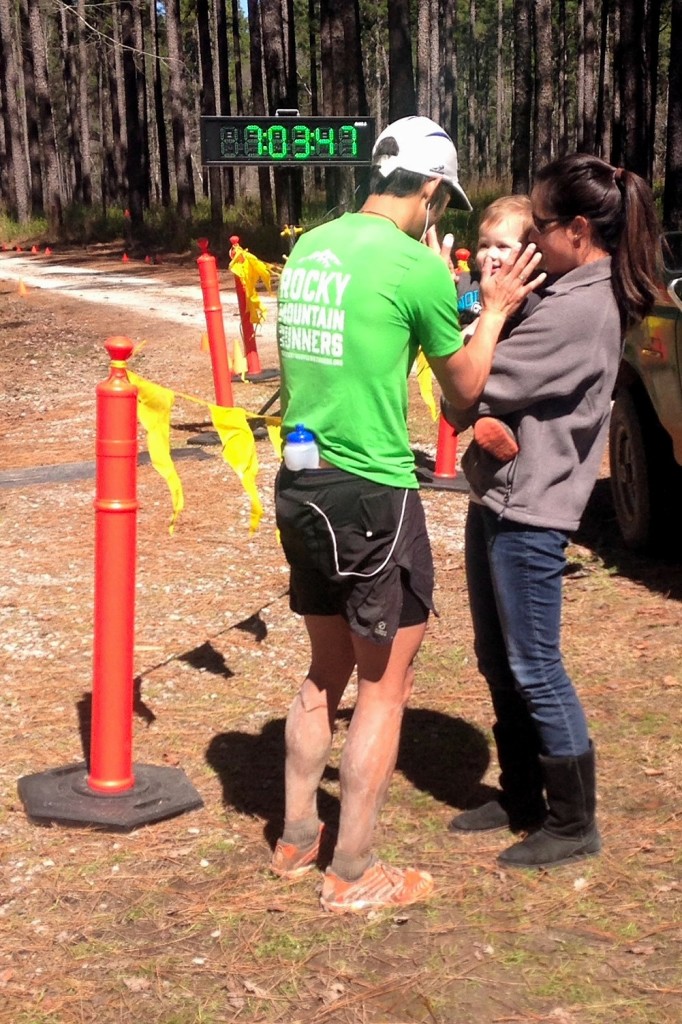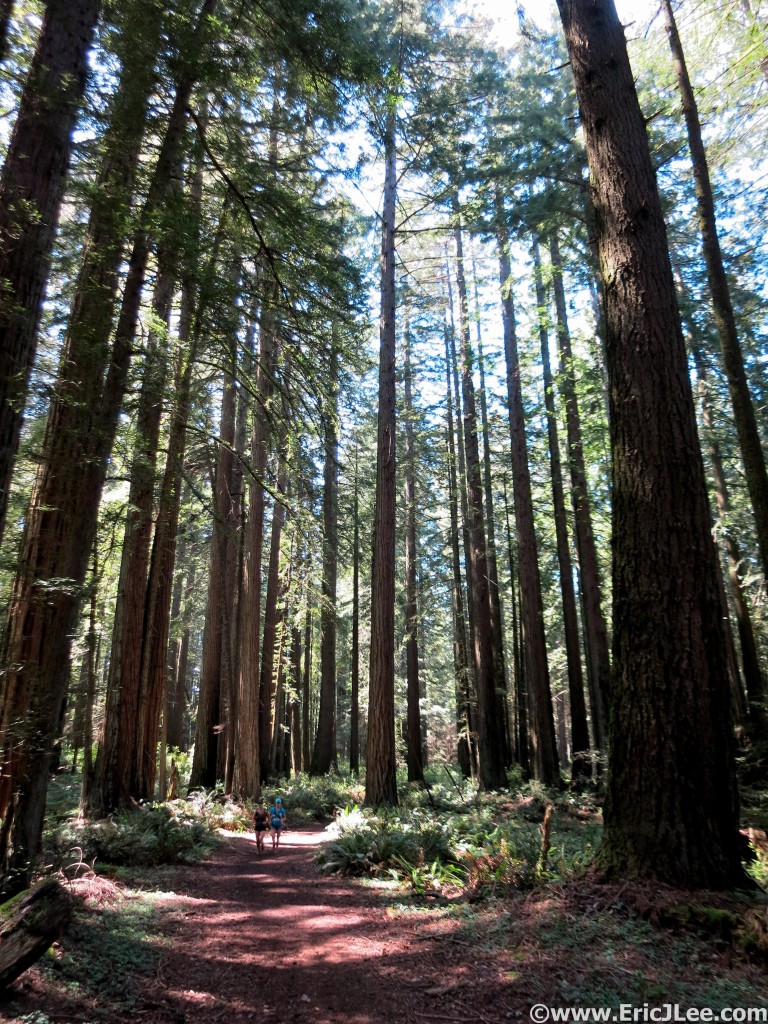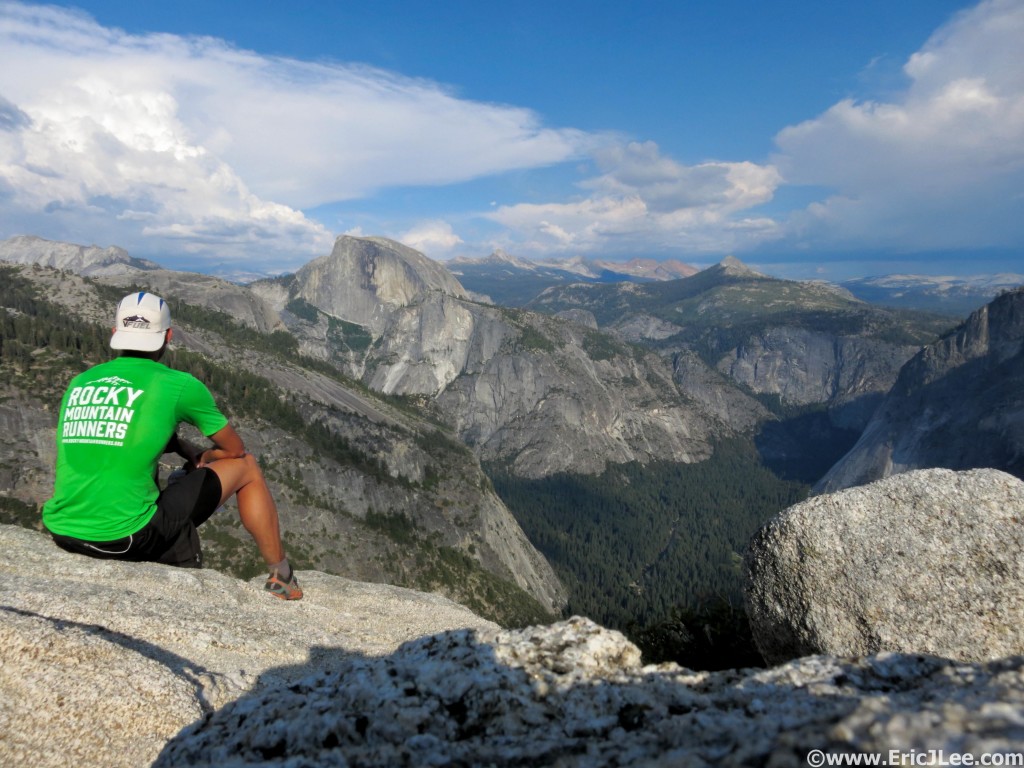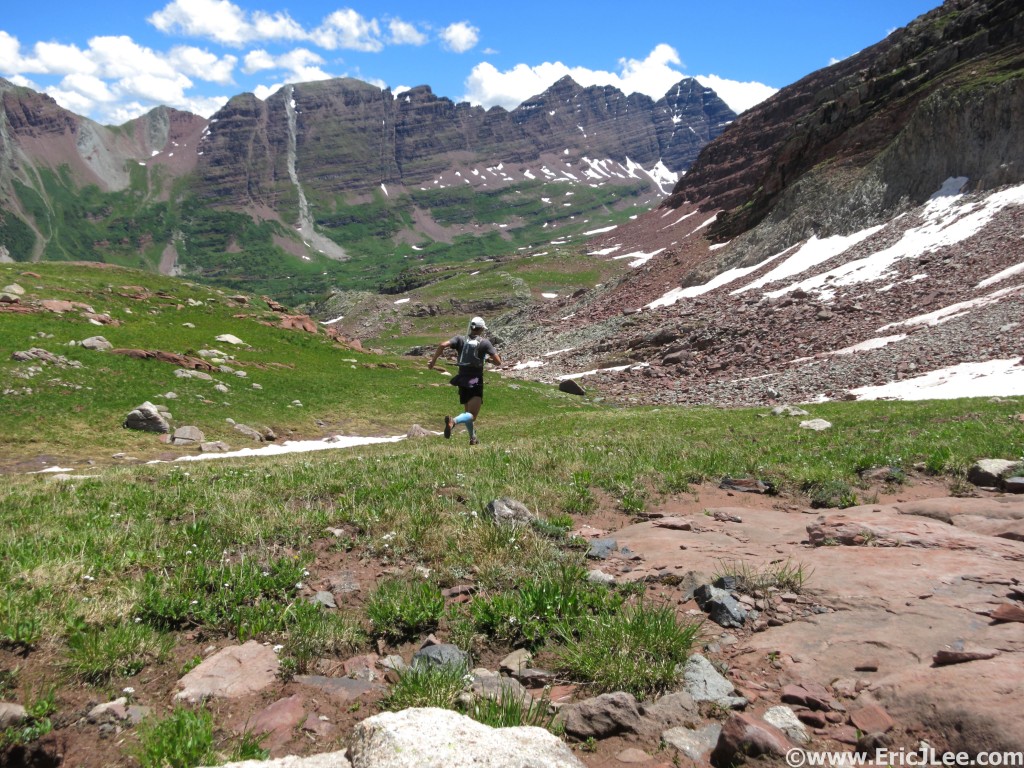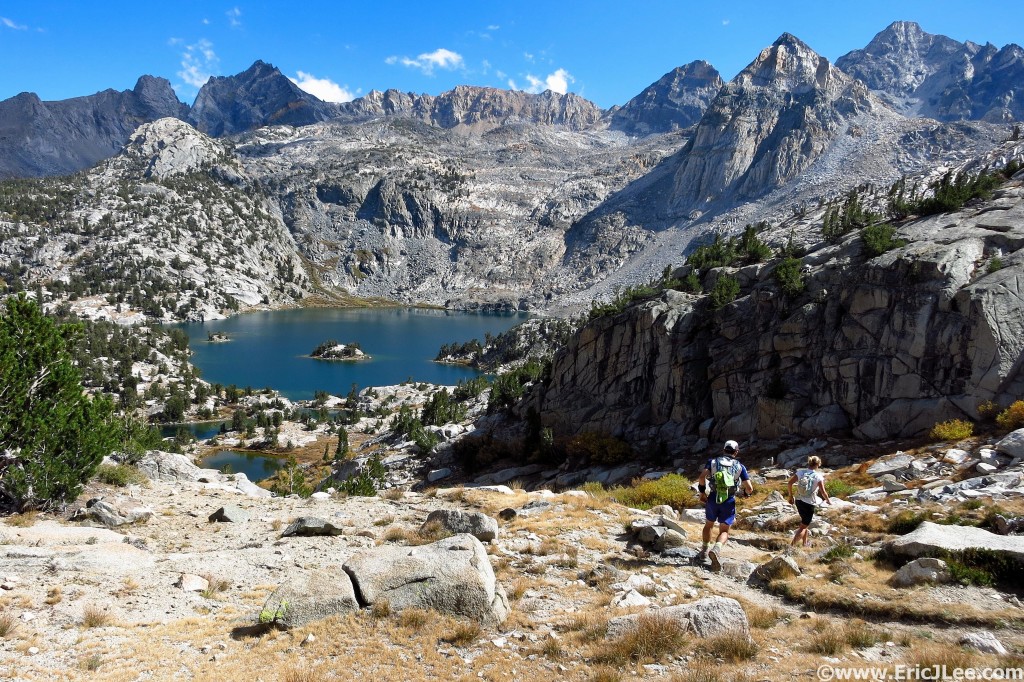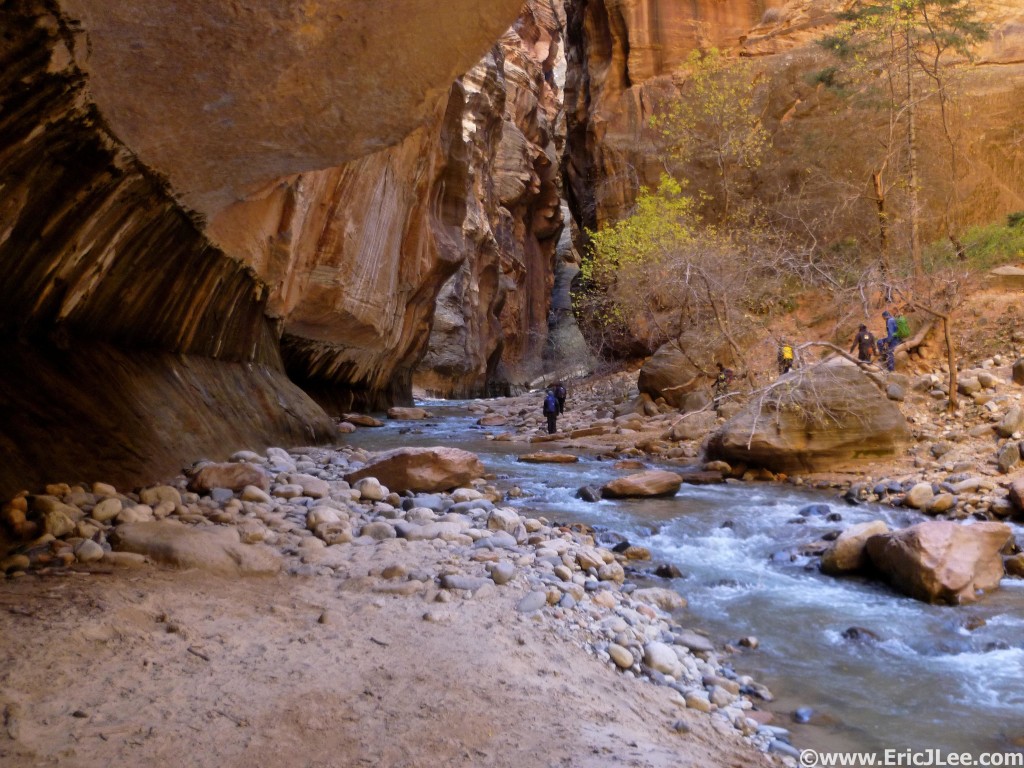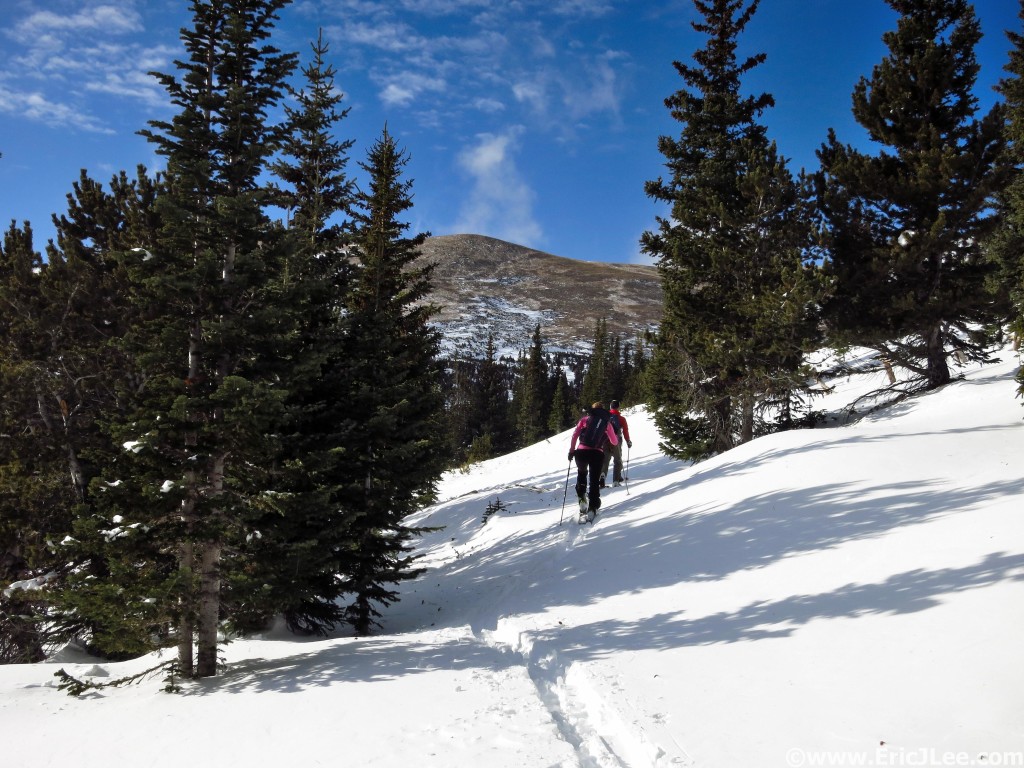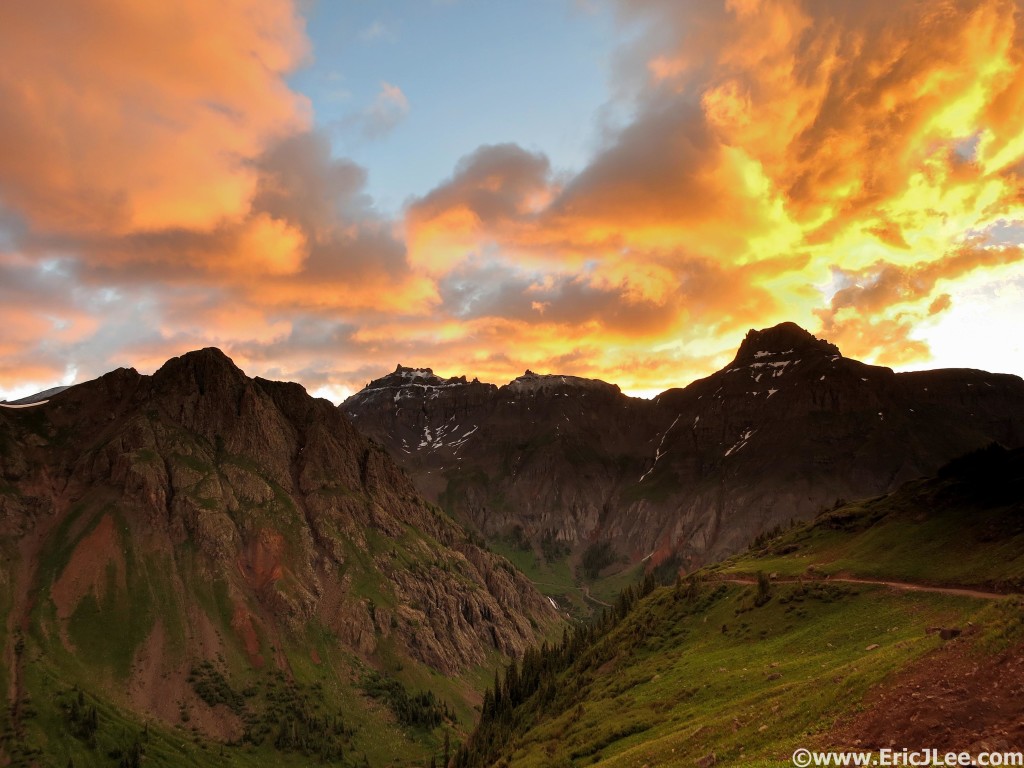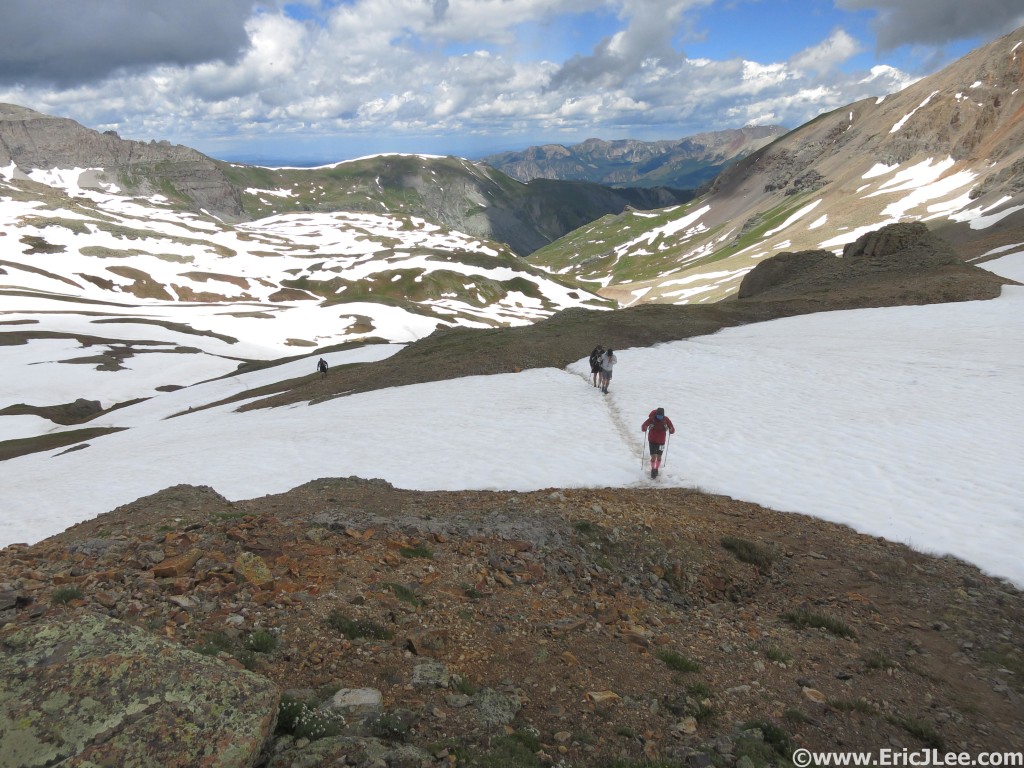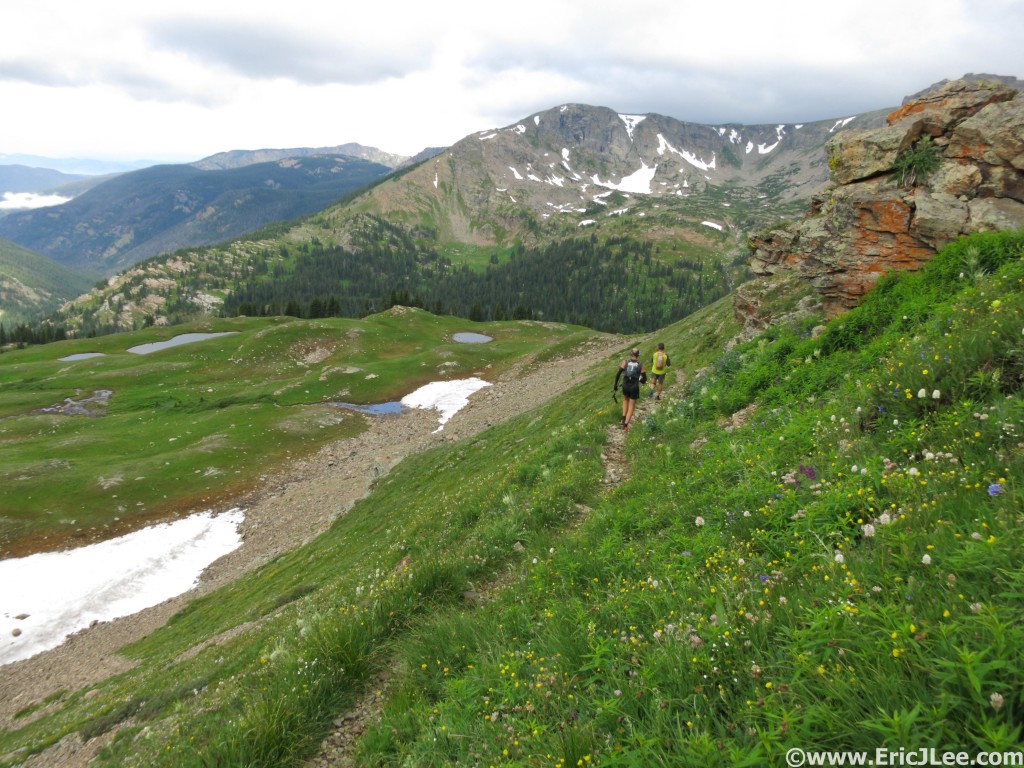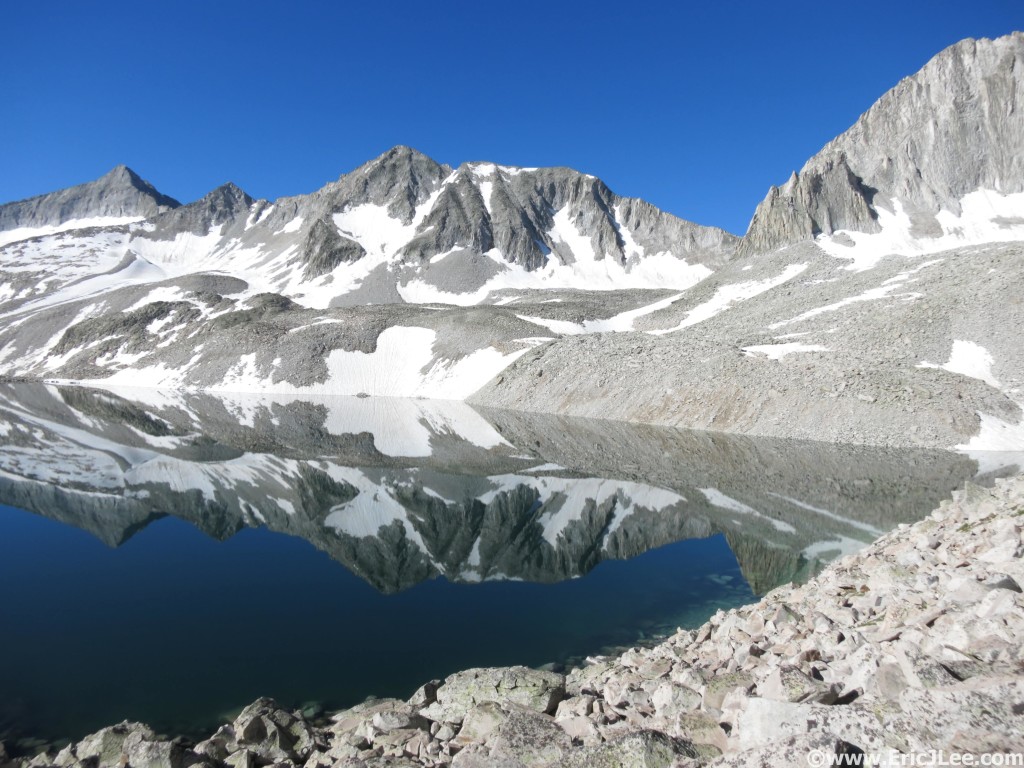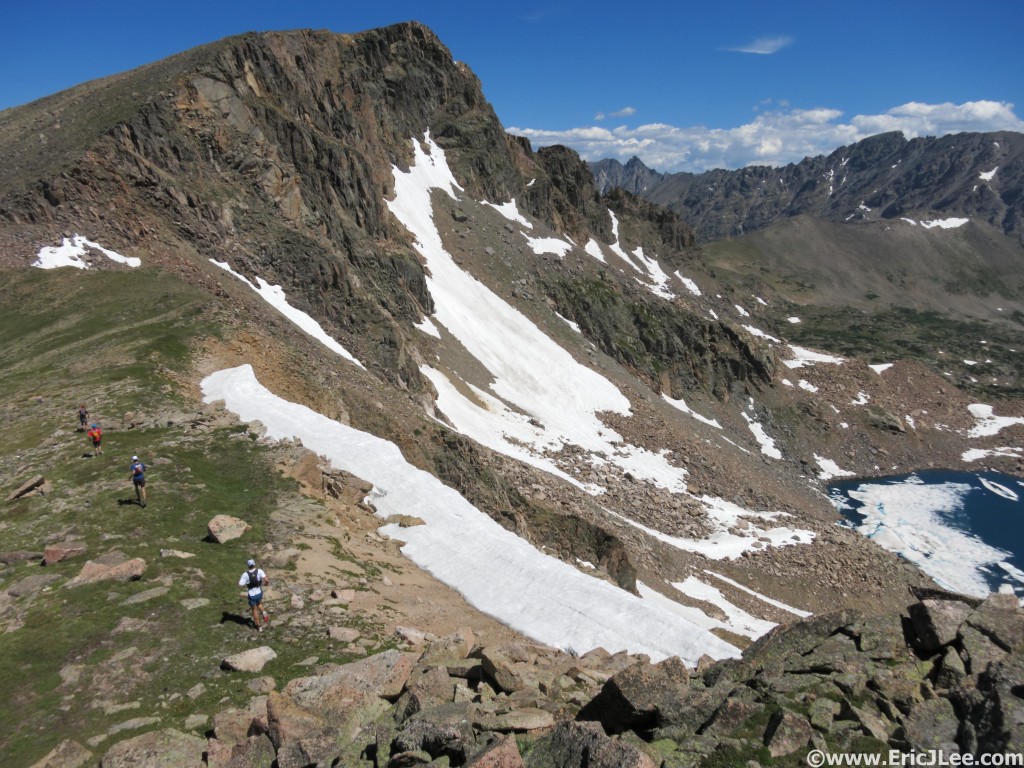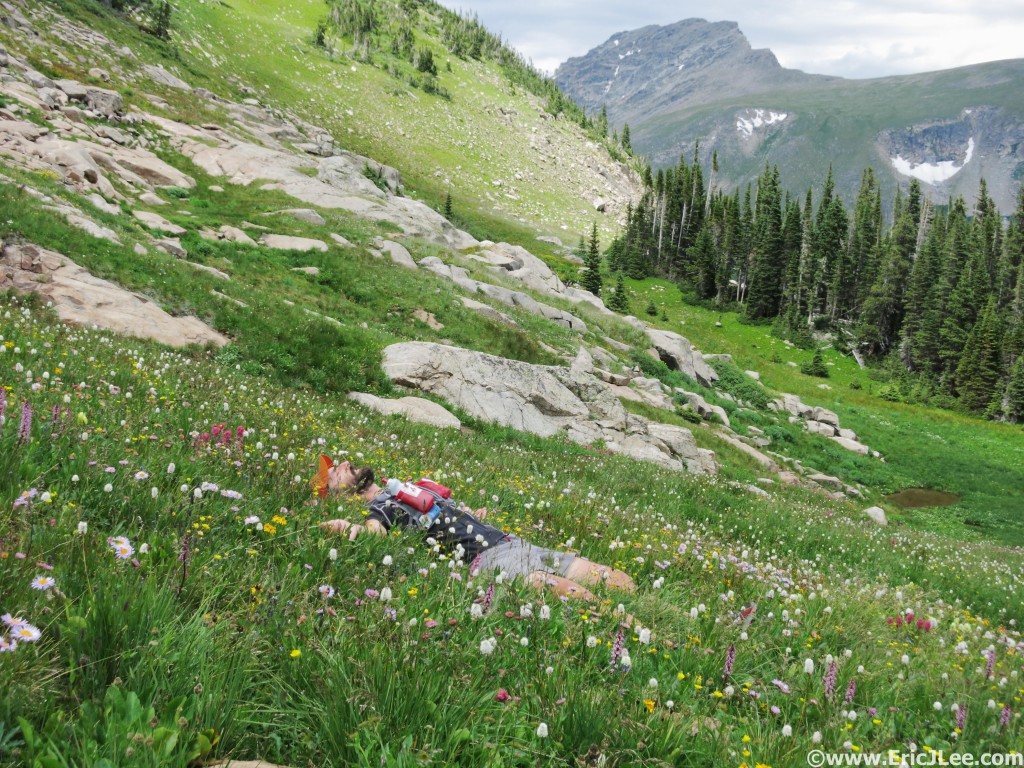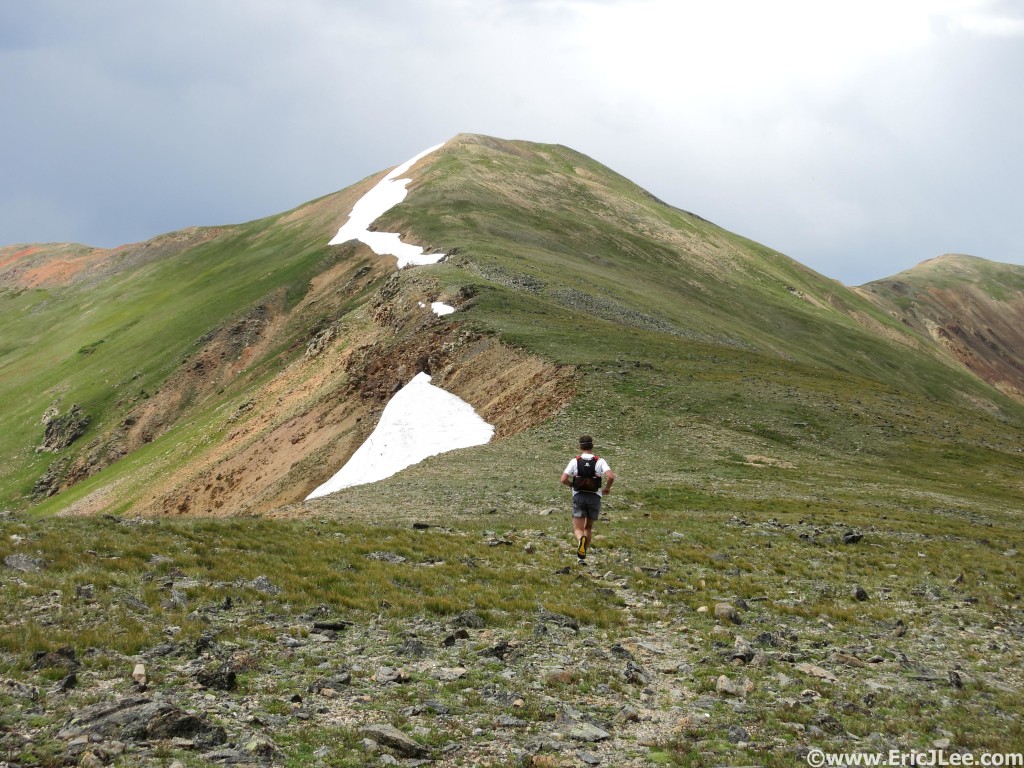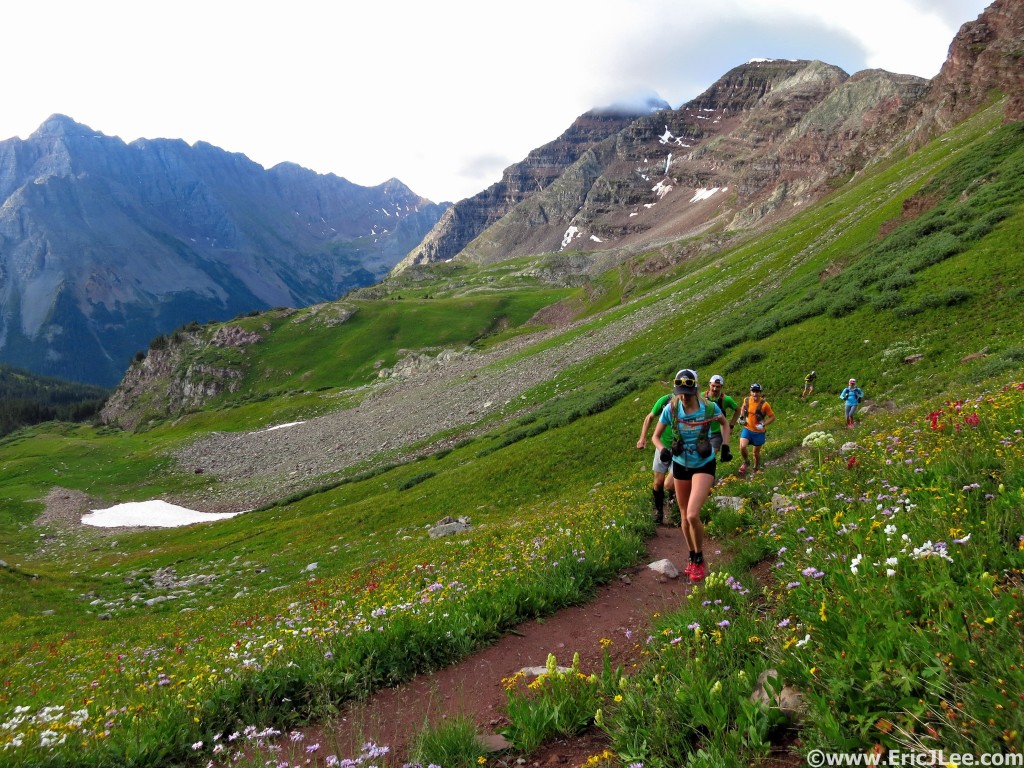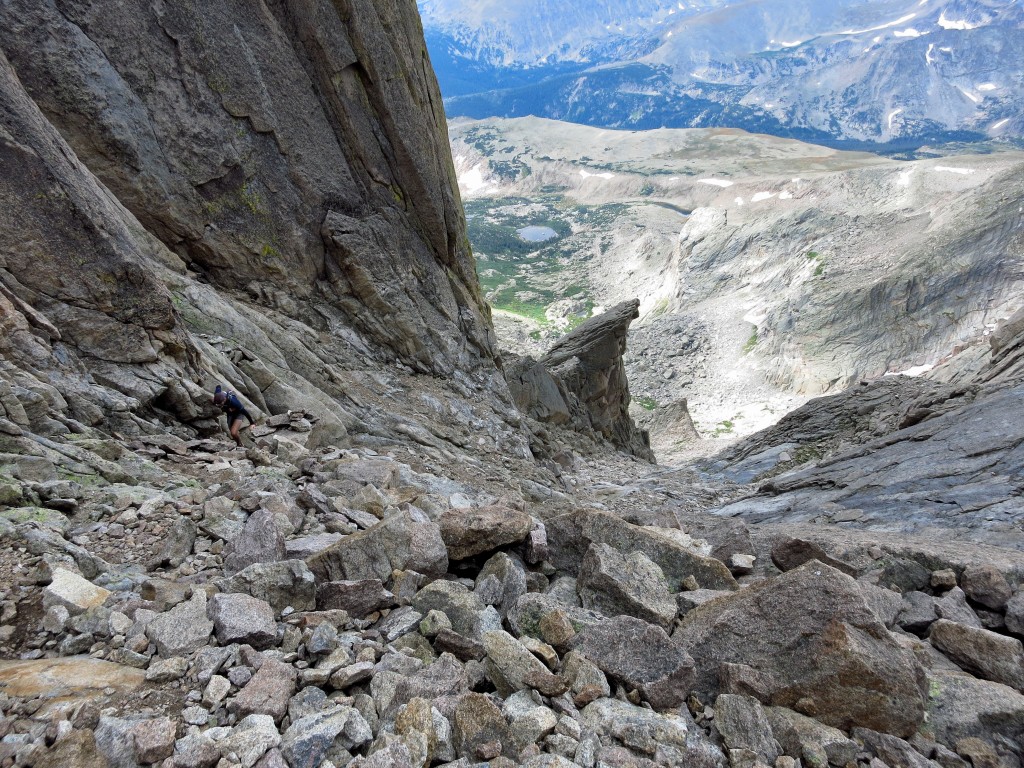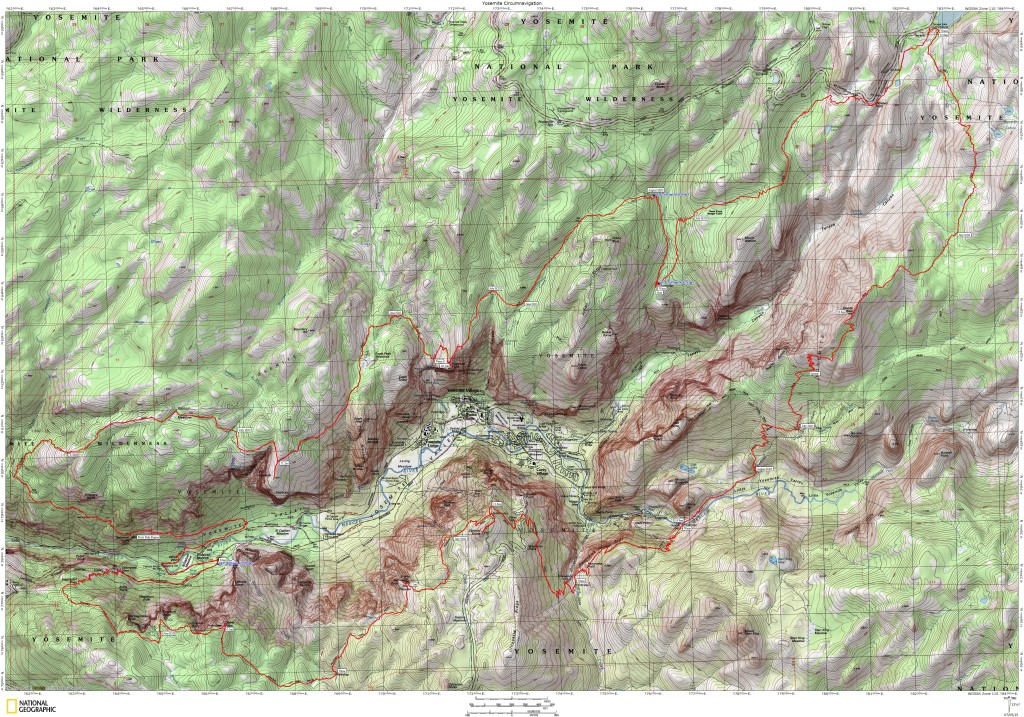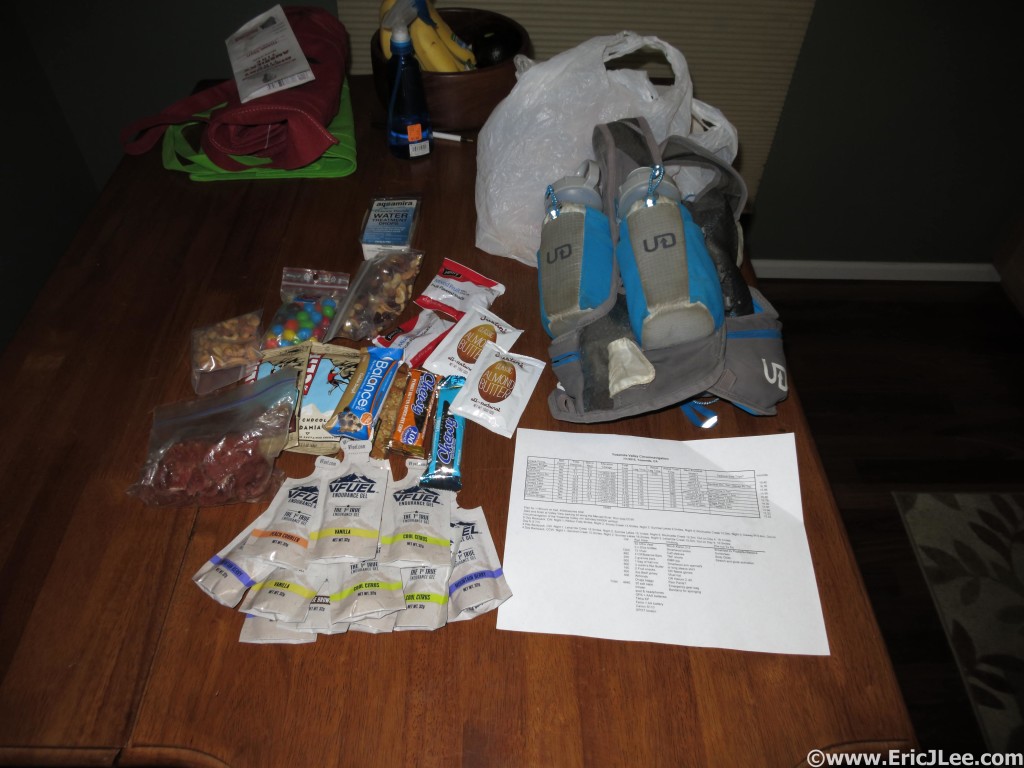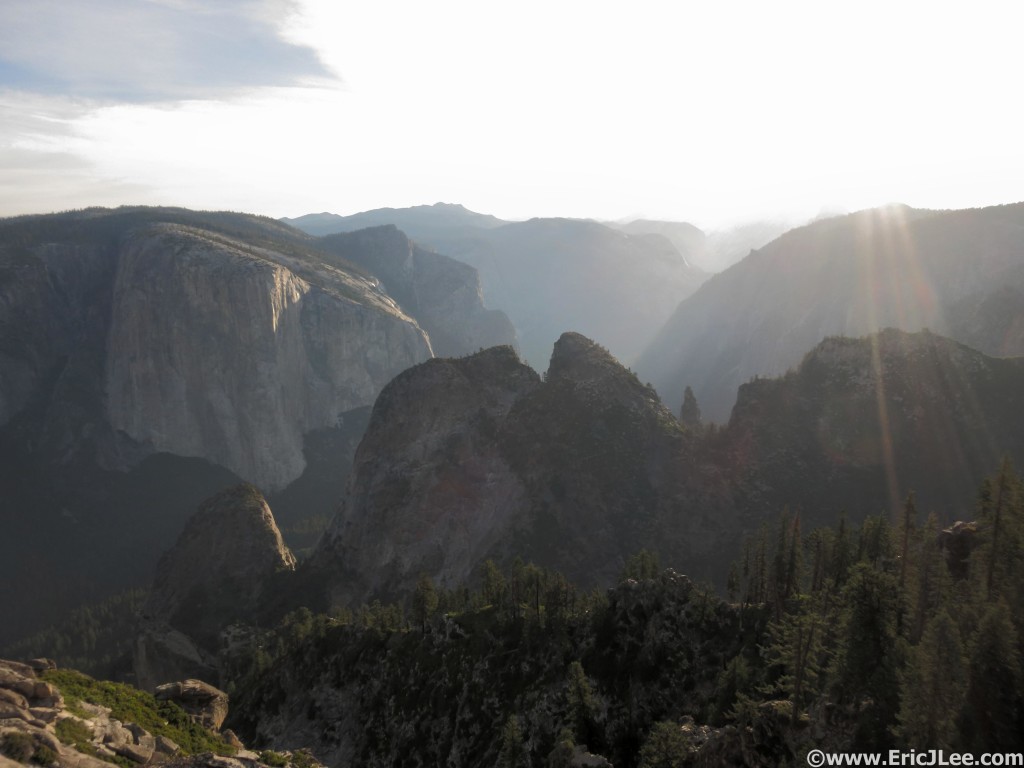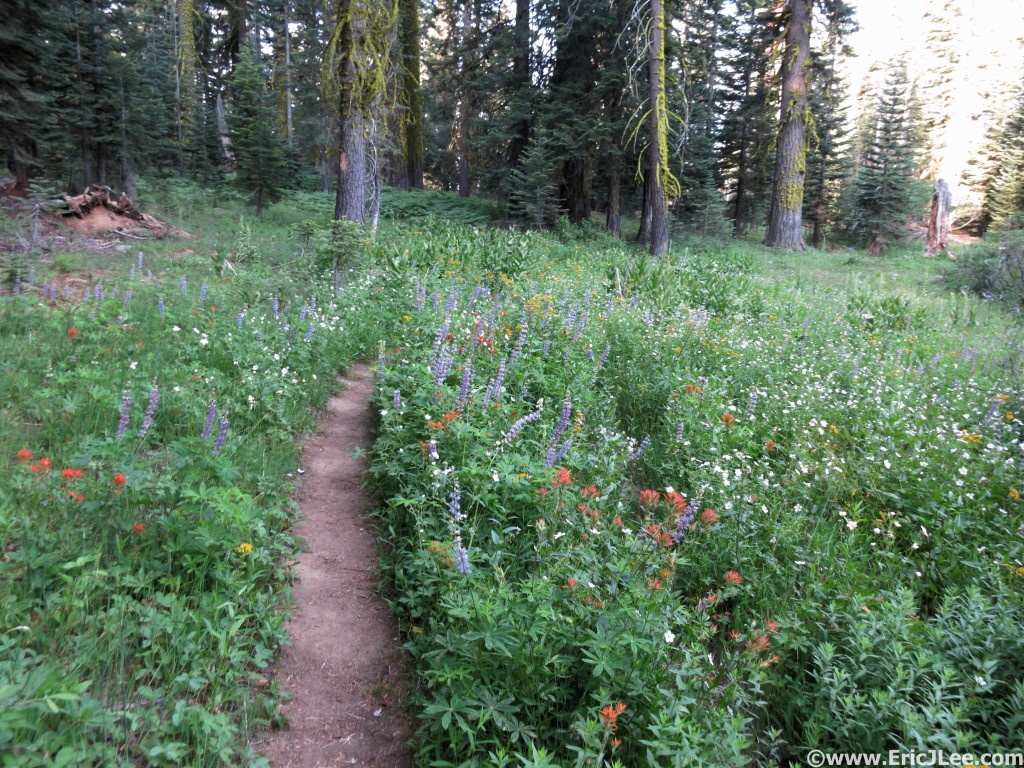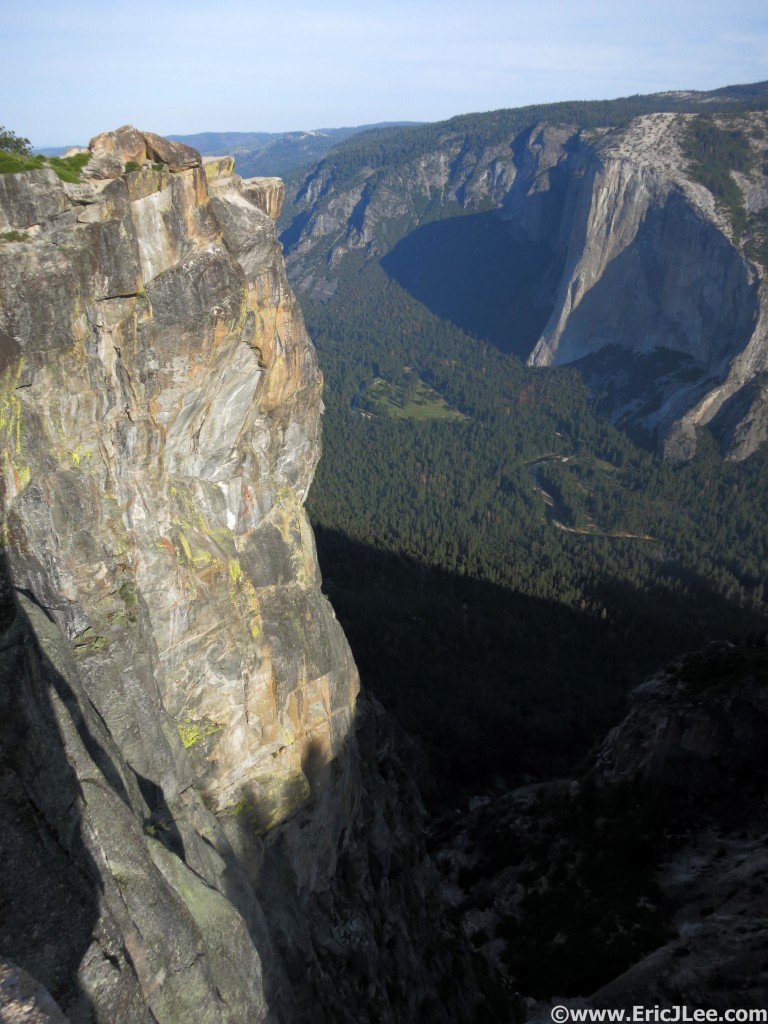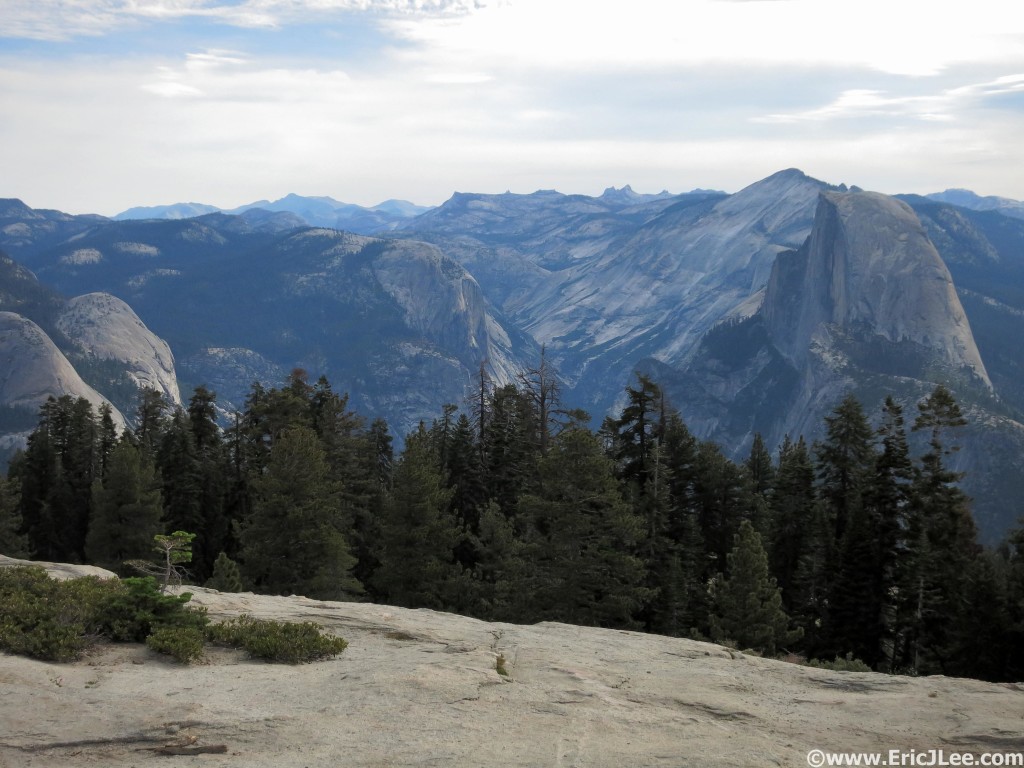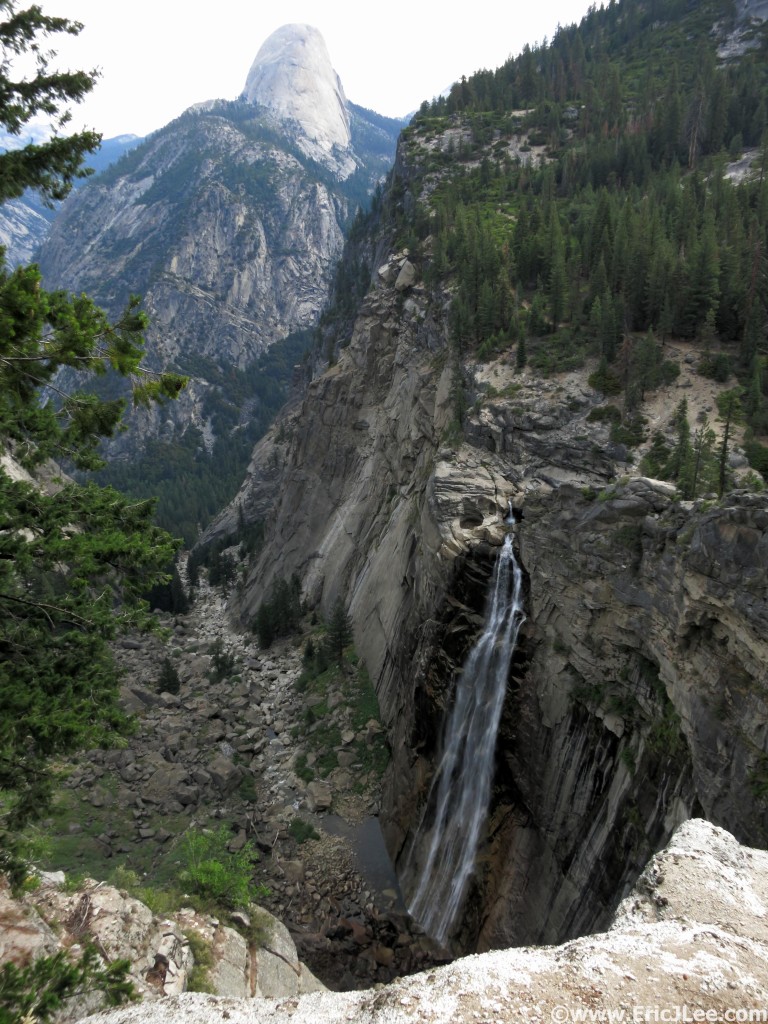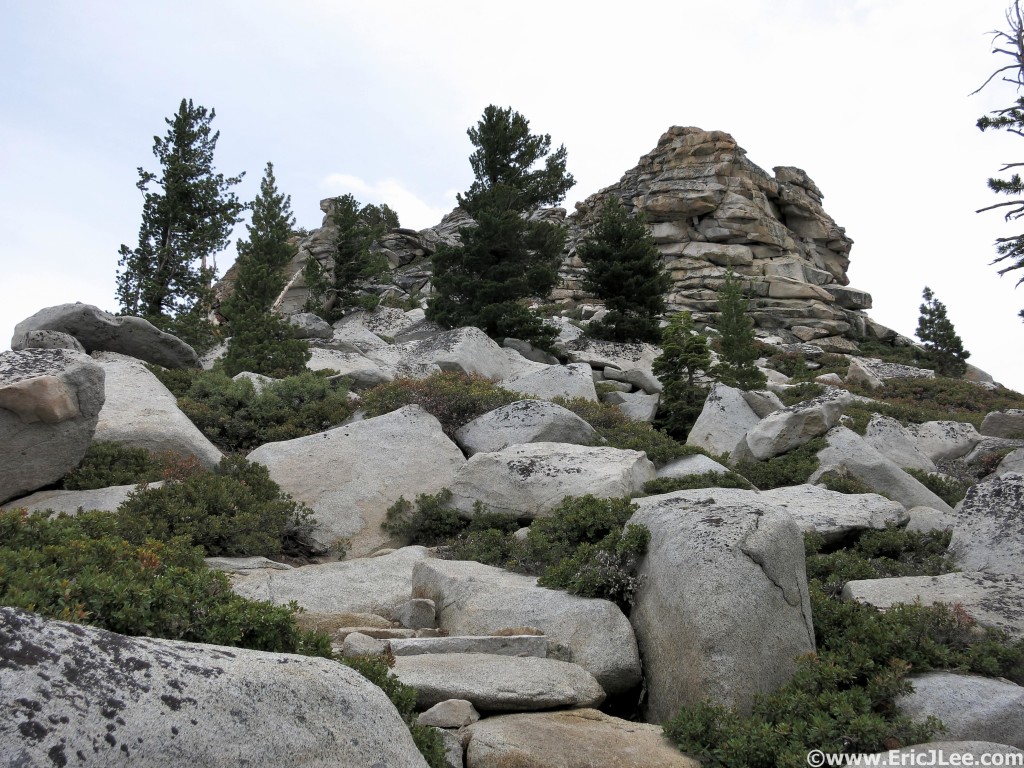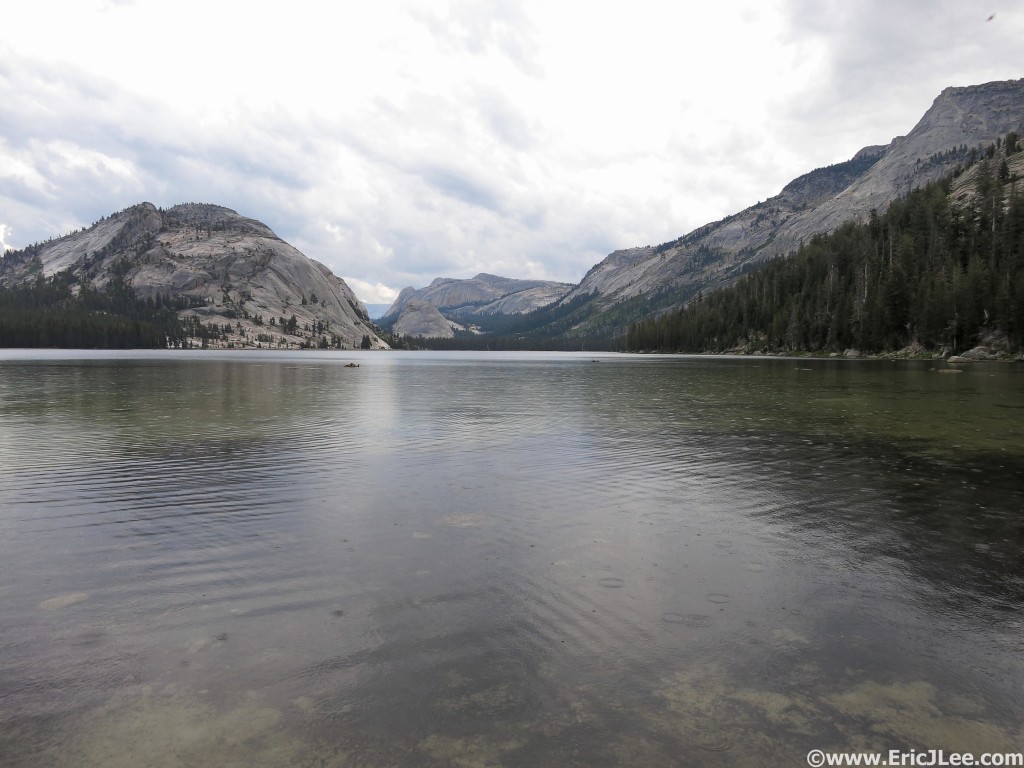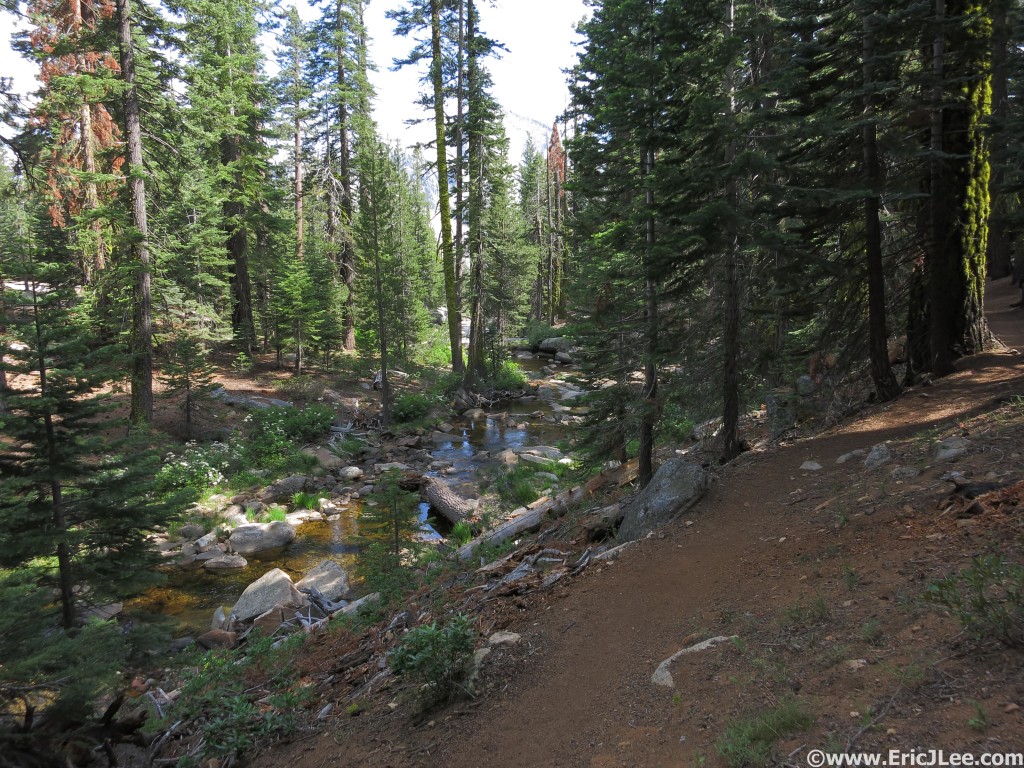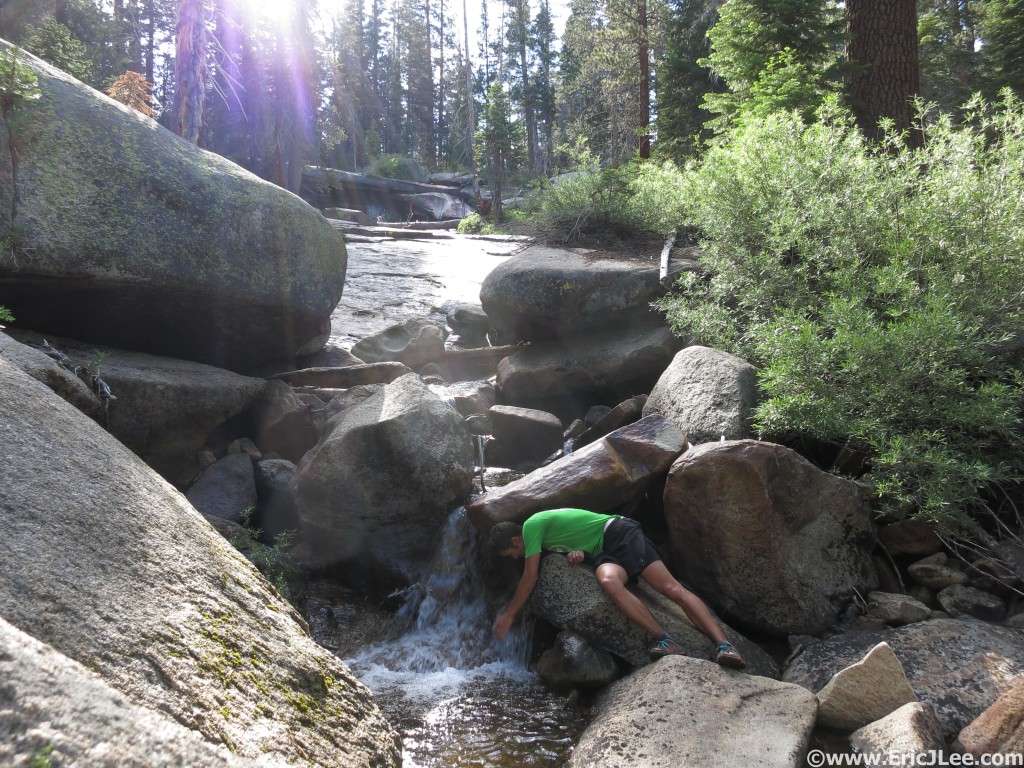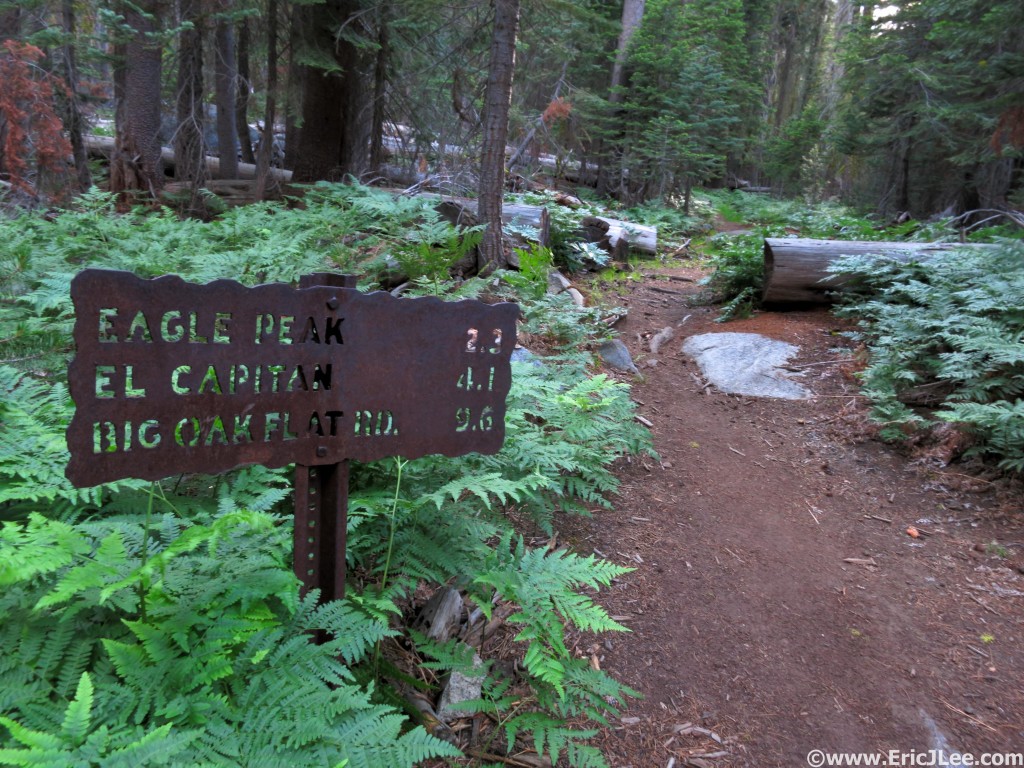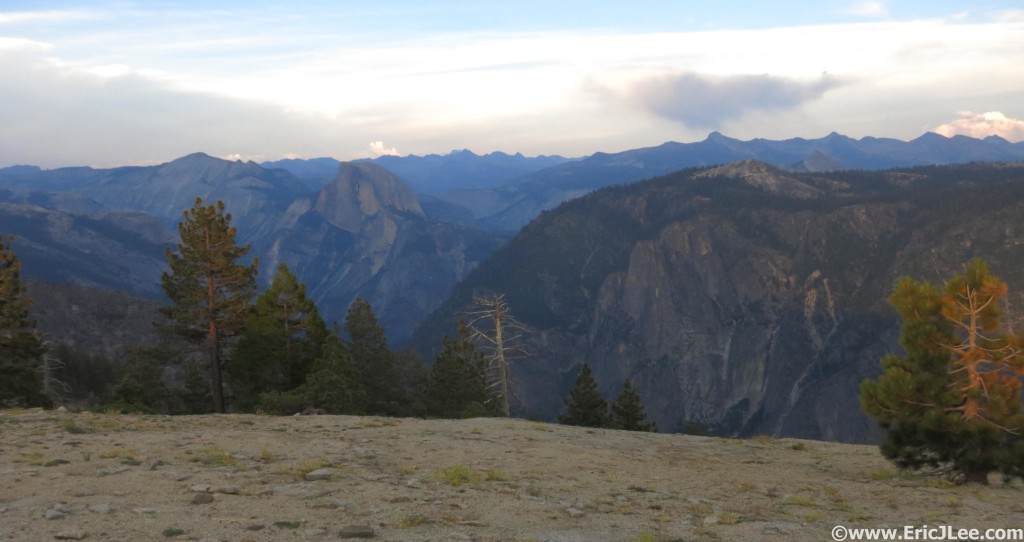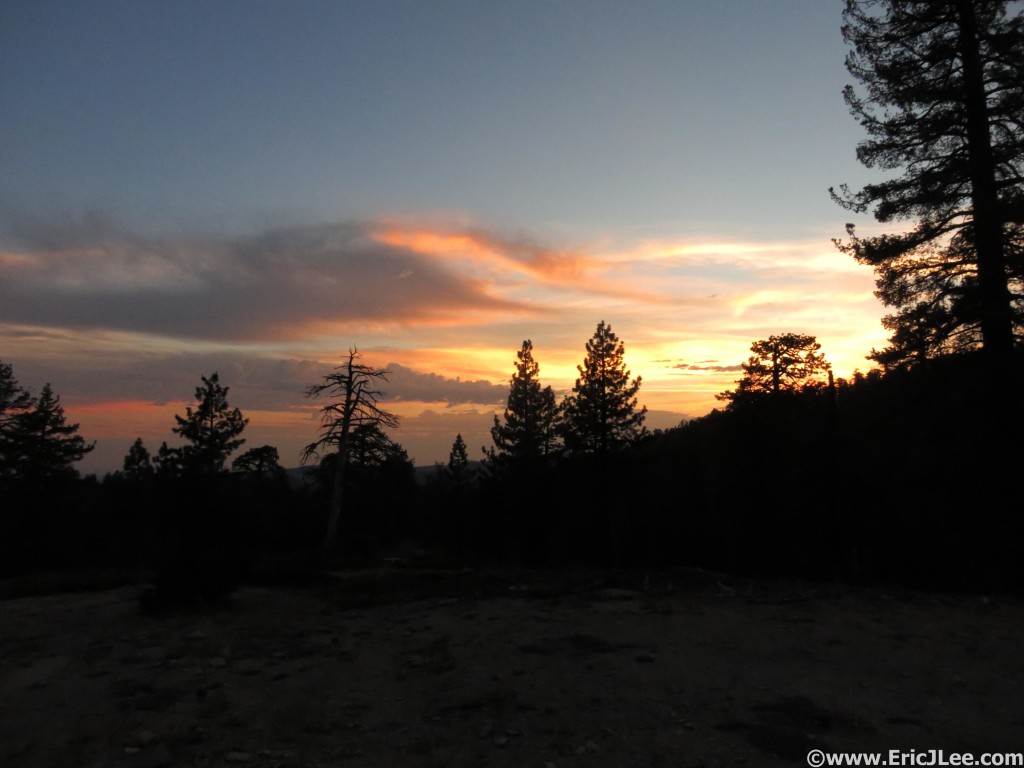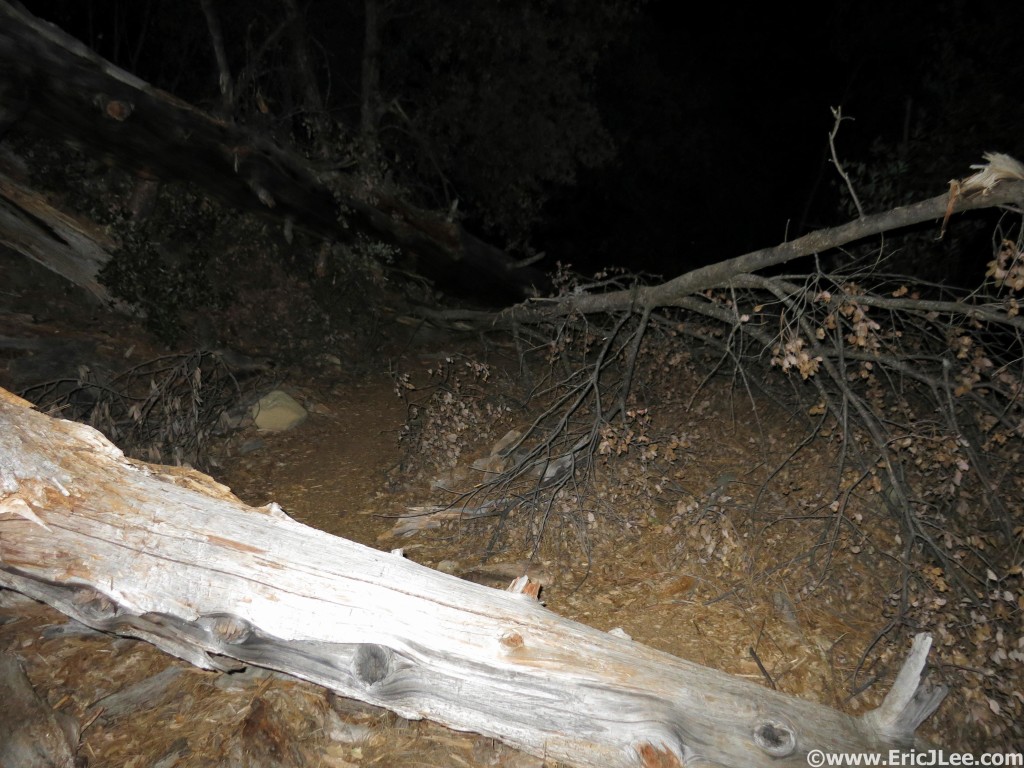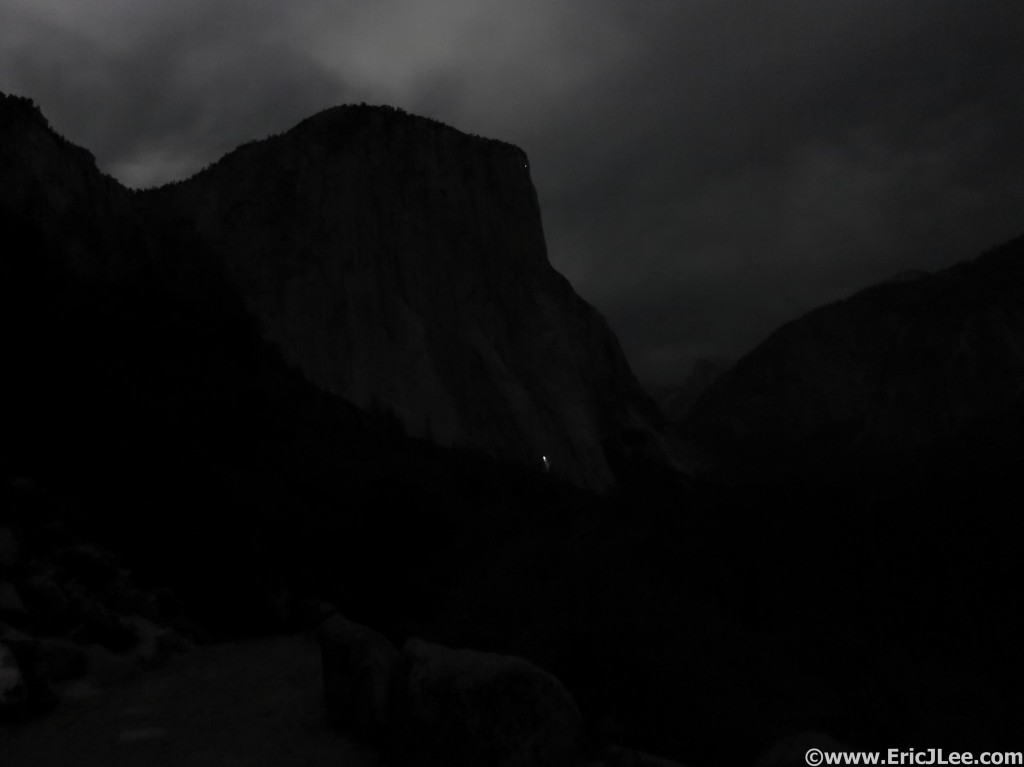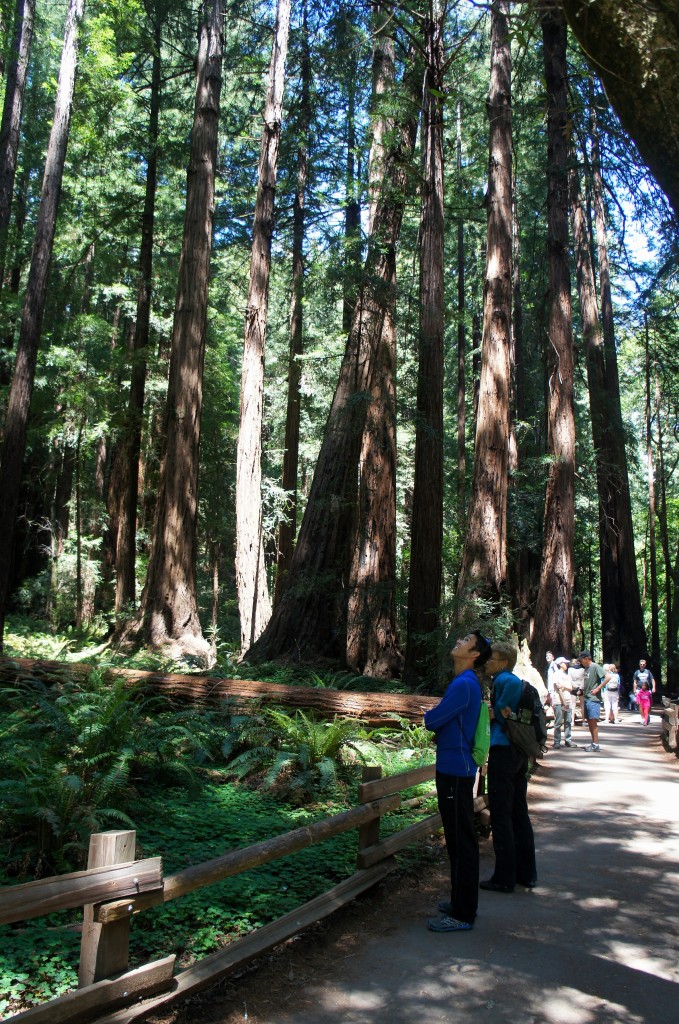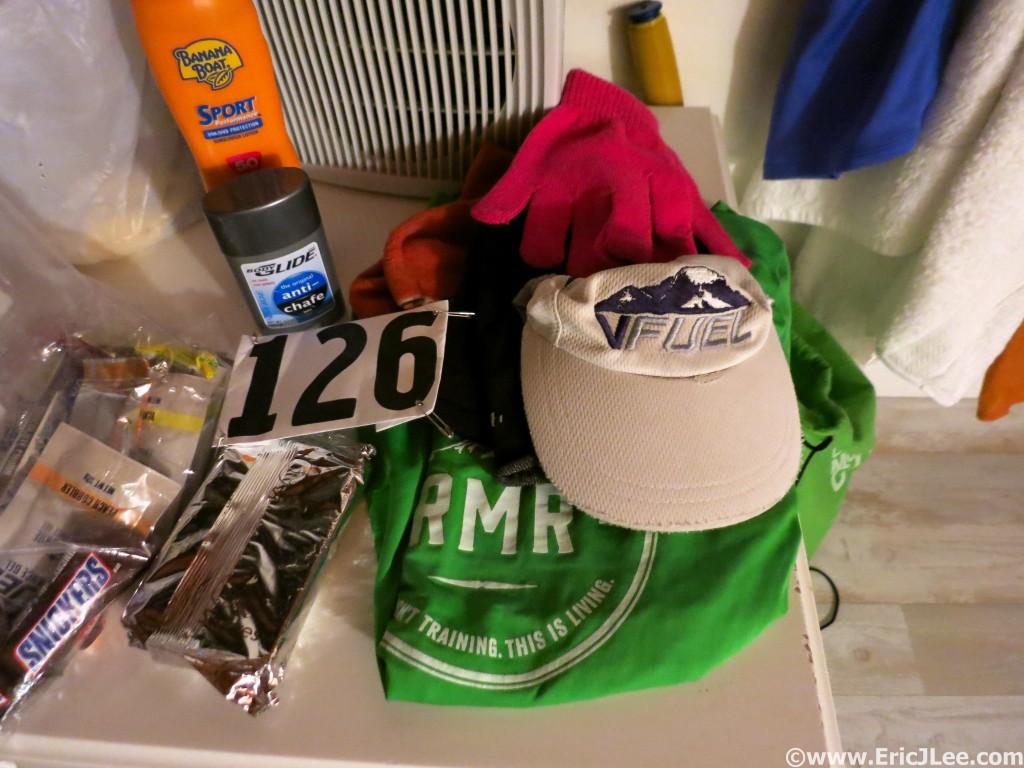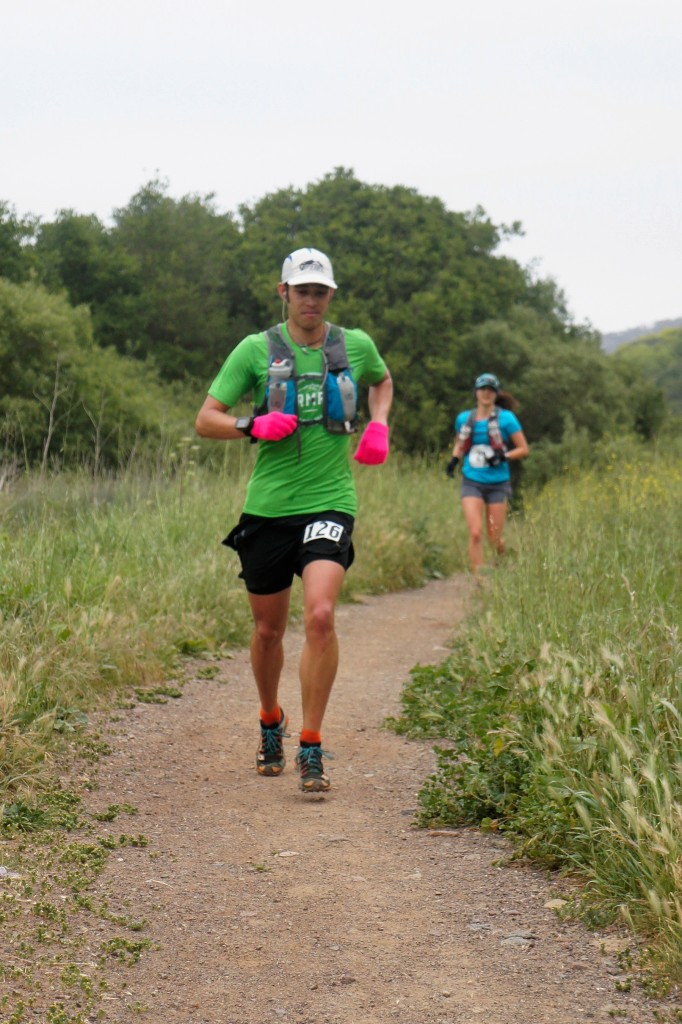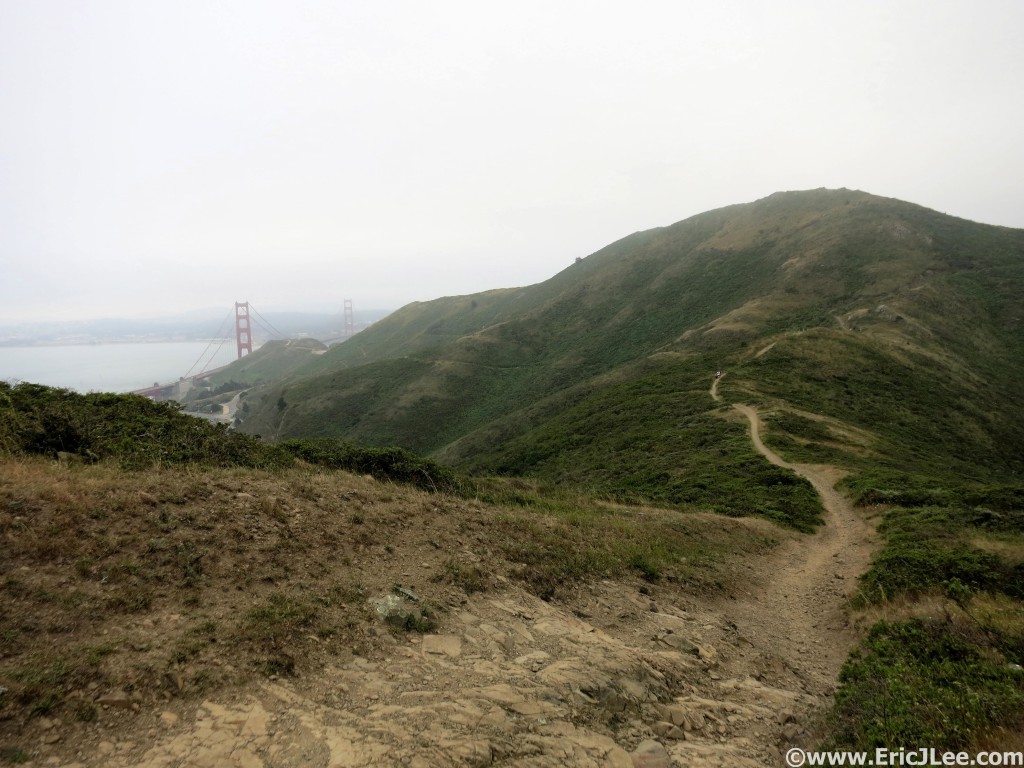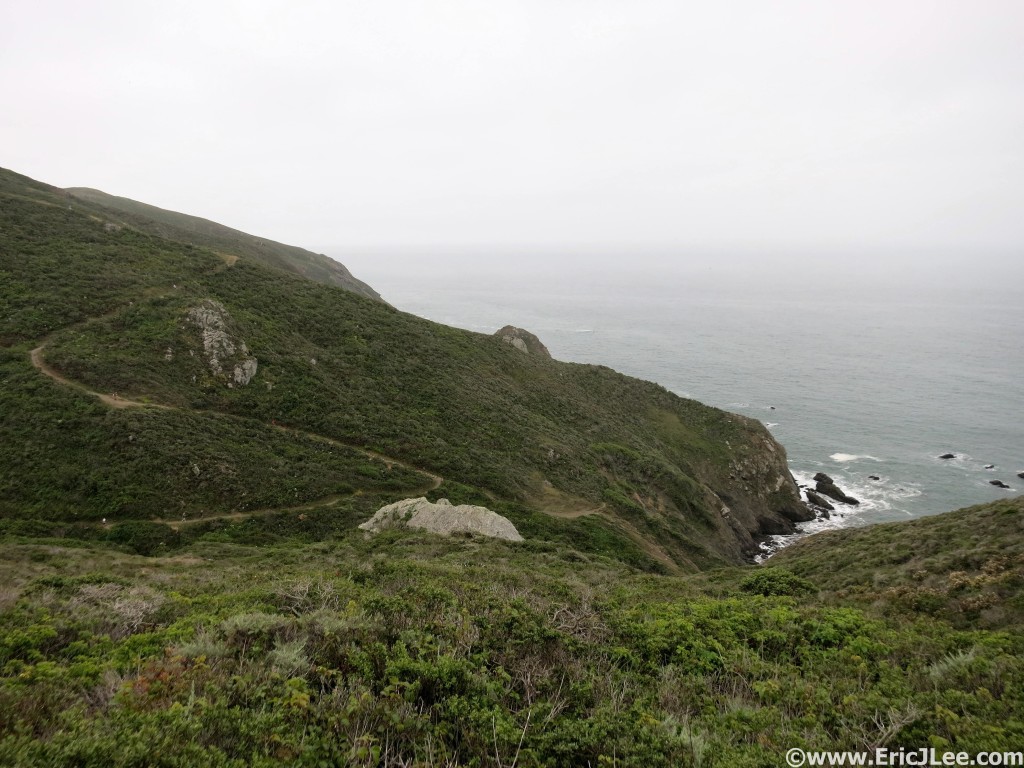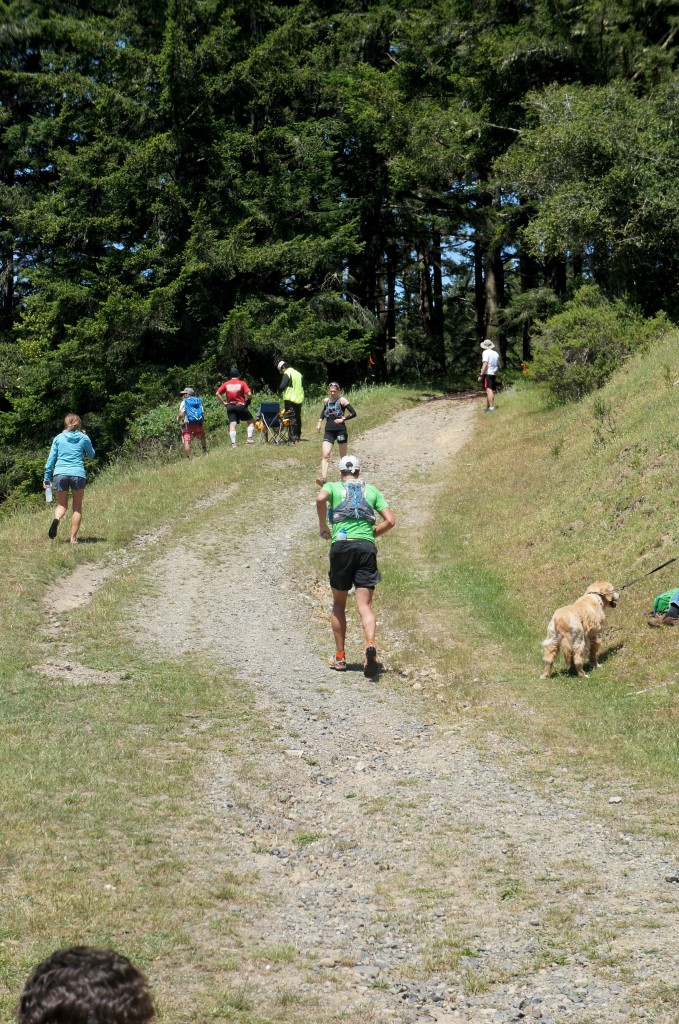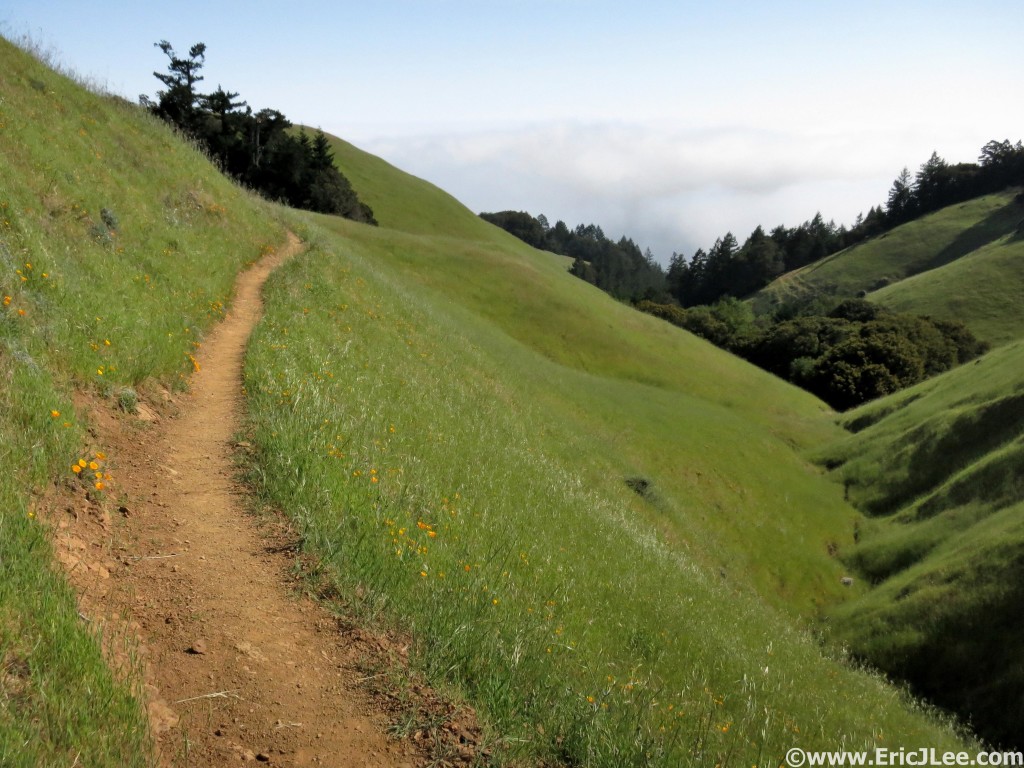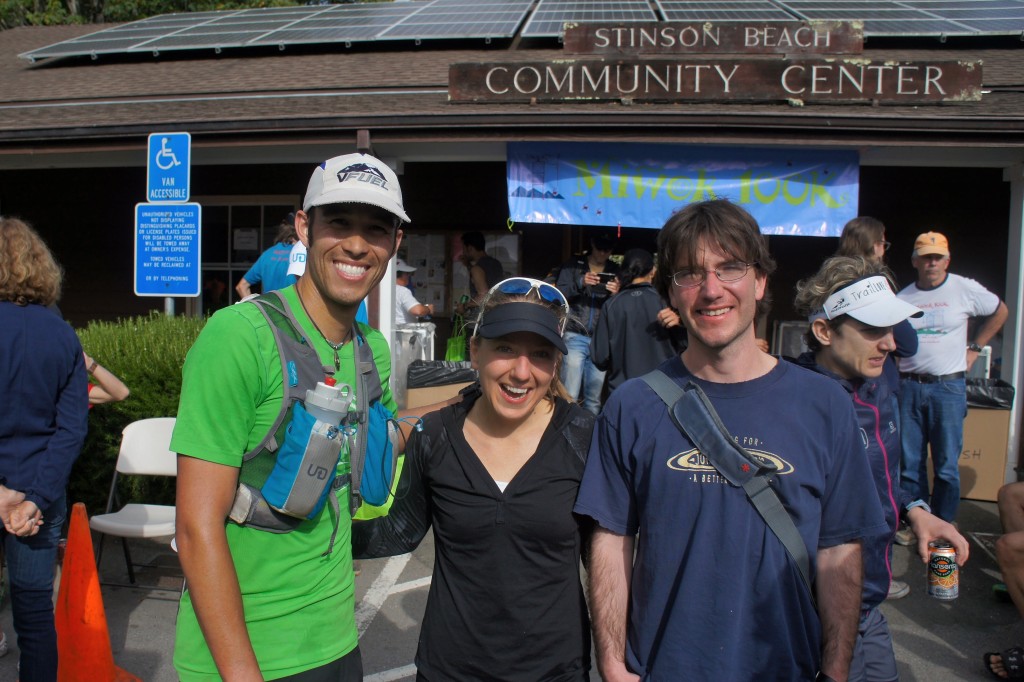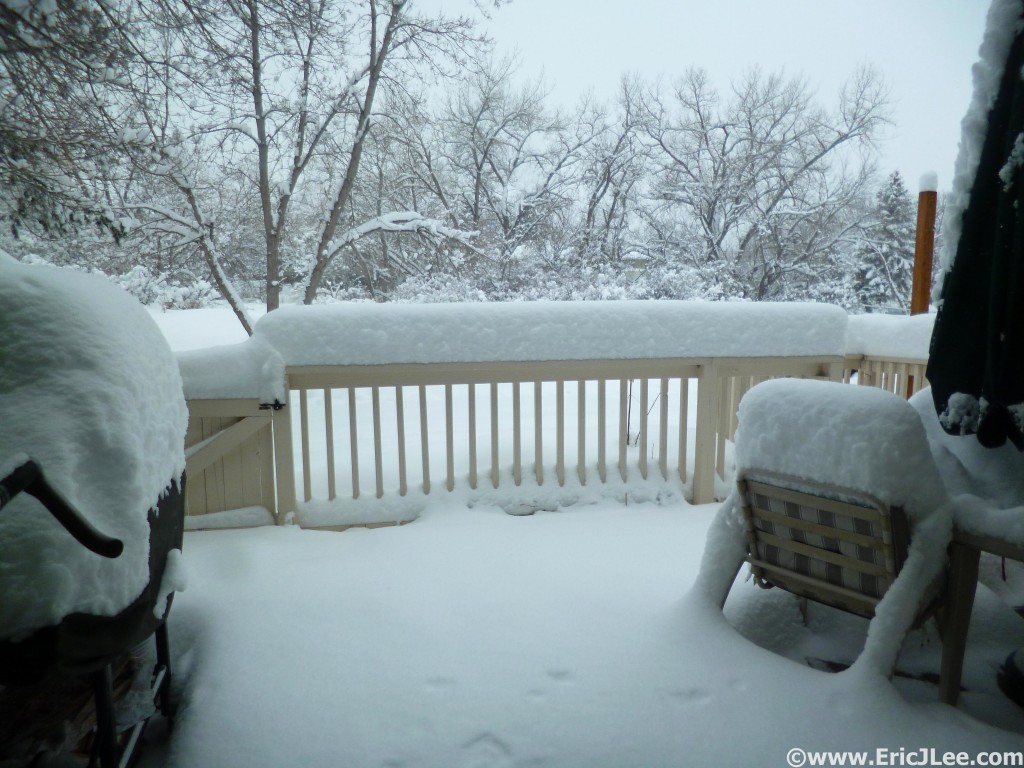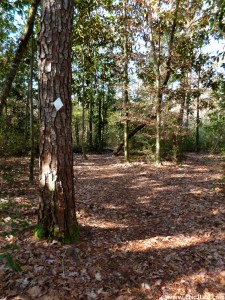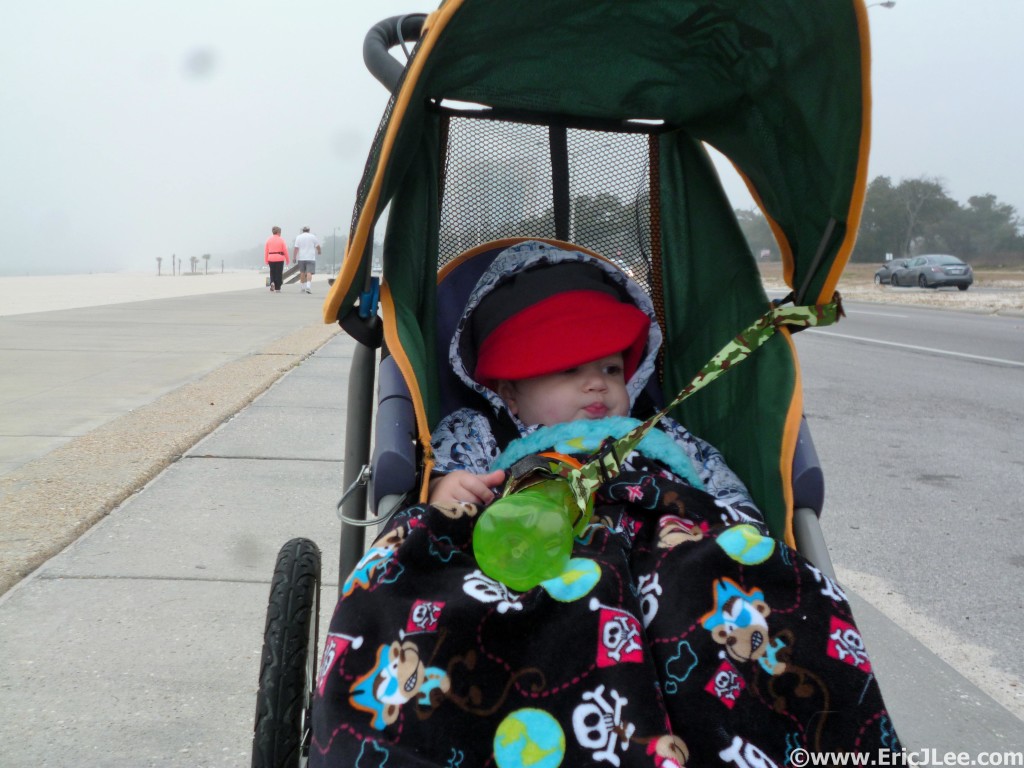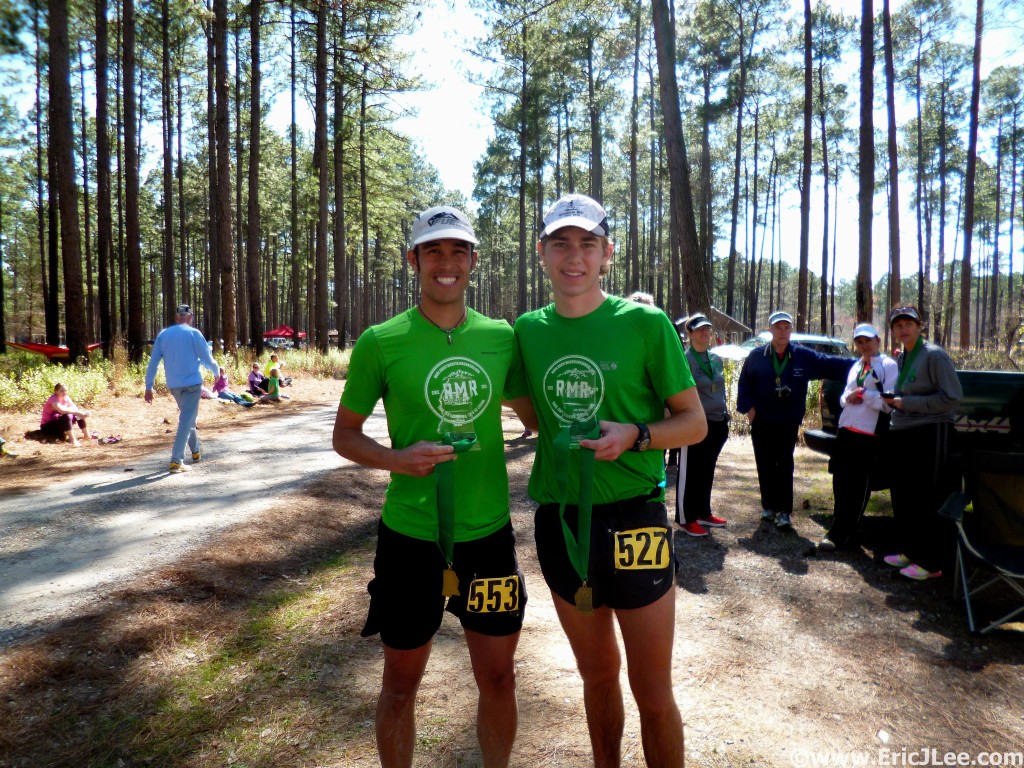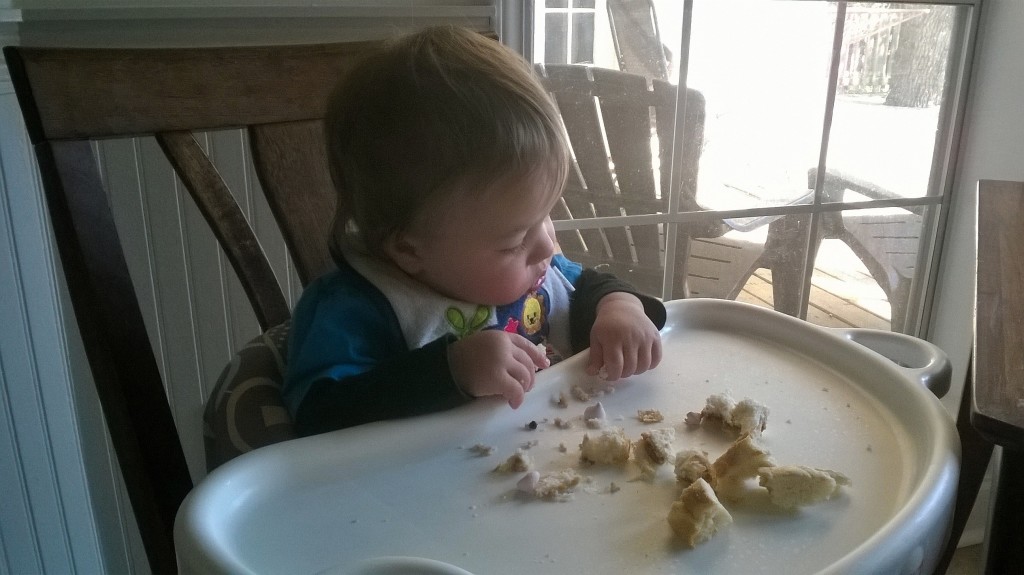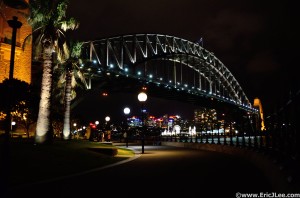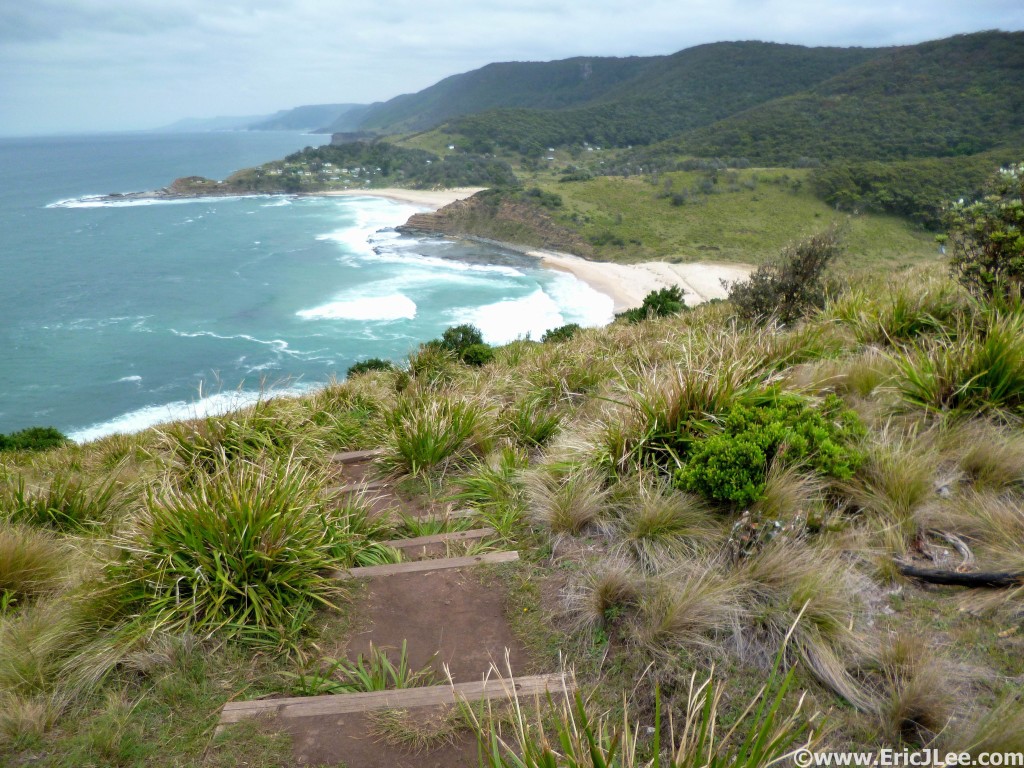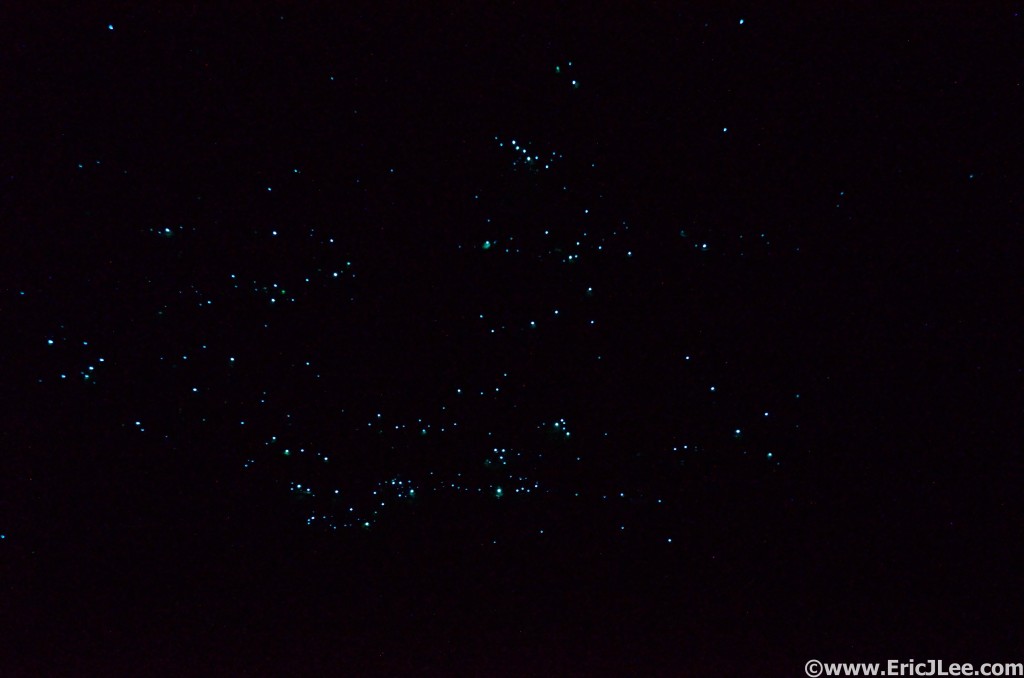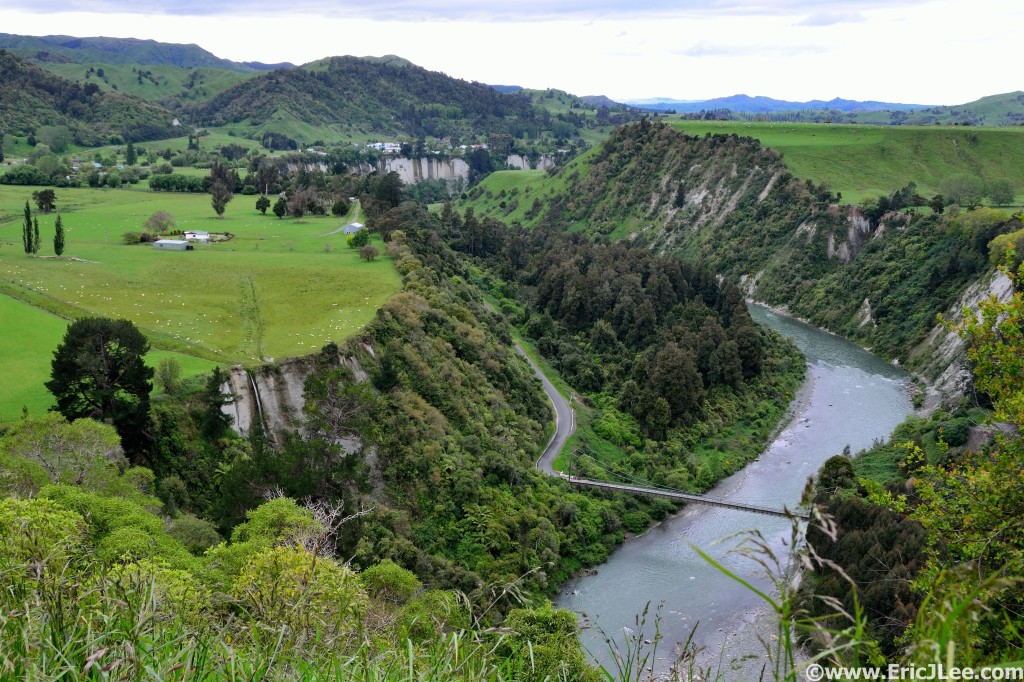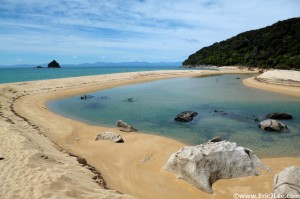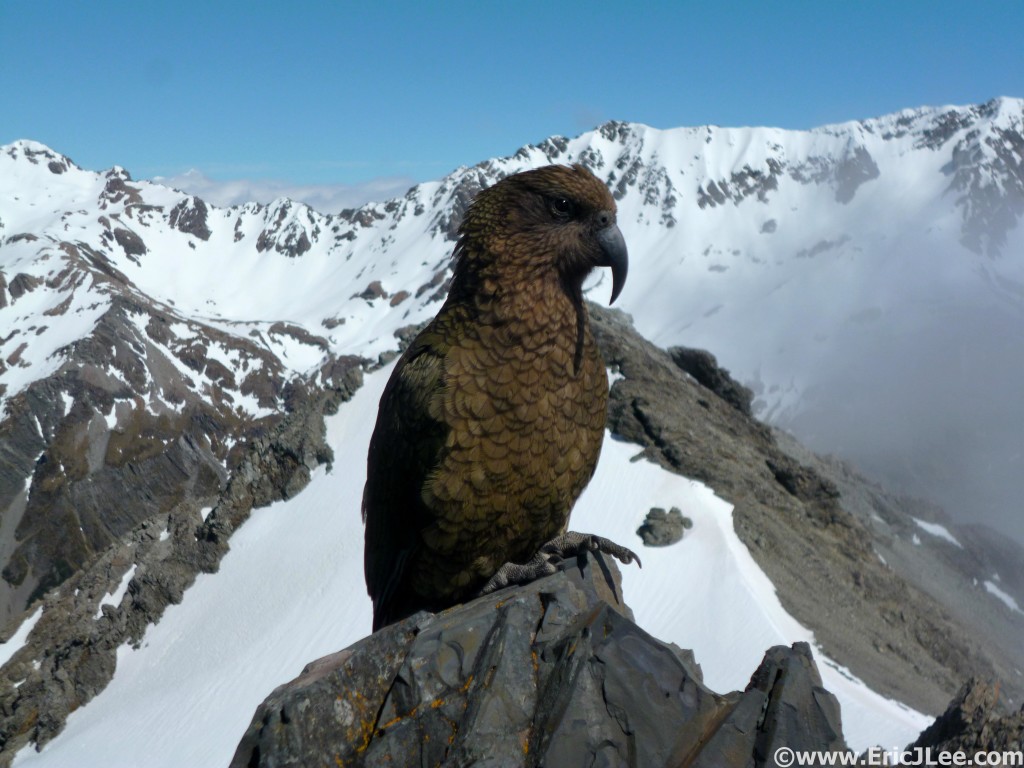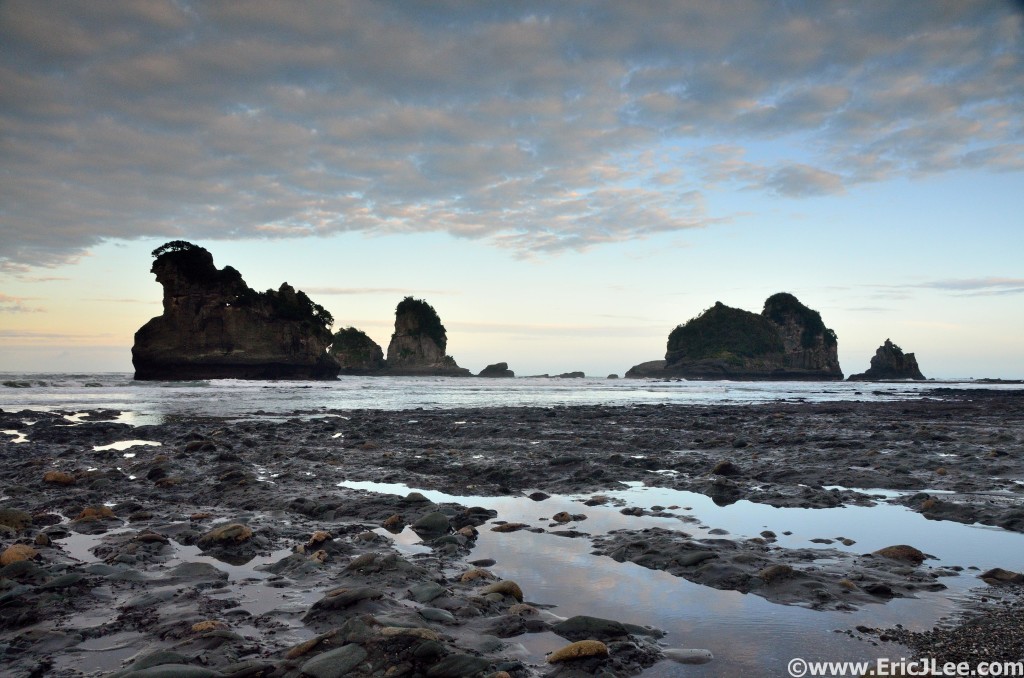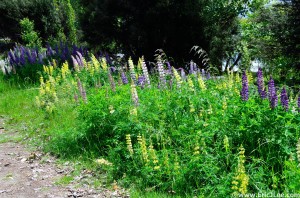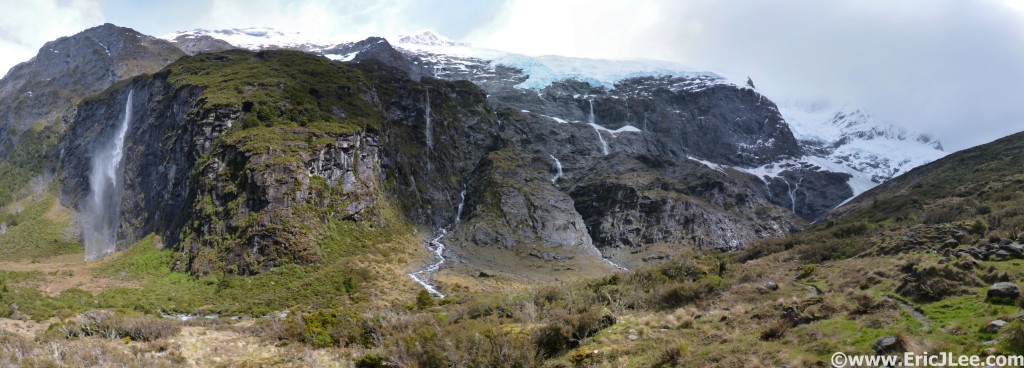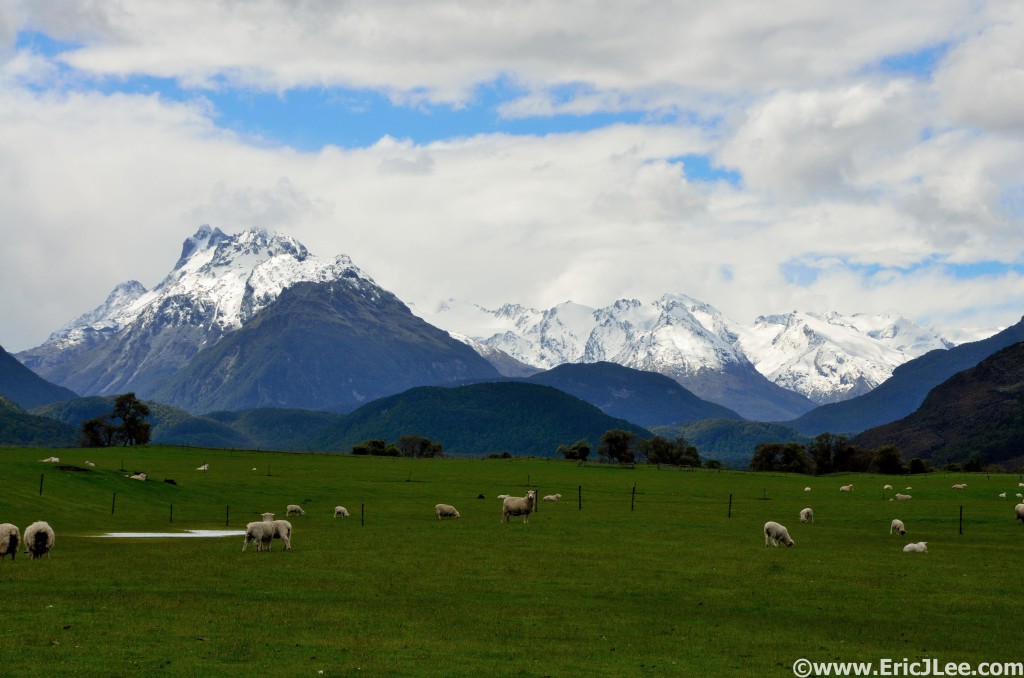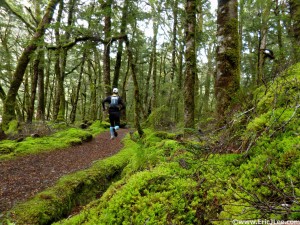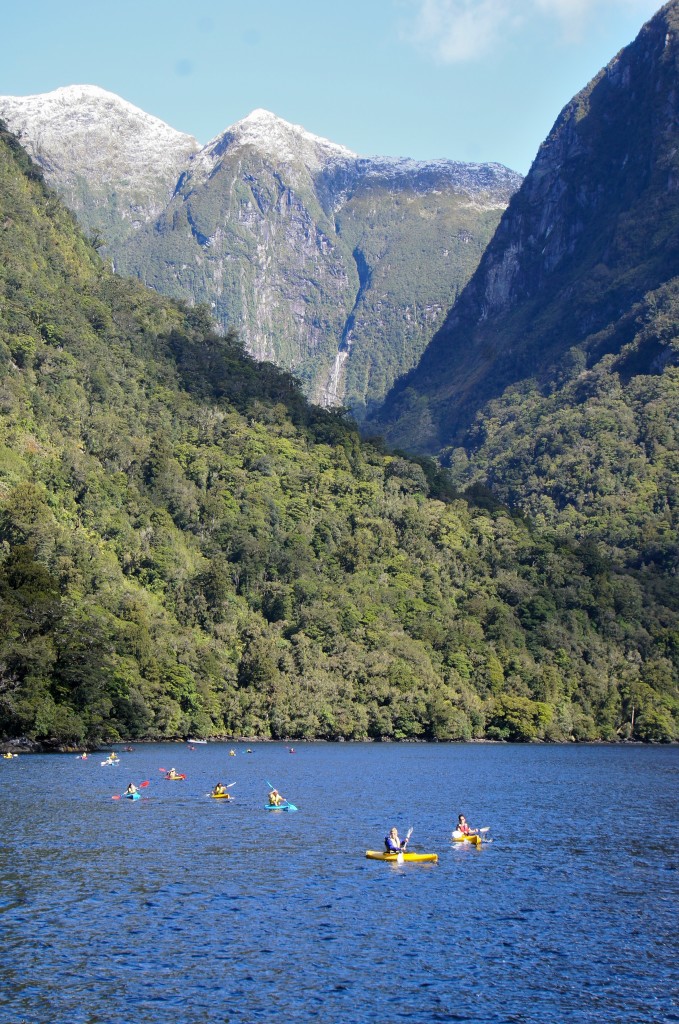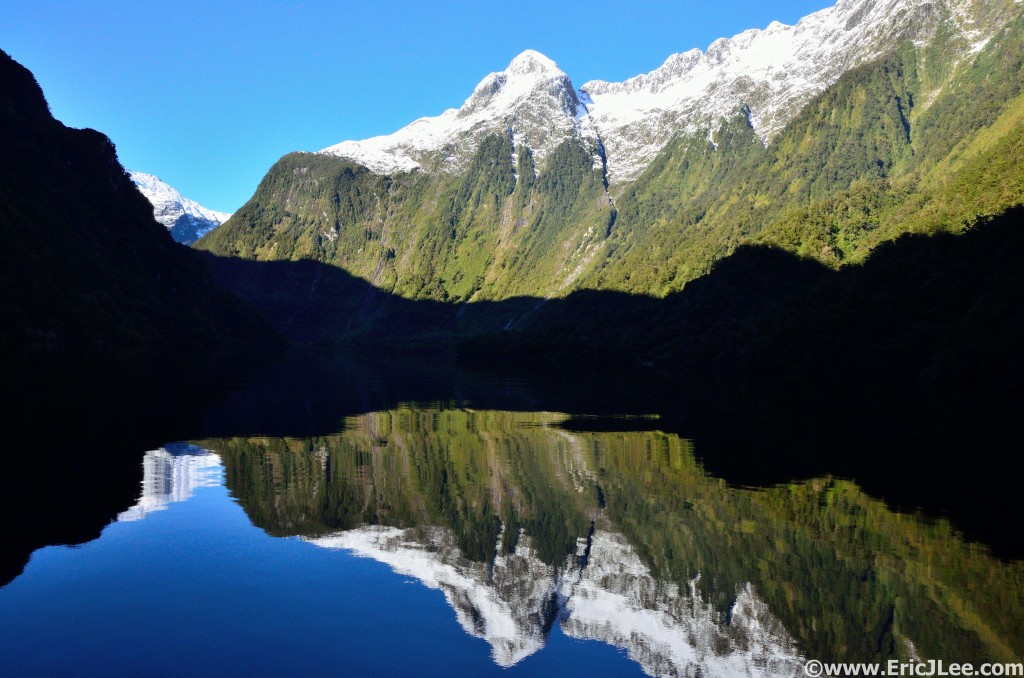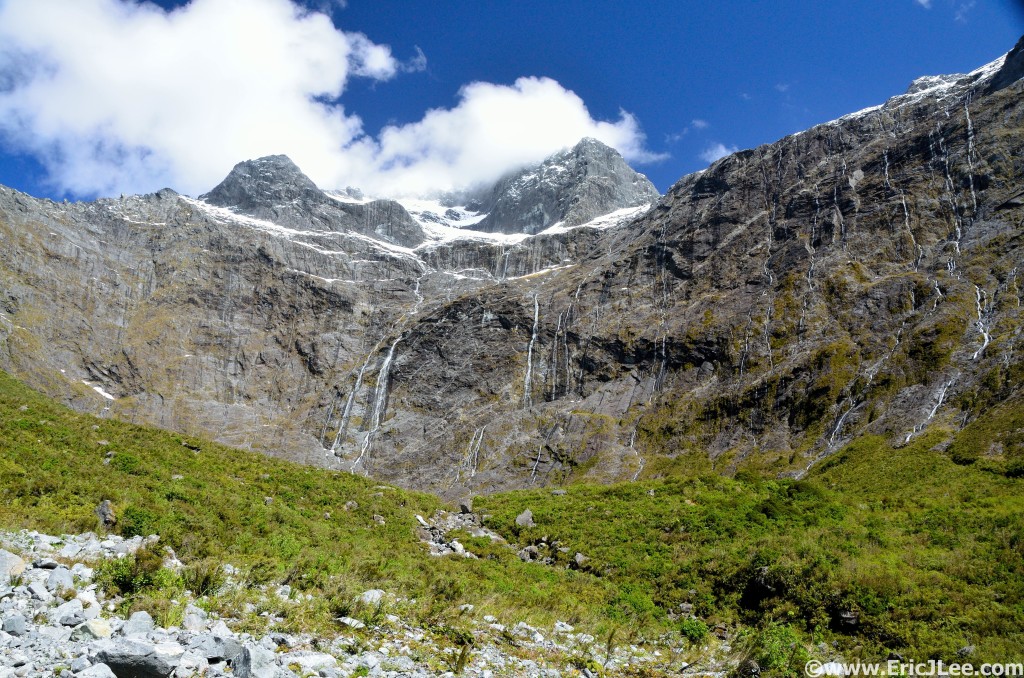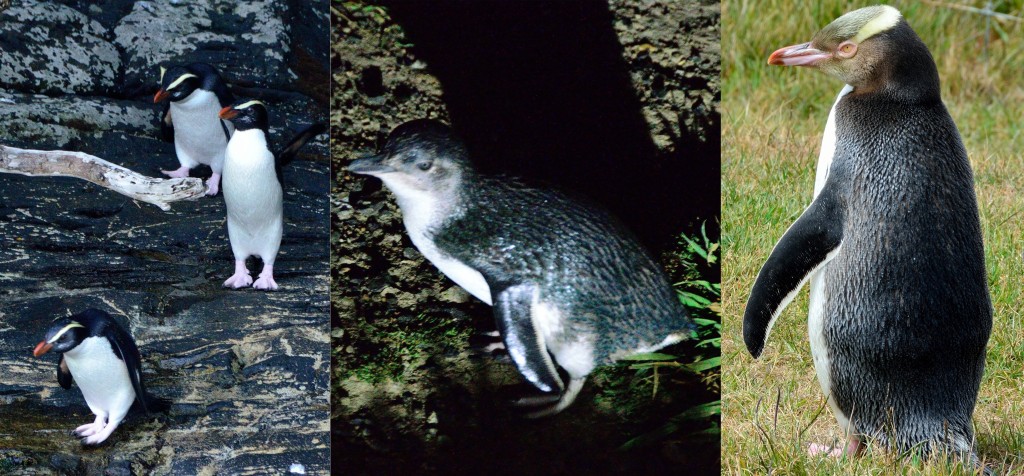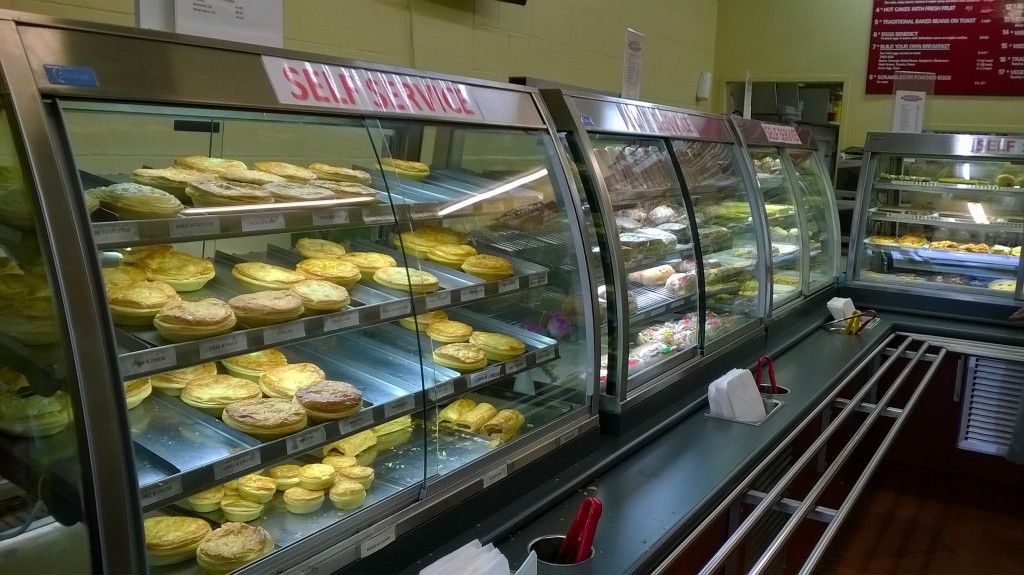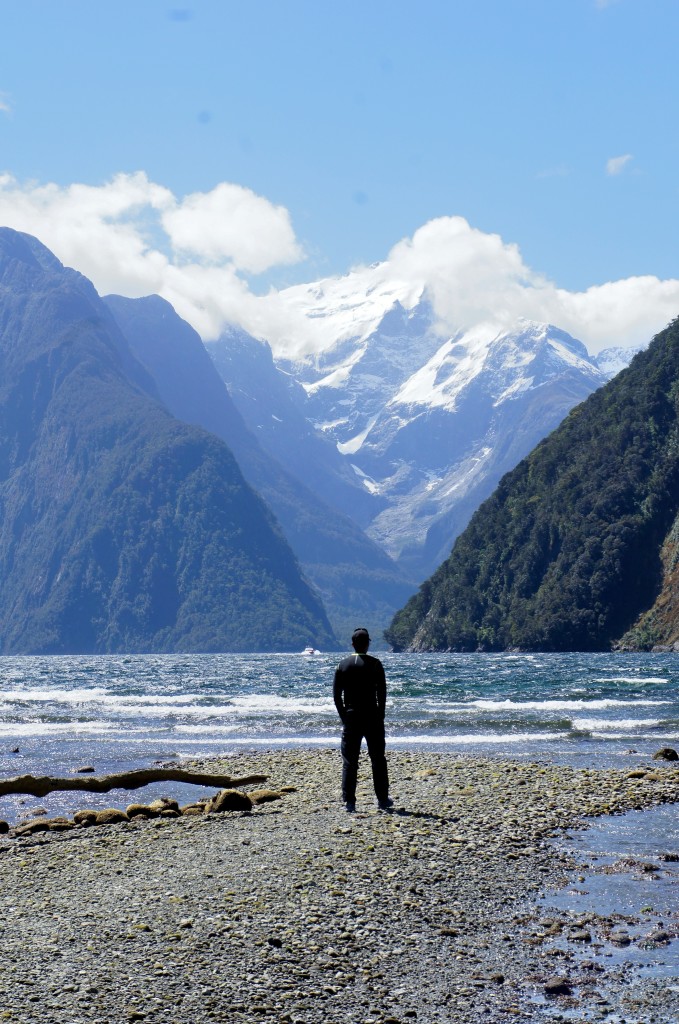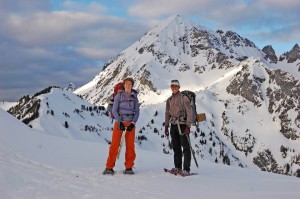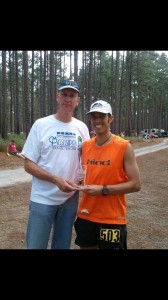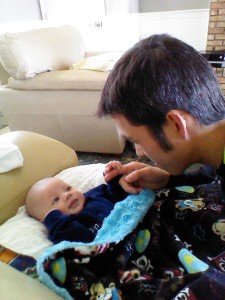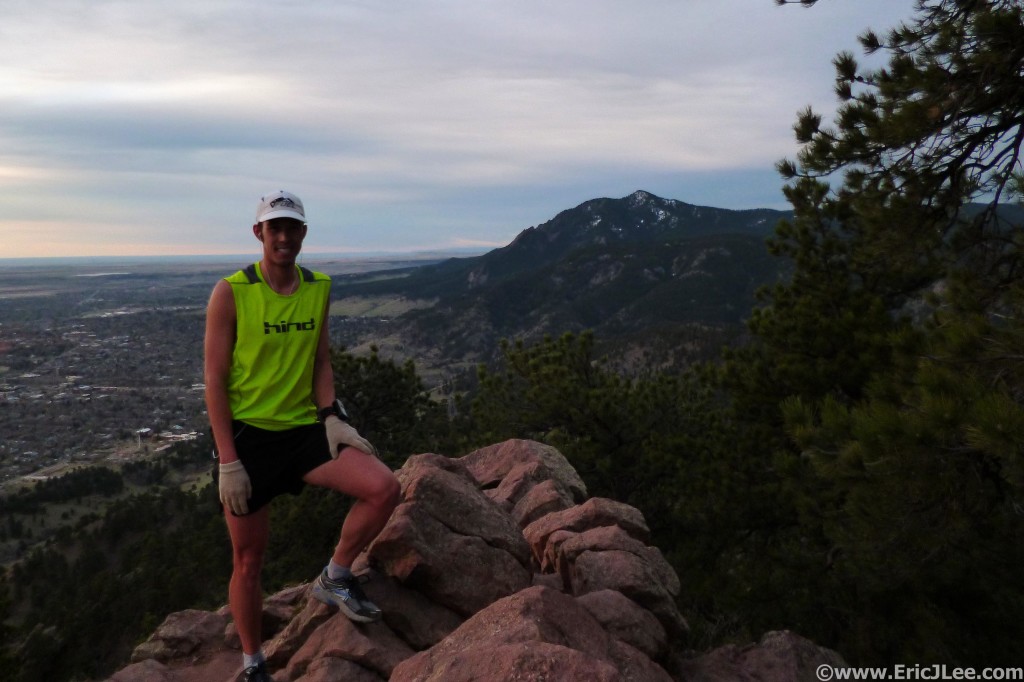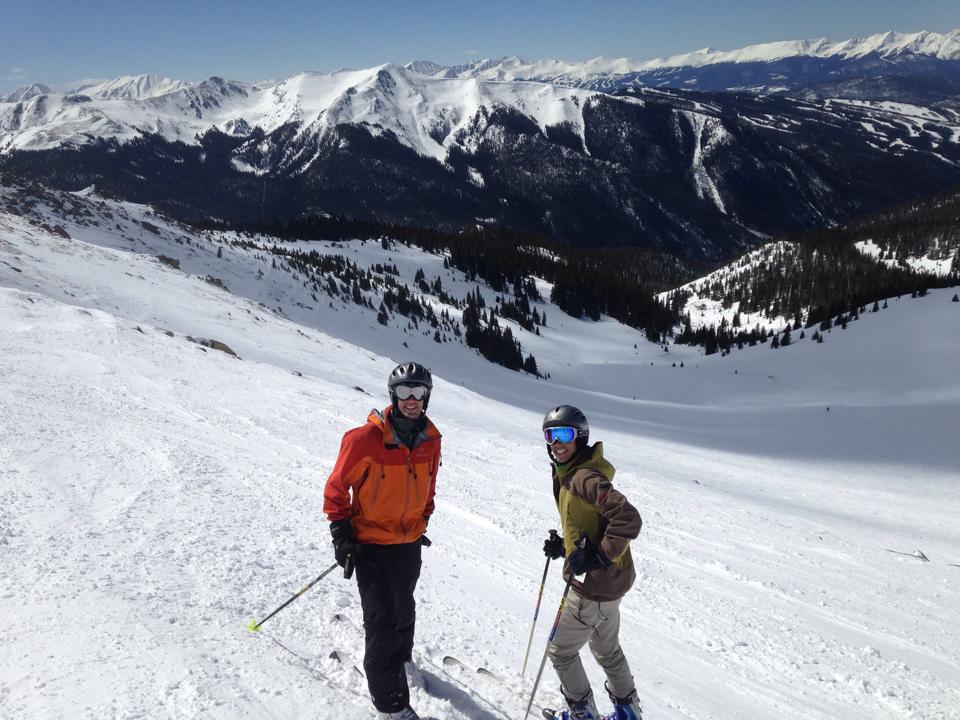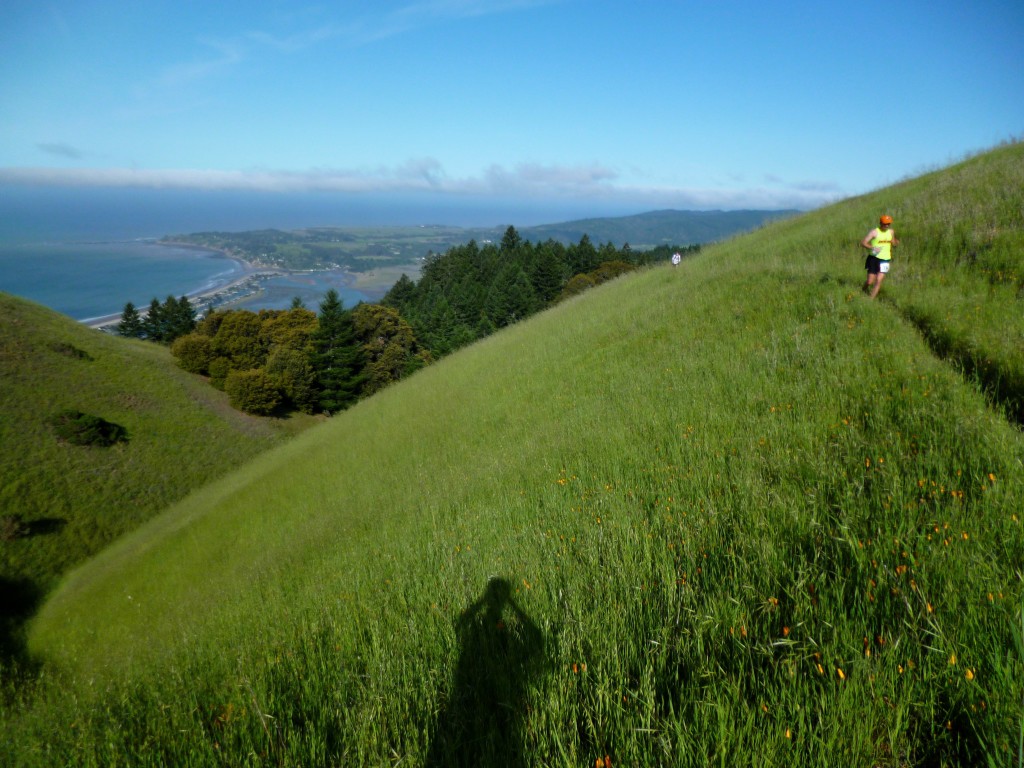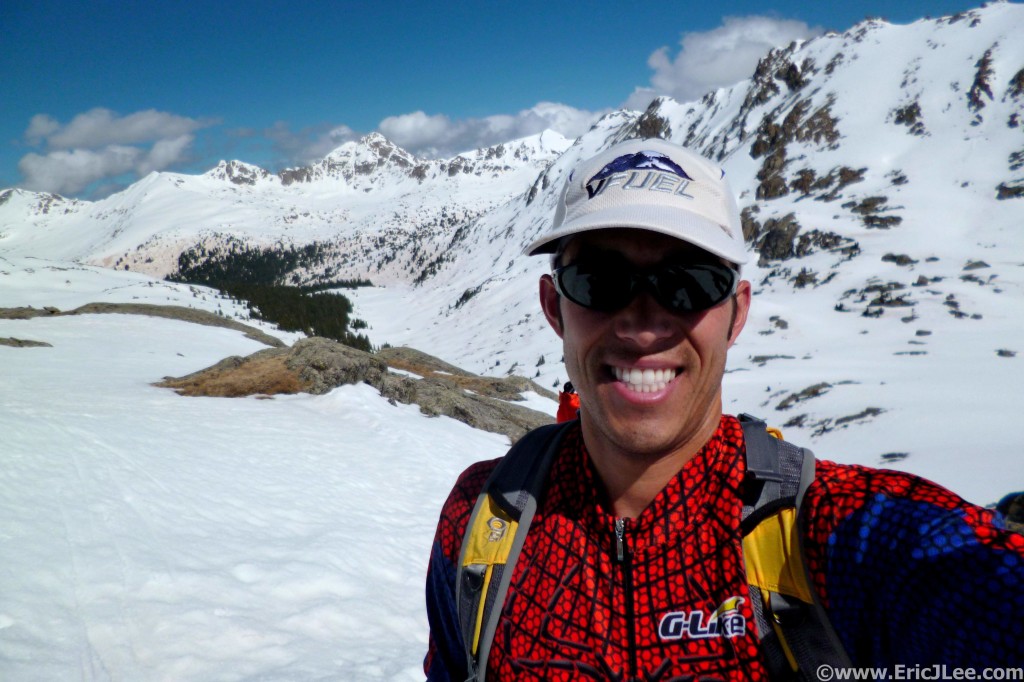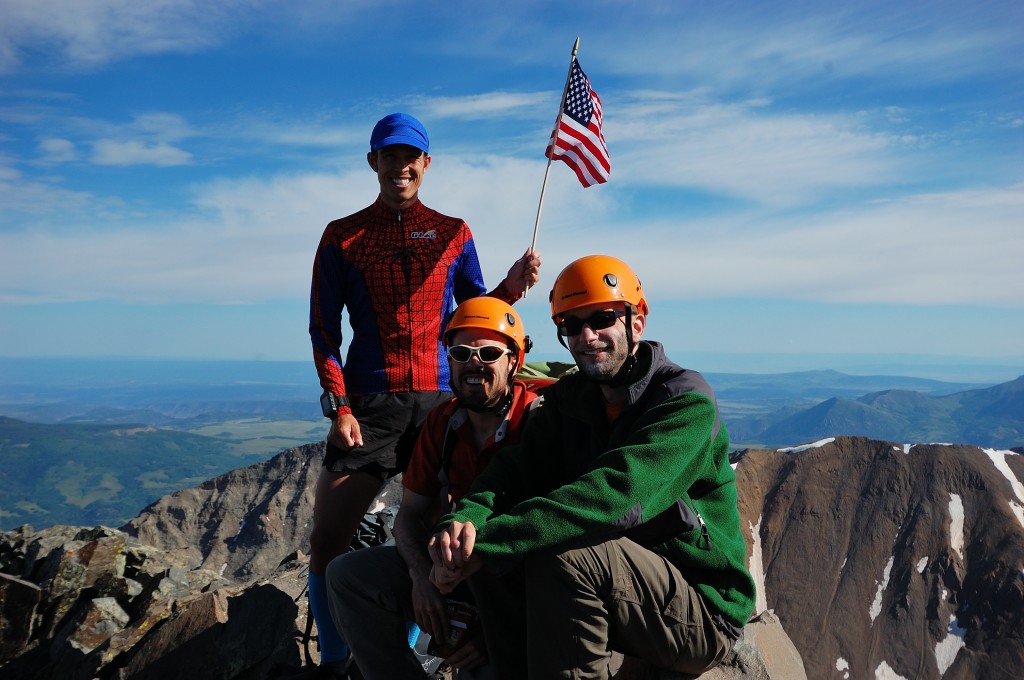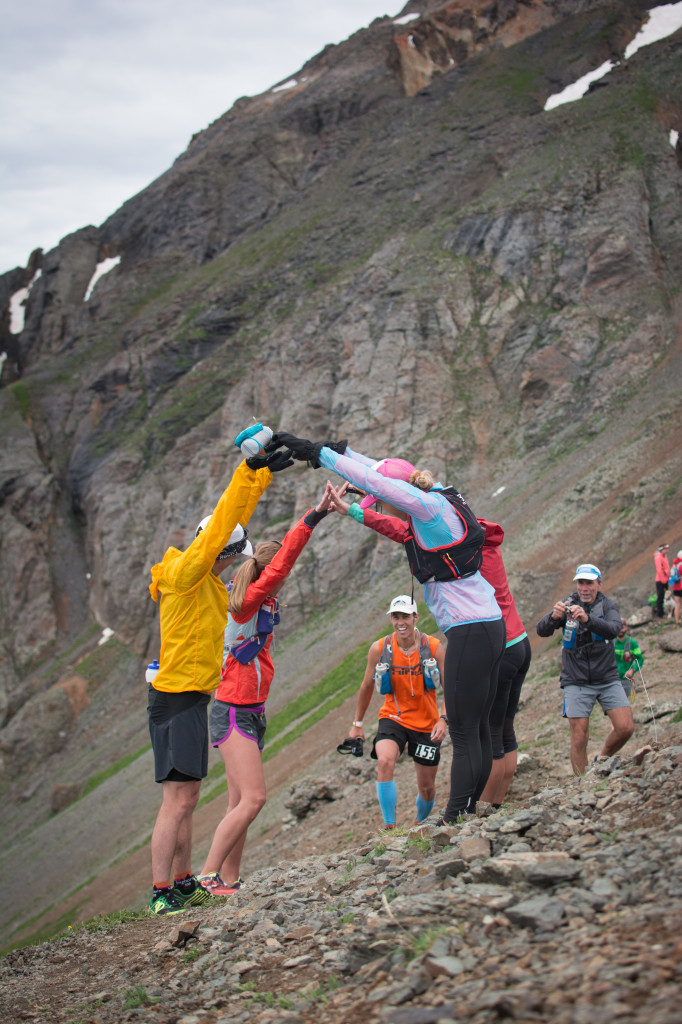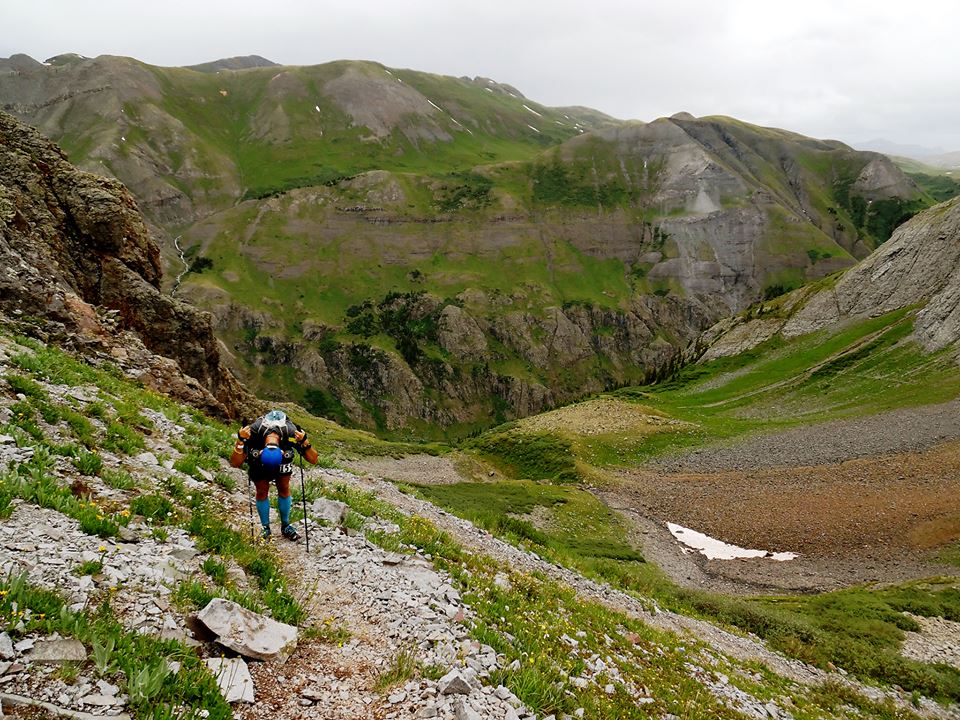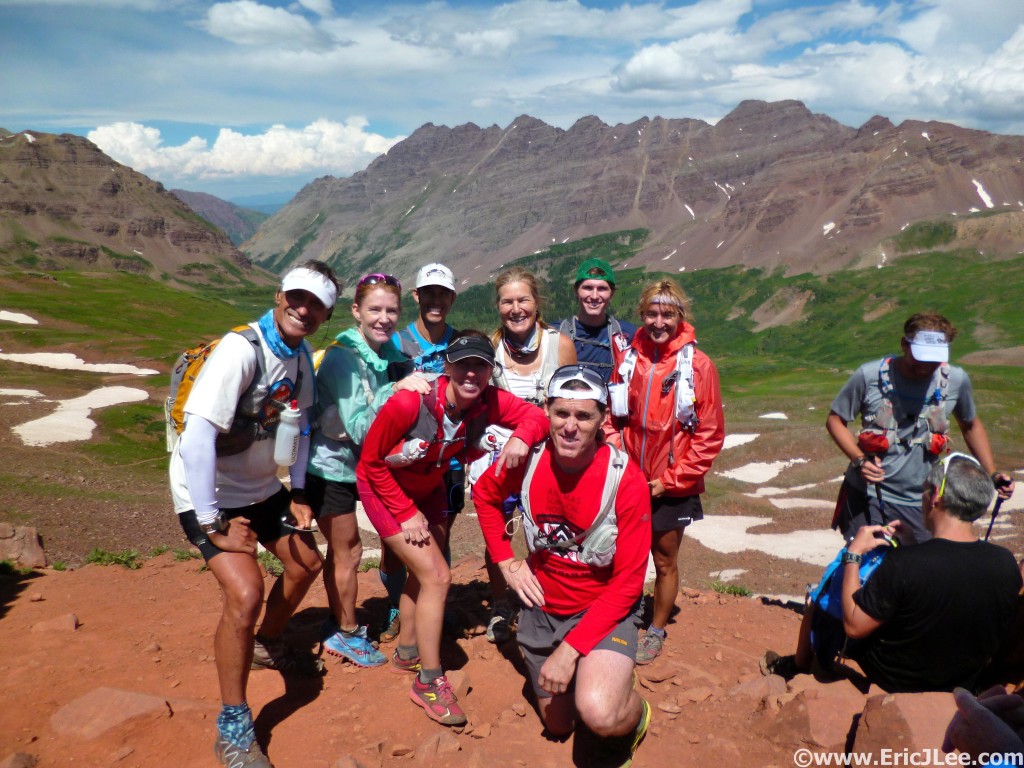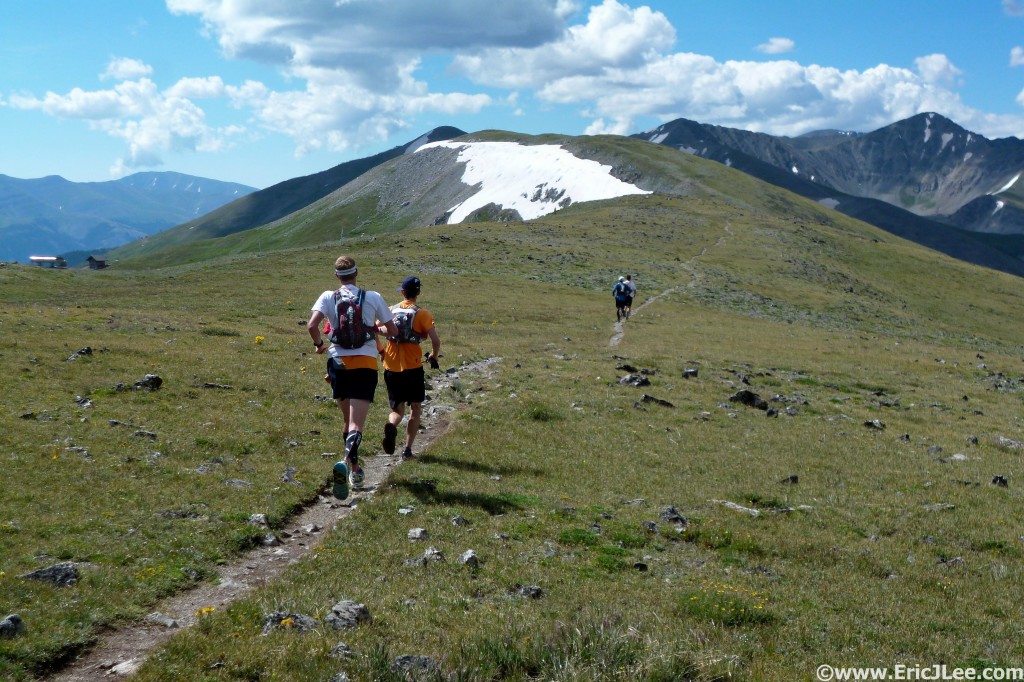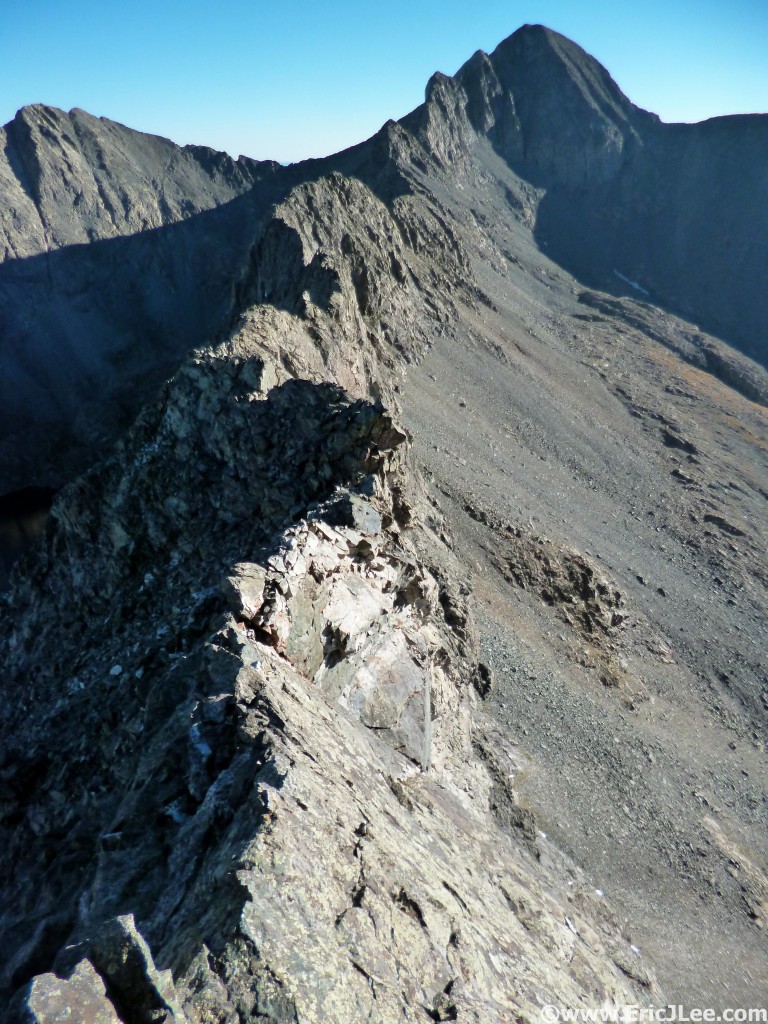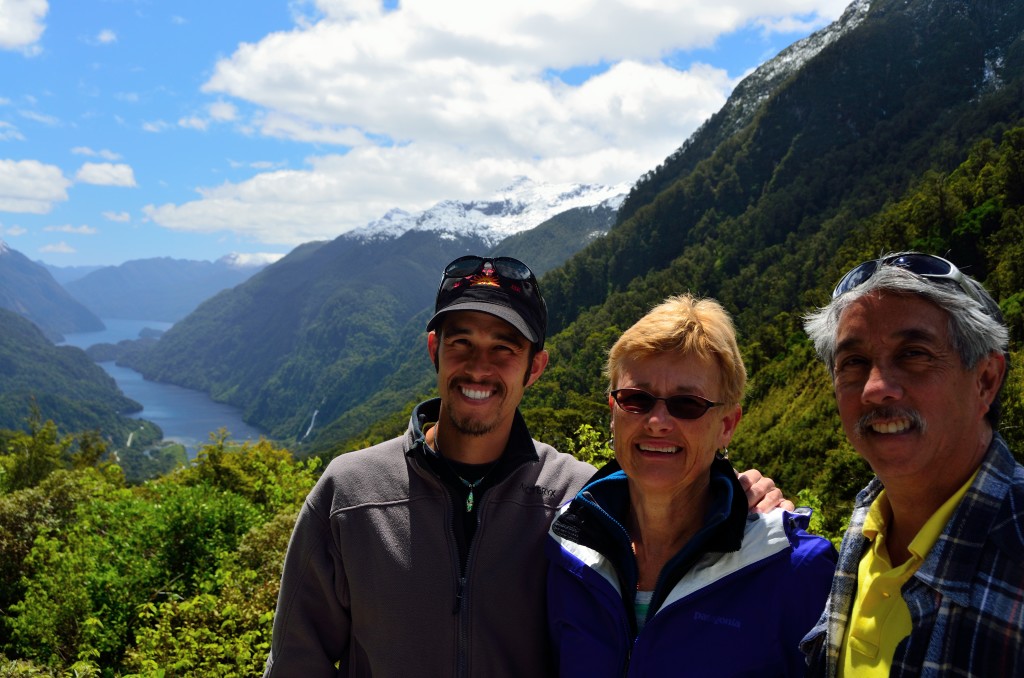As I descended into Courmayeur just before sunrise, doubt began to creep into my mind, what if my legs failed again, what if something happens…again? I deliberately slowed my pace down the steep dusty switchbacks, even though I felt pretty good, but also understanding that I had almost 60miles of mountains left. The DNF demons of 2013 still chased me, even on race day, but sometimes out of our greatest failures, come our biggest successes. So hang with me, as this is going to be a long one. If you’re curious about my ‘training’ for the 2015 UTMB see my previous blog.
Prerace
On August 19th after a summer of playing in the mountains, admittedly with a much more relaxed attitude toward training than I’ve had in previous years, I hopped on an Iceland Air flight bound for Iceland, my first stopover enroute to the 2015 UTMB race. But this story actually starts in 2013, when I made my first trip to France to attempt the UTMB. The scene was the more energetic and stimulating than anything I’d ever been a part of (dwarfing Western States), the mountains were more dramatic than anything on the Hardrock course, and the field was by far the largest I’d ever run in (2400 runners). Admittedly my first trip to UTMB was overwhelming, I got caught up in a lot of the hype, and in the end I was handed my first ever DNF (at La Fouly, 110km) due to mechanical issues that ended up severely inflaming my left knee to the point I couldn’t bend it. That day has haunted me ever since, but in 2015 I was given a chance at redemption.
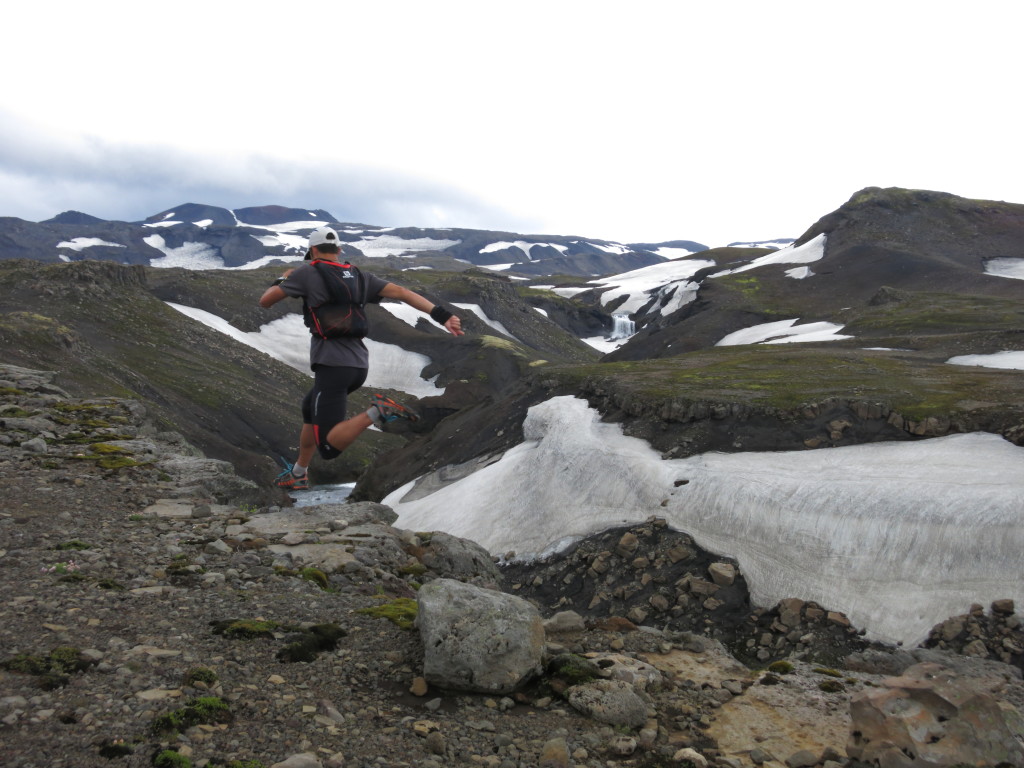
I’ve never been good at tapering. Pre-race play time in Iceland.
Pre-race I spent several rainy days running around the volcanoes and glaciers of Iceland, probably not the most physically restful thing I could have done, but traveling alone allows me to mentally recuperate and relax. It’s a beautifully diverse country, with great people and amazing scenery, I highly recommend a stopover if you get the chance. On Tuesday August 25th I caught a flight to Geneva, Switzerland and made my way to Chamonix, because even though my race wouldn’t start until Friday, I wanted to see my good friend Chris off as he started his journey on the TDS course (120km sister race to UTMB). Wednesday morning I caught the bus over to Courmayeur with several friends, watched the TDS runners sprint off into the early morning light, then spent the rest of the morning eating croissants and enjoying Courmayeur, this was the only time I’d get a chance to enjoy the town in the daylight as both in 2013 and again in 2015 I’d roll through just before sunrise.
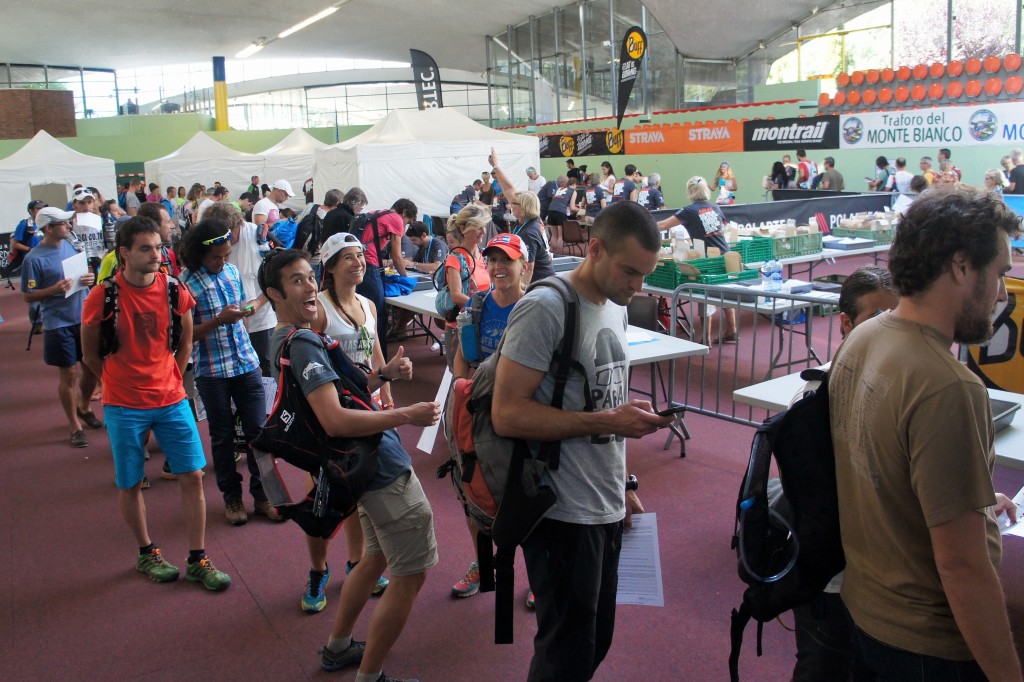
At race check-in along with our 2300+ closest friends.
Back in Chamonix the town was electric, most of the 5000+ runners (between OCC, CCC, TDS, UTMB) had arrived and many were milling about the downtown, the vendor expo and check-in. In some ways its complete chaos, but it’s also the most excitement and energy you’ll find at any Ultramaraton event, part of what makes it so special. I finally met up with my parents and several friends from Colorado and settled into our condo on the outskirts of town, just far enough from the madness. This year since I knew what to expect, my goal was to avoid much of the chaos downtown and to simply relax in the days before the race. Note, this is the first time I’ve EVER started a 100mile race more than once, every other race I’ve started and finished exactly once. Wednesday and Thursday went by fairly uneventfully, as Ryan, Amy and the entire household simply kicked back and relaxed. Finally Friday arrived, and after an early breakfast, some last minute gear organization, I laid down for a nap as UTMB doesn’t start until 6pm Chamonix time.
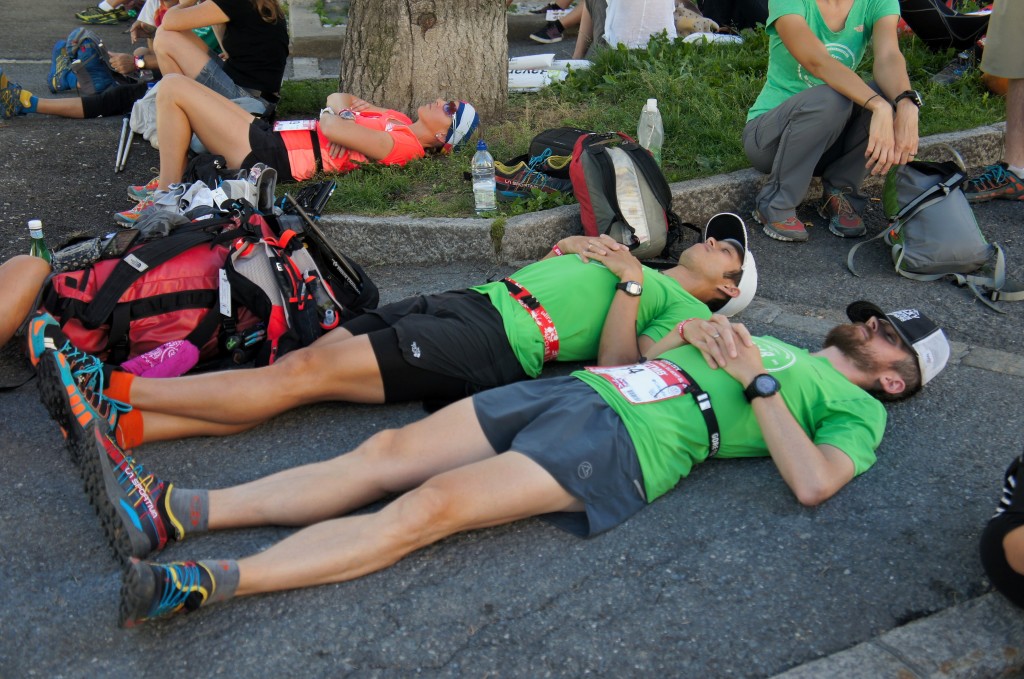
Team Colorado taking a little siesta before the afternoon start of UTMB. Photo by Kerwin Lee
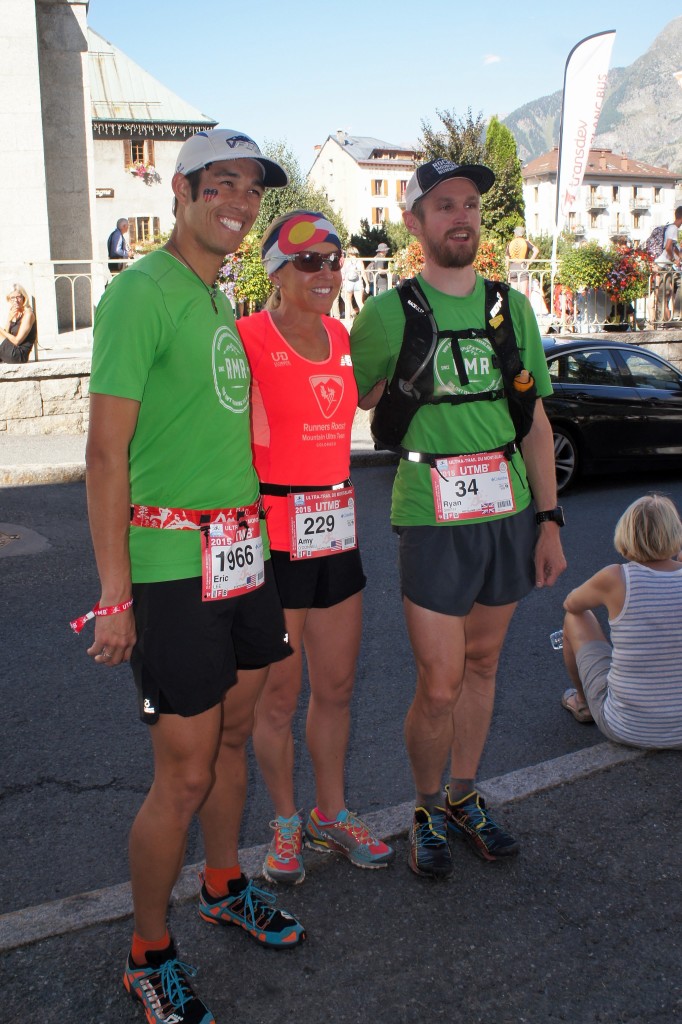
All smiles, til we meet again back at in this same spot, hopefully as finishers. Photo by Kerwin Lee
The Start: Chaos, Excitement and Patients
Around 4:30pm we all rolled down to the start line where people were already lining up and a massive crowd was gathering. Ryan, Amy and I stood to the side in an effort to stay out of the sun (race forecast was for hot and sunny conditions throughout) and keep ourselves relaxed. Finally the 30 minute call went out, Ryan headed up to the elite runners bin at the front, while Amy and I began to squeeze our way into the massive crowd that was lining up behind the start line. Two years ago I’d started nearly 1200 people back, which made for a slow and frustrating first 8km, this year I’d resolved to push my way into the top 500 or so. The announcers roared over the PA, something in French, the crowd began to clap, and the gun went off sending all 2400 of us on our way. I slowly jogged through town, past the thousands of on lookers, eventually finding my way to the outskirts of Chamonix where I was able to open up the stride to a comfortable run on the gentle crush gravel downhill. 43min later I rolled into Les Houches (8km), quick but it felt pretty easy and comfortable, now I was in a good spot in the field (top 400). Two years ago the incredible energy of the start and early aid stations had me so amped up I blasted through the first 30km, this year I was resolved to just run my race, enjoy the scene, and to not worry what the other runners (most of whom went out too hard) were doing.
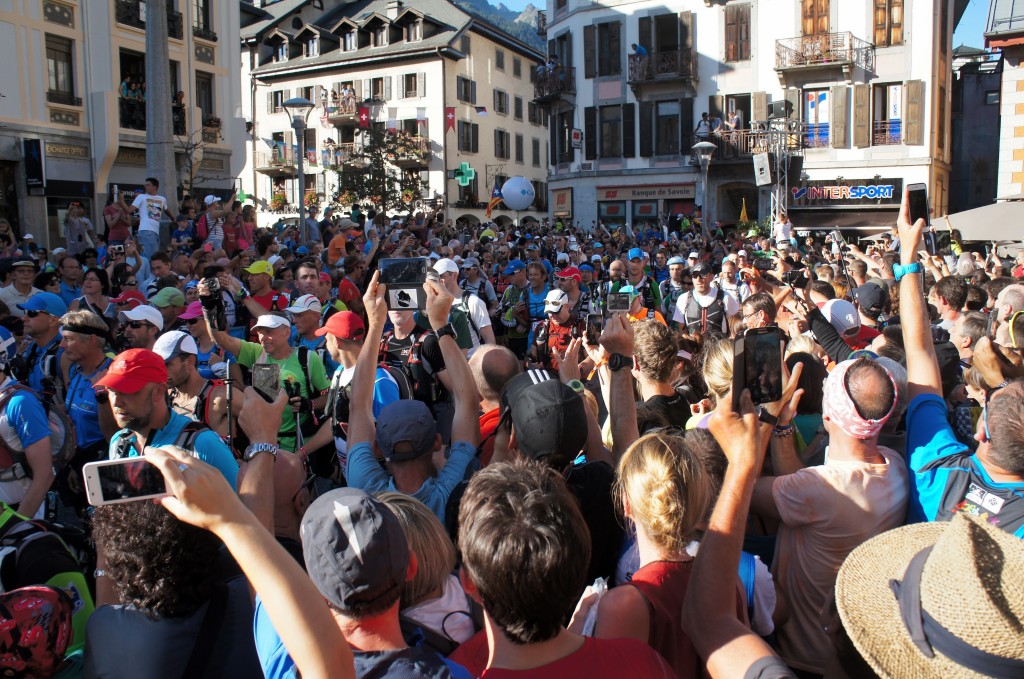
Start of the 2015 UTMB, runners streaming out of Chamonix. Photo by Kerwin Lee.
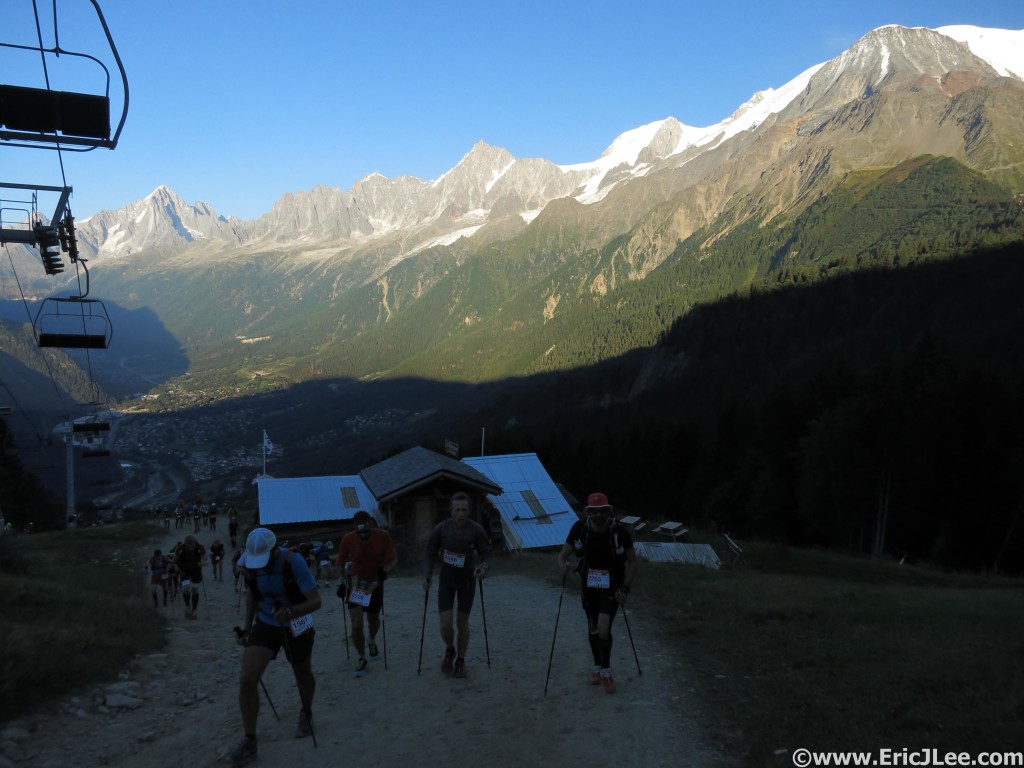
Sun setting as we climb the first hill to Le Delevret
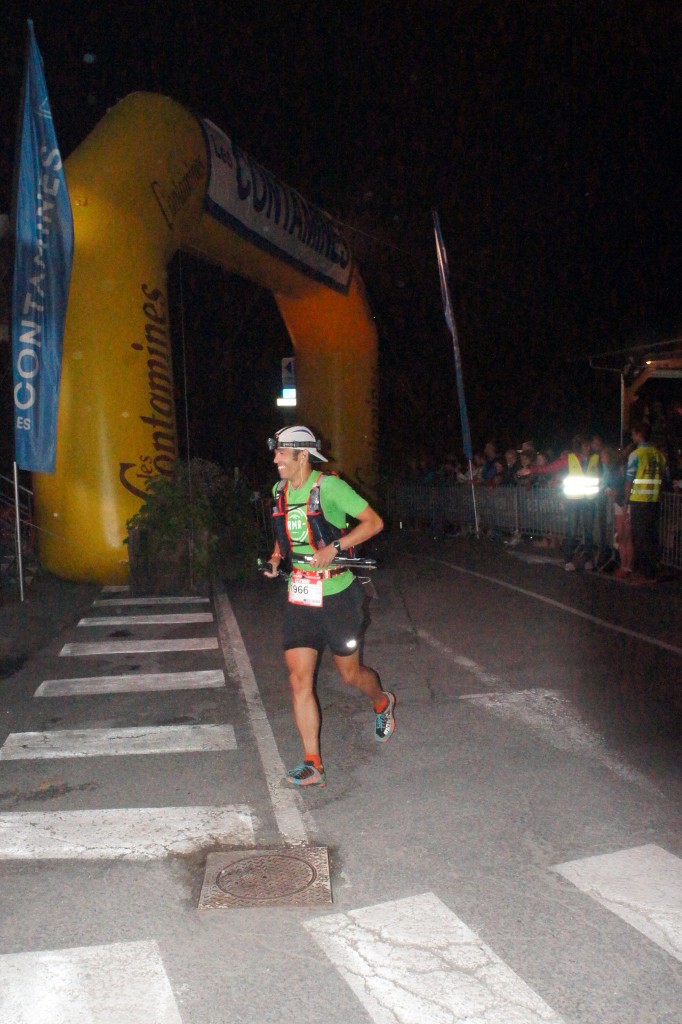
Me arriving at Les Contamines, all systems go and plenty of smiles. Photo by Kerwin Lee
I popped out my poles and settled into a strong uphill hike toward Le Delevret, our first climb of the day. The climb went very smoothly, I stopped to take a few pictures of the sunset on the surrounding mountains, chatted with my new friend Kris from the UK, finally cresting the ski resort and hitting the steep grassy downhill into Saint-Gervais. Kris took off down the steep but runnable slope, I was somewhat hesitant, as the DNF of 2013 lingered in the back of my mind. Still I made it into Saint-Gervais about 28min ahead of schedule (2:27, 21km, 403rd). I briefly greeted my mom, grabbed some water and a snack and jogged off through town, high fiving dozens of kids along the way, because how could you not! As I jogged the rolling single track and gravel road up the valley toward Les Contamines, the final bit of daylight faded away, I kept my headlamp off as much as possible on the easy terrain, reaching Les Contamines feeling strong and energized (3:49, 30.7km, 319th). I walked into the crowded aid station, filled my water, grabbed a snack, all the while trying to find my parents in amongst the chaos. Finally my mom came sprinting through one of the gates, the aid workers had refused to let her in for some odd reason. We sat down at a picnic table as I refilled my Vfuel and trail mix stash and chatted about what I expected for the long night ahead, the next crew point would be Courmayeur in 47km! I gave my mom a sweaty hug, a quick pep talk to my friend Louis who was having a rough patch, and jogged off into the darkness.
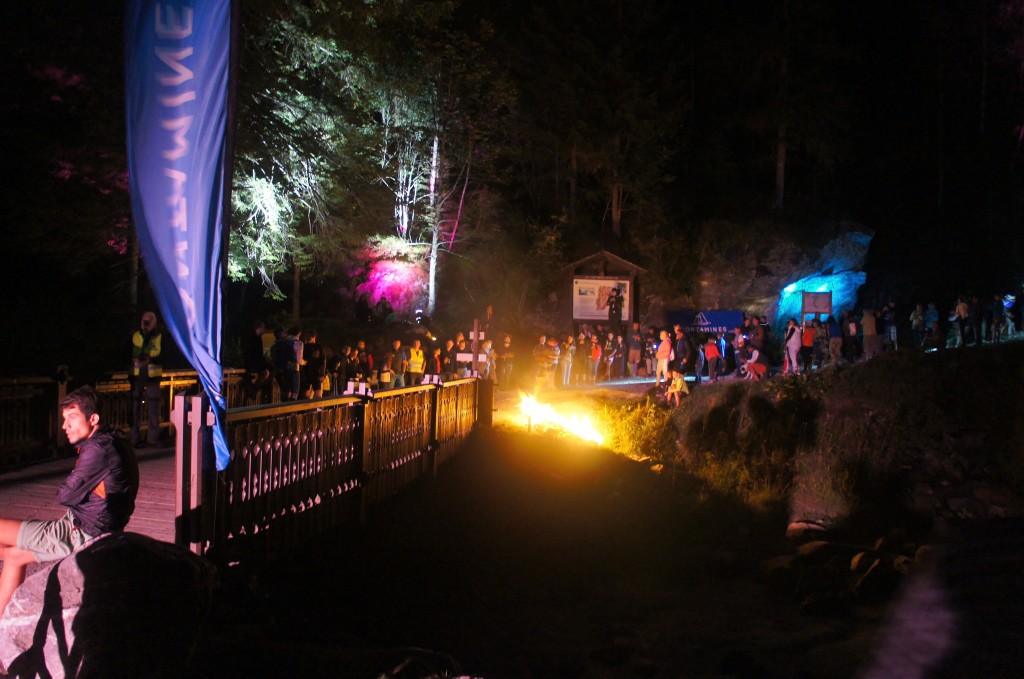
Notre Dame de la Gorge may only be a check-point and a church, but they put on one heck of a party. Photo by Kerwin Lee
The Long Dark Road
I jogged my way up the valley, past the checkpoint at Notre Dame de la Gorge (really more like a party) and up into the black abyss. This would be our last major sign of civilization until Courmayeur, 8hours later. Again I snapped out the poles and settled into my fast hike. As I climbed toward La Balme the full moon rose from behind the mountains, illuminating the alpine terrain, so I switched off my headlamp choosing to move solely by moon light. I still hold that night running is an acquired skill, come join me for a BTR night run sometime and I’ll tell you all about it (Wed at 8:30p). As I neared the Col du Bonhomme I glanced back at the trail of headlamps winding up the valley and the aid stations far below, what a night. I soon reached the Refuge du Bonhomme, reracked my poles and began a moonlit descent (yes still no headlamp). I cruised into Les Chapieux (6:58, 49.4km, 222nd) having passed almost 100 runners in 20km, many of them with my headlamp off (to their surprise).
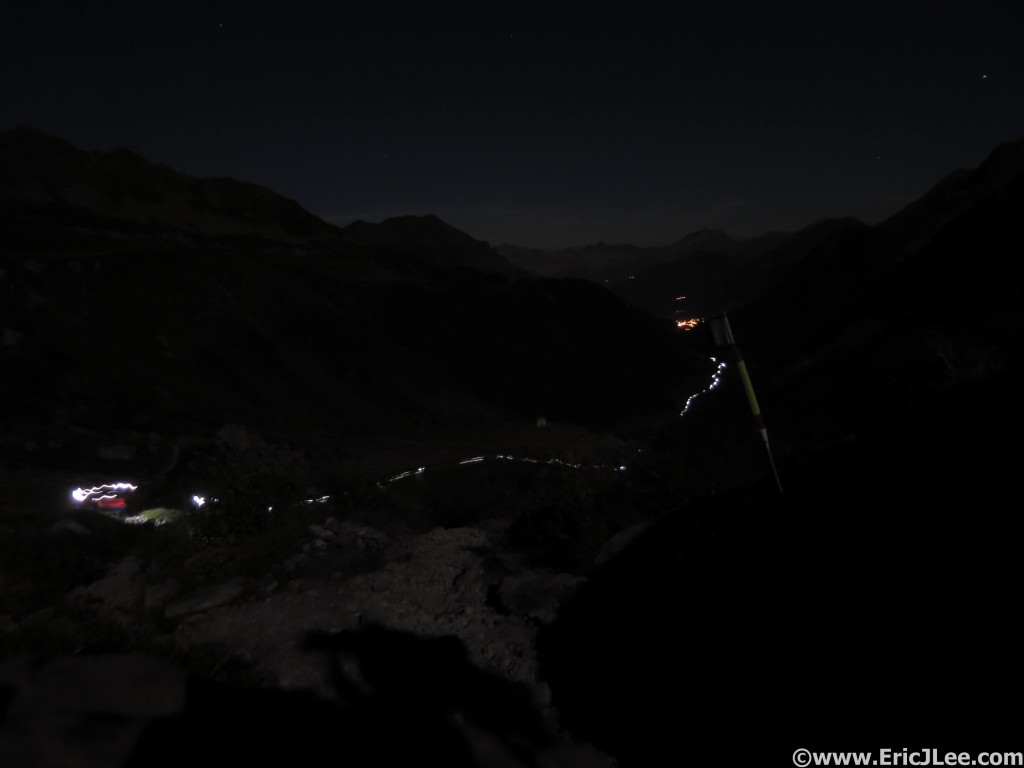
View of the line of headlamps between Notre Dame and La Balme from just below the Col du Bonhomme.
The energy of the race had faded a little, but I was still feeling strong; so after downing some soup and a glass of coke I set out on the long haul to Lac Combal. As I climbed toward Col de la Seigne I again switched off my headlamp, enjoying some moonlit trail silence, soon finding myself cruising down toward Lac Combal. As I jogged down the hill I glanced to my left and noticed a line of headlamps leading toward a Col several hundred meters above me, and became very puzzled as I could see Lac Combal below, but it became apparent the route was taking us a different direction? I was starting to get sleepy, so figured the reason I didn’t remember this section was because I had done it at night. The climb to the Col des Pyramides Calcaires was a mix of muddy wet grass and loose talus, not very runnable, and the case of the sleepies that was setting in made it even more difficult. As we finally approached Lac Combal (10:00, 65.8km, 161st) I was a little mentally beat, the section had taken me 30min longer than expected, I needed a recharge.
As I reloaded my water and browsed the aid station food I heard someone speaking English behind me, I turned around to see Jamil Coury walking into the aid station, he also looked a bit haggard. We briefly chatted as I stuffed my face with soup, coke and the most delicious cake I’d ever eaten (well it was at the time). As we set off along the dirt road toward the Arete du Mont-Favre a cold fog settled over us, blurring our headlamps into a dull white haze. On the climb out of the valley the fog broke and the beautiful starry night reintroduced herself, I was feeling a little sluggish, but still moving alright. As the steep climb finally gave way to another quad pounding descent, a small bit of doubt began to creep into my mind, as the 1300m descent into Courmayeur was my undoing 2years ago. As I descended the steep switchbacked trail into Courmayeur I definitely held back, knowing I was moving well enough, I figured I’d rather lose 5min than risk blowing up my legs again. I finally popped out of the trees and onto the cobblestone backstreets of Courmayeur just before dawn. I was very relieved to have the long crewless night behind me, as the sun always seems to bring me energy.
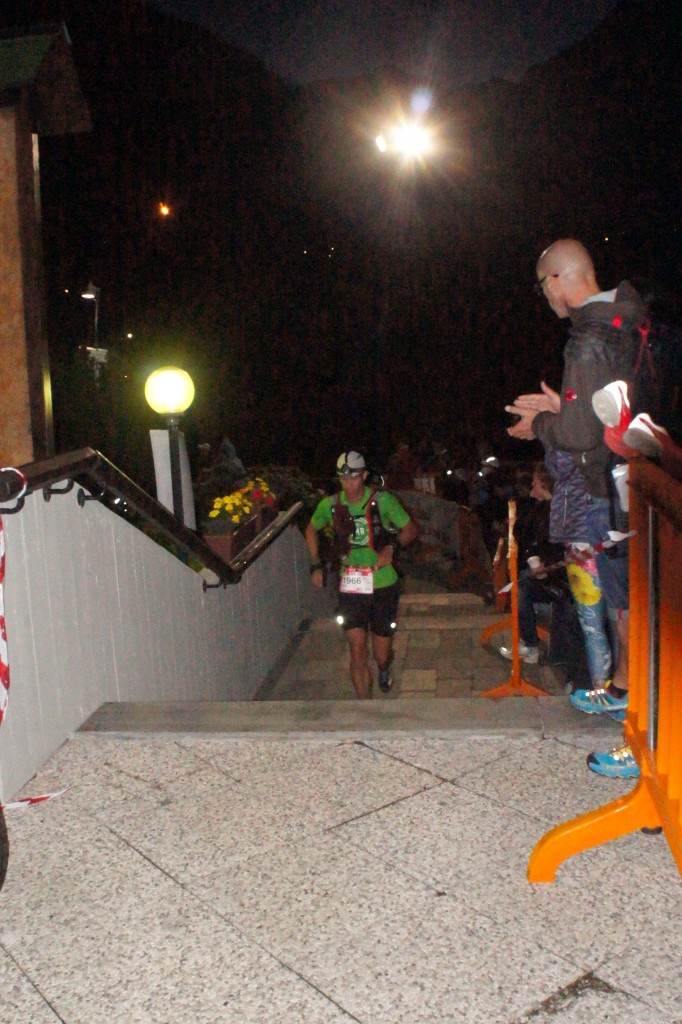
Arriving in Courmayeur after a long night in the mountains, still moving up the ranks. Photo by Kerwin Lee
The Heat is On
My parents (and Abby) were waiting at the Courmayeur Aid Station (12:09, 78.8km, 149th), I restocked all my Vfuel and food, shed any unnecessary warm clothing and took fifteen minutes to eat and regroup. I could feel a little fatigue creeping into my muscles, but overall they felt exponentially better than two years ago, and much stronger. I again bid my parents farewell, as it would be another 40km until I’d see them again, and off up the hill toward Rifugio Bertone I went. I made quick work of the climb and was surprised to be greeted by Sage at the Aid Station, apparently he’d taken a bad fall, tried to limp on, but couldn’t do it so was waiting for a helicopter ride out. The section of trail from Bertone to Bonatti is one of my favorites on the course, a high alpine traverse with panoramic views of the Mt Blanc massive directly across the valley, what a way to start the morning. I cruised through Bonatti and Arnuva and again set out on another long climb toward the Grand Col Ferret, at 2537m our highest point along the course.

Early morning light near Rifugio Bertone, why I love this section.
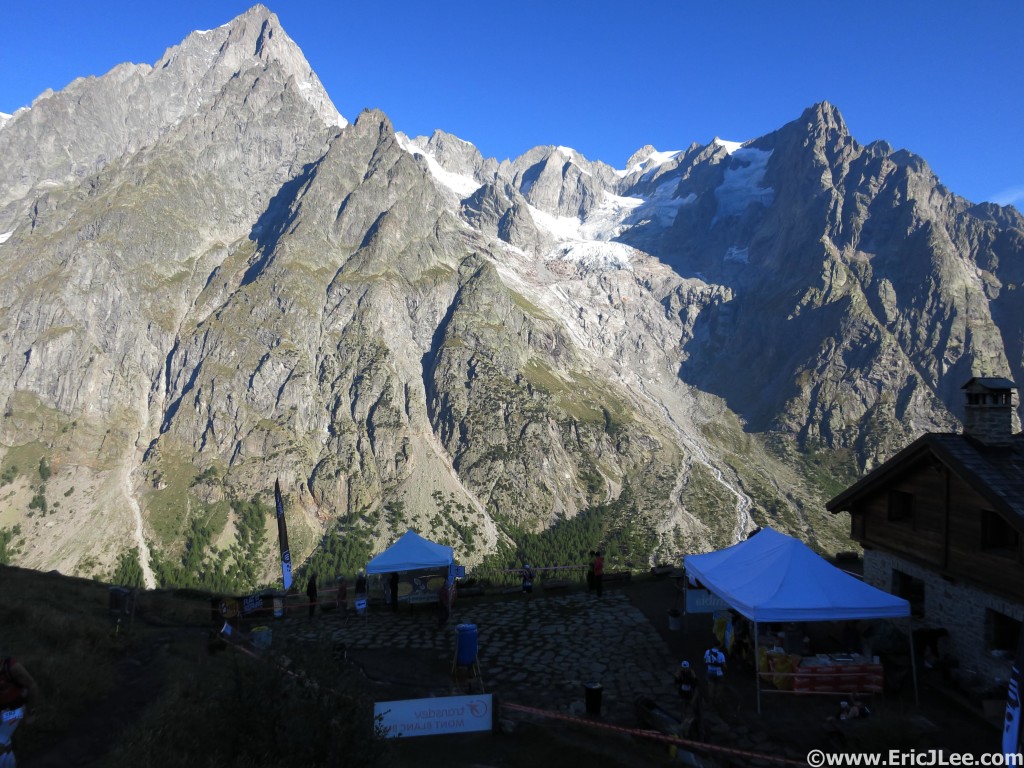
View from Rifugio Bonatti, too bad I can’t stay a bit longer.
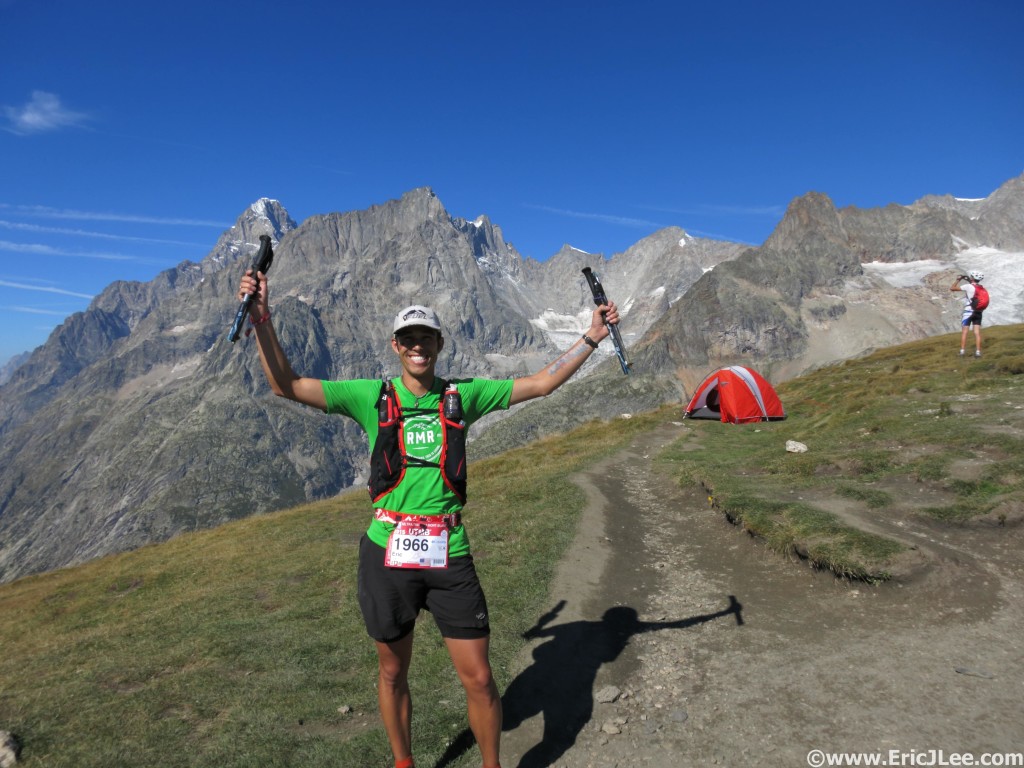
Finally atop the Grand Col Ferret, rough climb, but now I get to go downhill.
As I climbed into the warm morning sun my breathing became a bit labored, not in the bronchial constriction way, but more general pulmonary inflammation, or lung butter as we in the ultra world often call it. I slogged on up the hill, but could tell the climbs were going to be especially difficult the remainder of the race. When I finally reached the summit of the Grand Col Ferret I sat down for a moment to take stock of things, my legs felt pretty darn good (all things considered), but I was definitely having trouble taking a deeper breath on the uphills. Thankfully I knew that ahead lay nearly 20km of very runnable downhill so I decided to just let the legs roll and before I knew it I was at La Fouly (17:46, 110.1km, 100th), in great spirits no less. My parents were originally hoping to check-in with me at La Fouly (not a crewable AS), but because of the bus timing and the pace I was running didn’t make it. So I refilled my water, soaked my head under the tap and pushed onward. It was now midday and the sun was baking us with its full force, not my ideal race conditions. As I wound my way down the valley and through several small hamlets I was ever so excited to see that each of them had a public spring fed fountain, so I continually topped off my water and drenched my head in an effort to keep cool, so far so good.
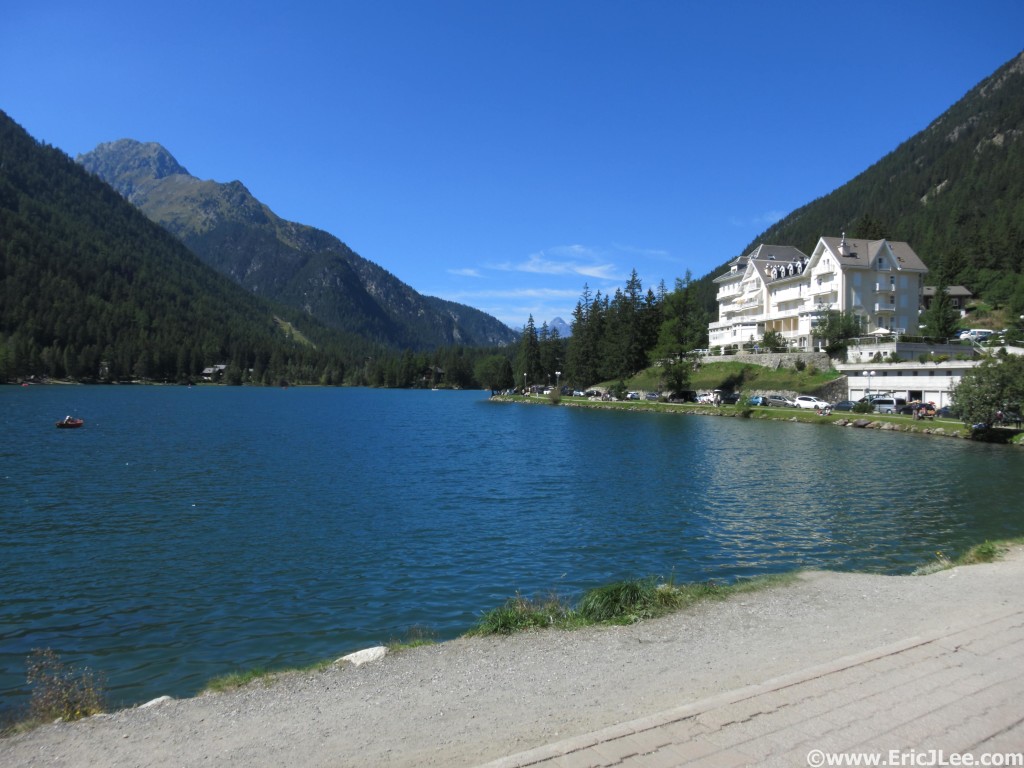
I oh so badly wanted to stop and go for a swim here, but ran on instead.
At last I reached the short steep climb up to Champex Lac, and my new running mate Alister (Canadian) and I forged ahead up the hot dusty switchbacks. About 2/3 of the way up we came across another spring fed fountain, which was key in refreshing me for the final leg of the long climb. As I neared the crowds waiting at Champex Lac I heard someone call my name, it was my friends Chris and Kate who had come out to cheer me on for the rest of the day, friends and family were just the lift I needed at that stage. In Champex Lac (19:56, 124.1km, 83rd) I quickly changed my shoes, drank a bowl of cold salty soup broth and sponged off again. From the triage that lay around me in the Aid Station I could tell I was handling the heat better than most. After some quick advice from Chris on the last three climbs I bid my parents farewell, it would only be 10-20km between aid stops from now on and barring some major meltdown I had very high hopes of finishing, and finishing strong.
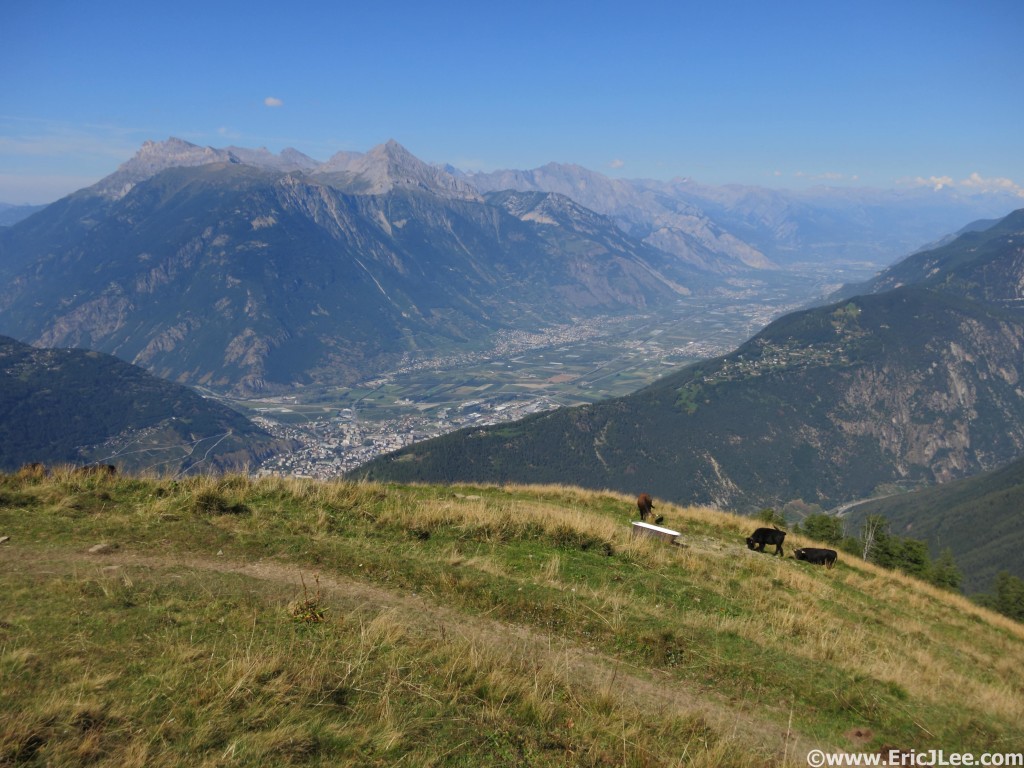
Finally at the top of the climb to La Giete, looking down into the Martigny Valley.
The climb to La Giete (formerly Bovine) was steep, rooty, rocky and dusty; and it sucked the life out of me. My breathing had worsened and I was slowed to what felt like an excruciatingly slow crawl. I hated watching people pass me by, not because I was losing places, but because it meant I was no longer moving as strongly as I knew my legs were capable of. All I could do was trudge on, finally cresting the top of the climb, we traverse through the herd of cattle and dropped into La Giete, were I was able to top off my water before the short but very steep descent to Trient. As I rolled out of the check point my breathing eased on the downhill and my legs had a surprising amount of quickness, so I pushed them a bit, making quick work of the incredibly steep descent and arriving in Trient right on schedule (23:22, 140.6km, 81st). In the warm afternoon sun the crowds had returned and I fed off the energy. The aid stops had fallen into a routine now; restock Vfuel, refill water, sponge off, drink some cold soup, pound a glass of coke and jog on out of the AS.
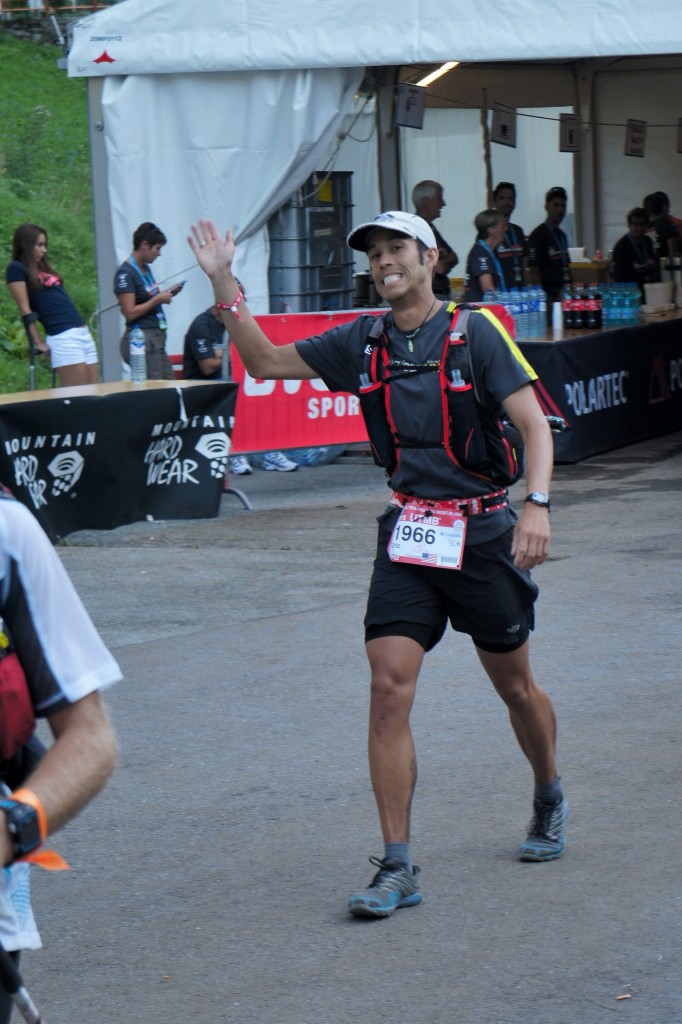
Leaving Trient in pretty good spirits, two more climbs to go. Photo by Kerwin Lee

Crews waiting at the Vallorcine AS, Photo by Kerwin Lee
The penultimate climb up toward Catogne was short and steep, and while my pace suffered up the steep section I was able to muster an easy jog across the flat traverse at the top before again bombing my way down into Vallorcine. The sun was finally dropping low in the sky, temperatures were cooling off, and since I knew I was well hydrated I popped a couple of ibuprofen in hopes it would help alleviate some of my lung inflammation and congestion. The descent into Vallorcine was quite enjoyable, my legs felt ok and most importantly I knew there was only one more hill to climb before descending back to Chamonix, I could do this. As I rolled through the small town, the aid station was buzzing with crews and spectators (25:56, 150.9km, 87th). I located my parents and instructed them that all I wanted was water, coke and a half dozen Vfuel, then I’d be off. I gave them one last hug good bye and started to walk out of the Aid Station when my friend Chris held up his glass of beer to cheers me and wish me good luck….oooo that looks really good. I made a B-line for him, asked if I could have a swig and after he obliged took a large gulp of the smooth and slightly chilled ale, just what I needed.
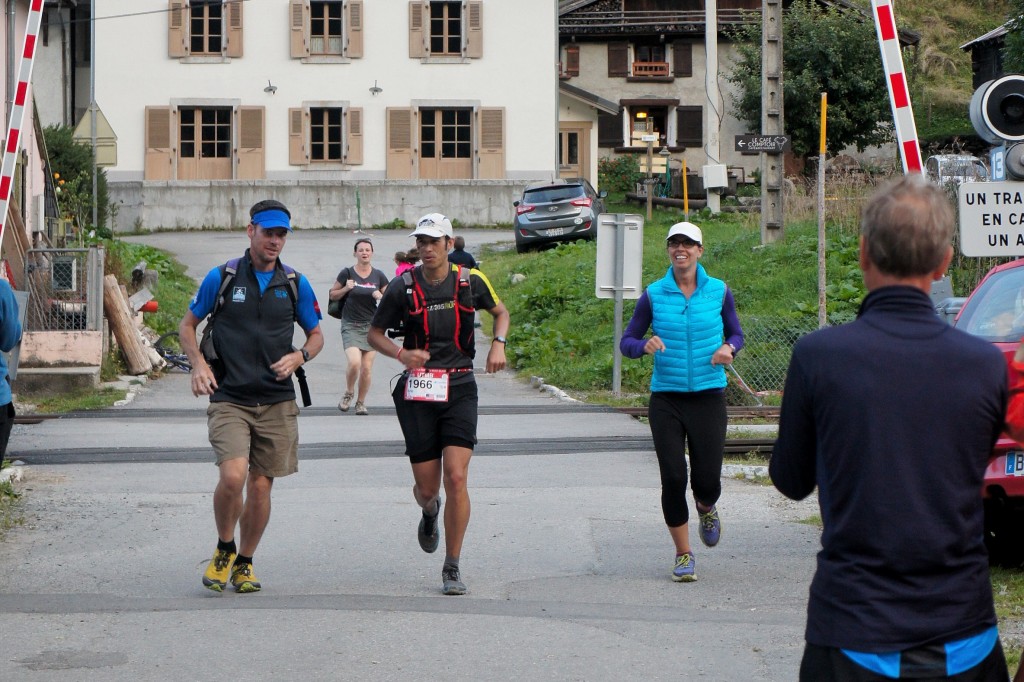
Chris and Kate running me into Vallorcine, its time to get this thing done. Photo by Kerwin Lee
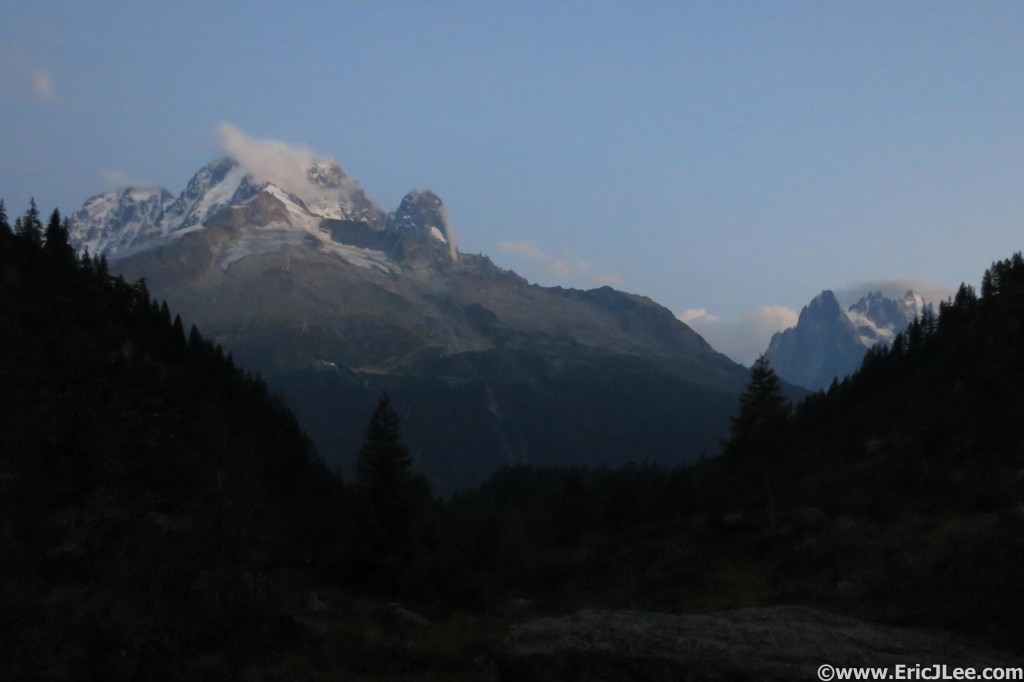
The sun fades away as I enter night #2 on the trail, one climb to go.
I then promptly jogged off up the gentle climb toward the Col des Montets. Dominic Grossman and I leap frogged back and forth up to the base of the Col, where darkness set in, we crossed the road and shit got real, 600m of extremely rocky vertical in just a few kilometers. As we pounded our way up into the darkness I noticed my lungs were feeling a bit better, whether it was the ibuprofen or the cooling temperatures who knows, but I was able to keep pace. When we finally crested the top of the steep section my Canadian friend Alister pointed out a light far off in the distance, that was La Flegere, the final aid station, and boy did it look a lot further than 4km away. We jogged/hiked our way through the undulating traverse on some of the most technical terrain of the entire course, the legs and mind were tired, but Chamonix was near. At last only a short section of dirt road separated us from La Flegere and we both breathed a sigh of relief as we strolled into the last checkpoint of the race (28:41, 161.6km, 89th). I filled one of my water bottles with water and the other with coke, it was time to get this done, so both Alister and I hammered out of the ski lodge down the dirt road toward Chamonix. The final descent is a mix of gravel jeep road, rooty and rocky single track and finally a little bit of pavement. We pushed a good pace through the technical sections and before I knew it the trees parted and we were at the ski lift on the edge of town. A huge smile cracked across my face, as all that was left was a few kilometers of pavement across town and I’d have my redemption. We wound our way through the streets, past a handful of on lookers who cheer us home (it was almost midnight after all), finally making a left turn onto the final ‘straight-away’. Neither of us slowed, but simply ran side by side past several hundred cheering spectators, finally spotting our crews waiting for us near the finish line. My Mom and Alistair’s friend joined us for the final 100ft through the finish chute and I made an emphatic leap across the finish line, it was done, the two year wait was over, I was a UTMB finisher.
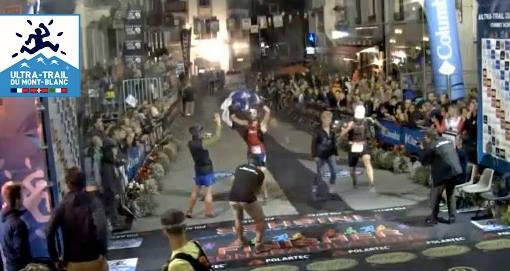
Alister and I crossing the finish line at the 2015 UTMB. 86th overall in 29:37:38
I’ll upload a better photo once I get one.
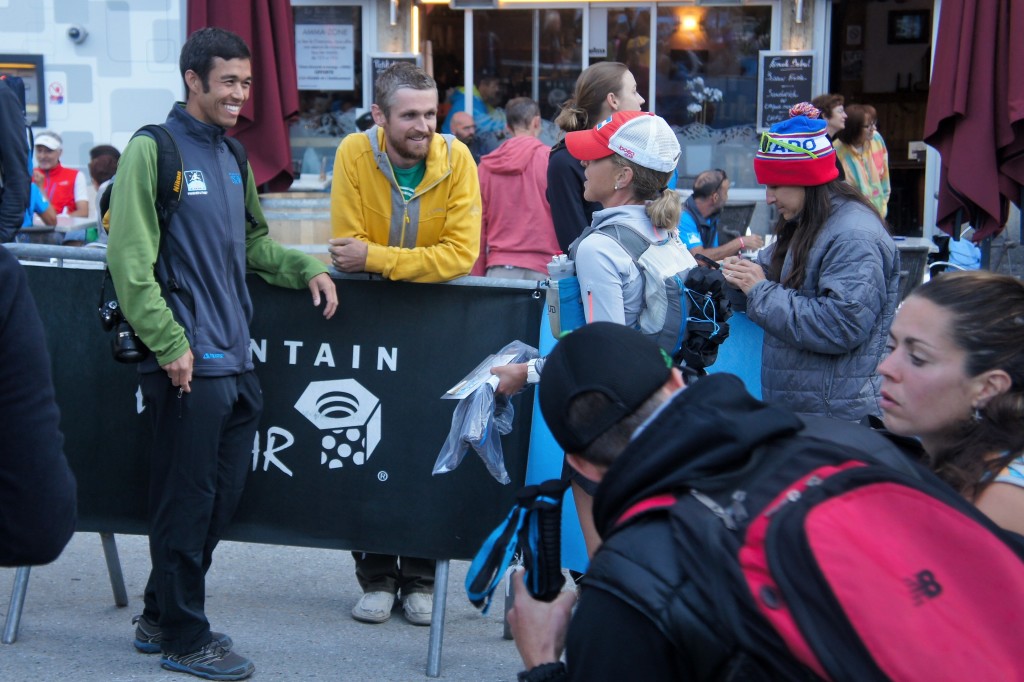
The Colorado household goes 3 for 3, Ryan (9th), Me (86th), Amy (575th). Photo by Kerwin Lee
A few shared high fives, a hug and some photos were snapped. My mind didn’t care that it was nearly midnight, that my body had been awake for nearly 40hours, that I’d been running for 30hours, or that my legs were tired, stiff and sore, no, all it cared about was that I’d finished and the massive smile on my face made that evident to all. I chatted with all the friends who had come out to see me finish, even Ryan had limped his way down to the finish line to congratulate me (he’d finish many hours earlier in 9th overall!). It was amazing to share that moment with everyone; family and crew, training partners, friends, supporters and the other several hundred brave souls who were still awake in the middle of the night awaiting the arrival of more runners. While the words in this report describe my experience, I still can’t fully put into words everything that the 2015 UTMB was for me; redemption, elation, sacrifice, perseverance and satisfaction. We don’t do 100mile races because they are easy; we do them because they push our limits, they test our strengths, they break us down and expose our weaknesses, but most of all they provide a rich diversity of experiences. A mere three days later I was back to running and hiking, my legs had never felt so good after a 100miler, cheers to a quick recovery and more adventure to come.
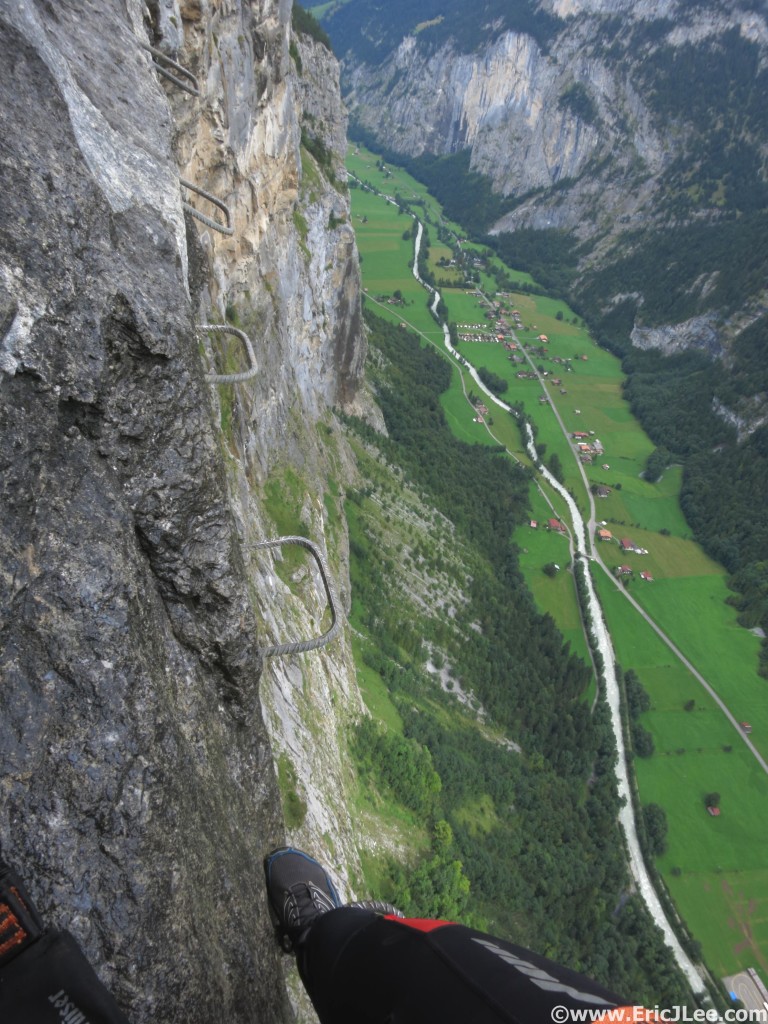
Post-race play time, Murren to Gimmelwald klettersteig, at least I wasn’t running.
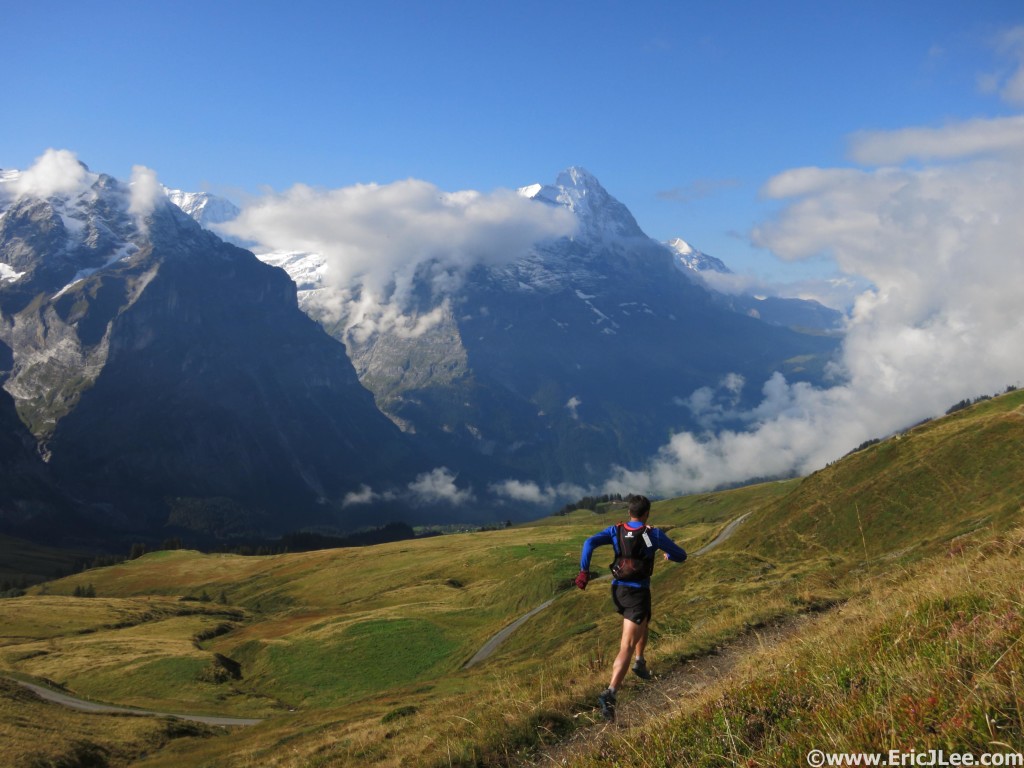
Six days after finishing UTMB my legs felt way too good not to get out and enjoy Gindelwald and views of the Eiger.
A special thanks to my parents for crewing me into two nights and a full day, all my training partners for slogging out mountain miles with me (including the Rocky Mountain Runners), Adam Engel of Waldron’s Peak PT for helping fix the weaknesses that derailed my 2013 UTMB, Cindy Stonesmith for the training advice, and Vfuel for supporting my crazy ideas and keeping me consistently fueled. Video of my entire race experience is in the works, stay tuned


